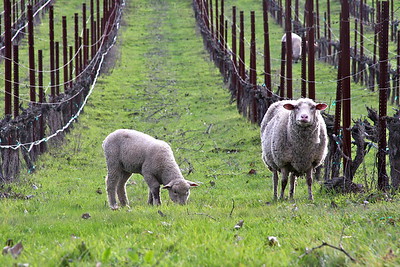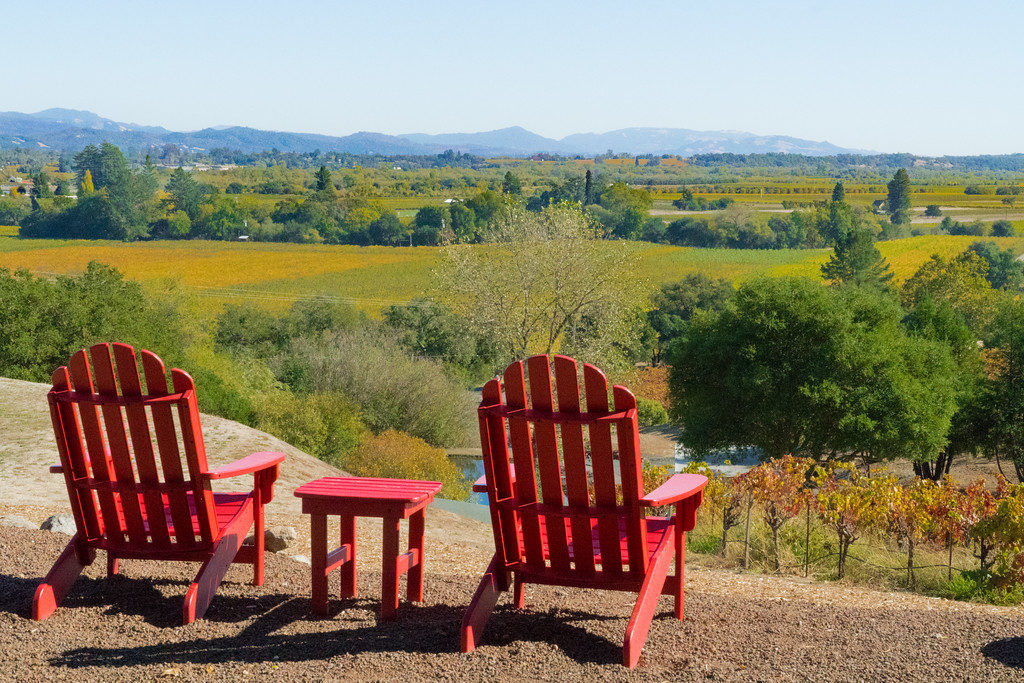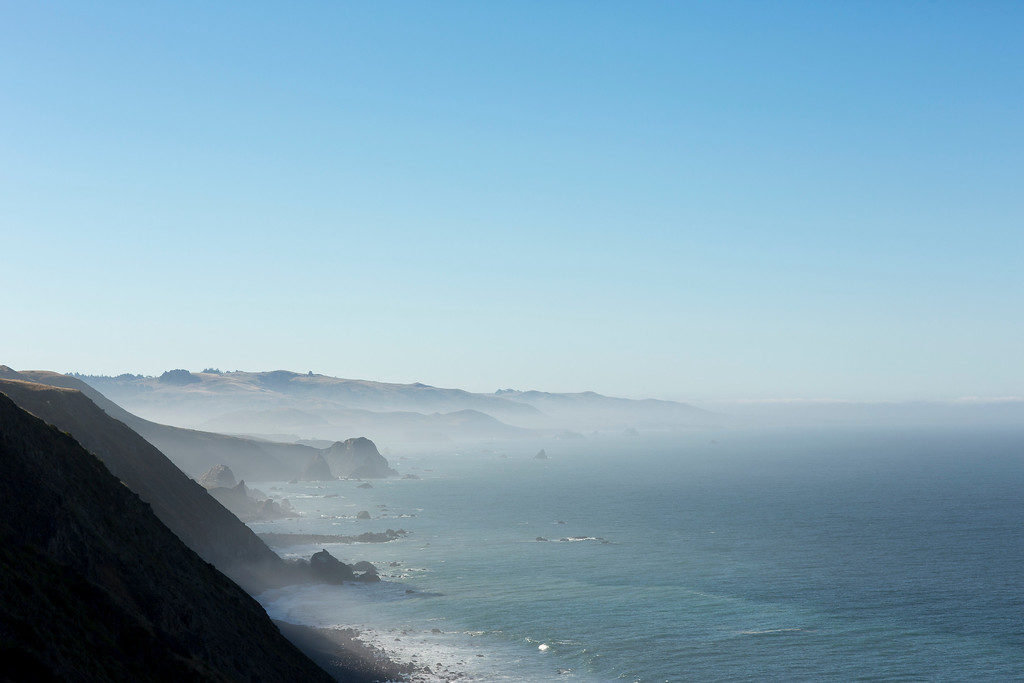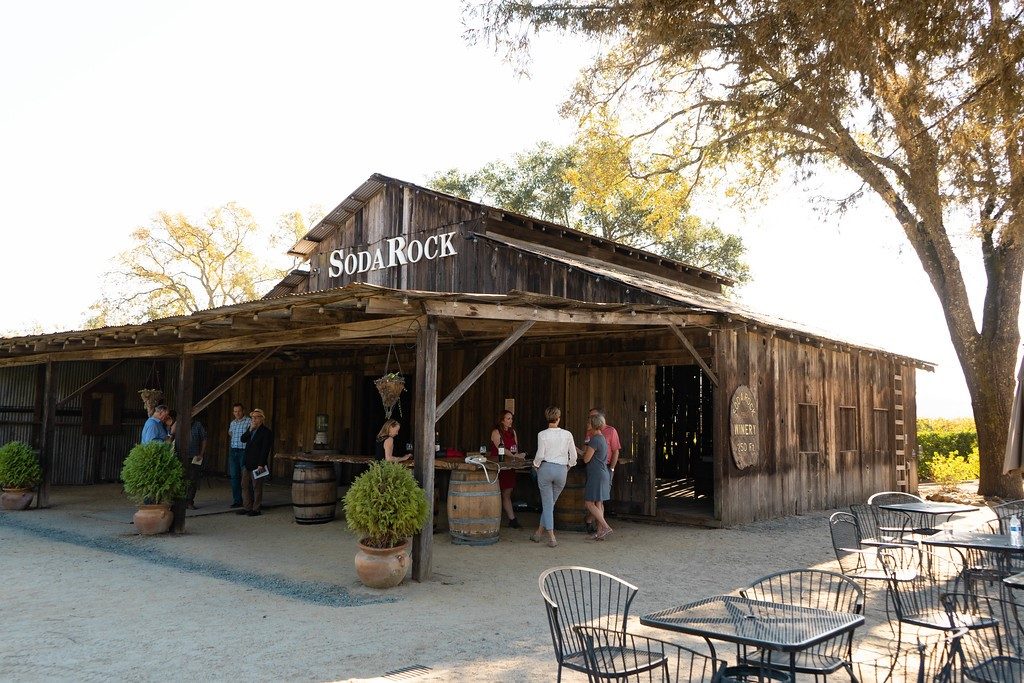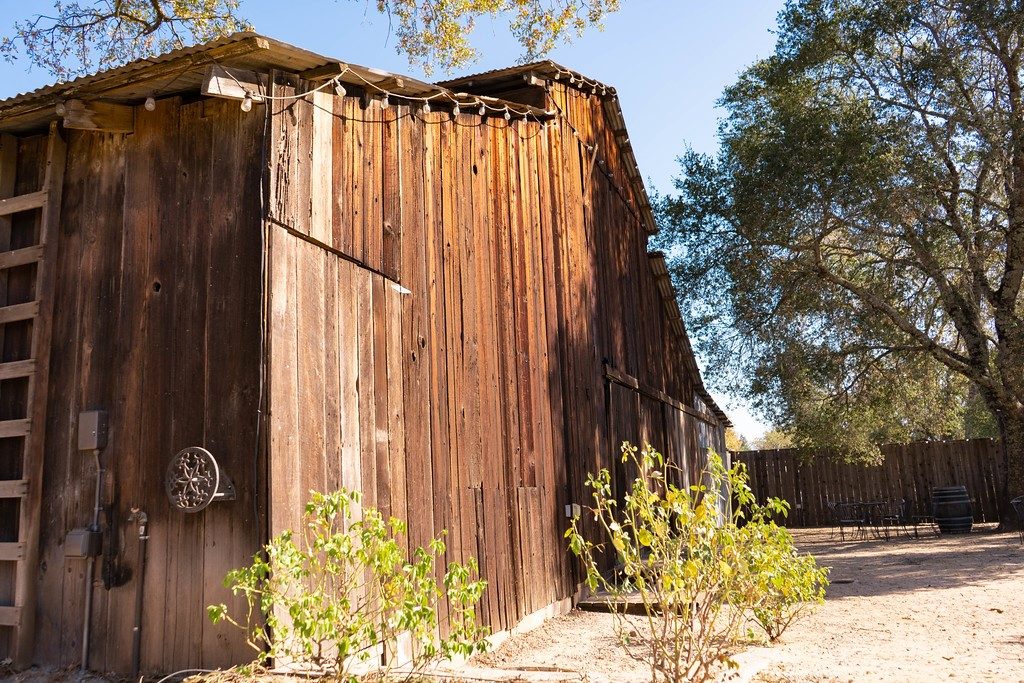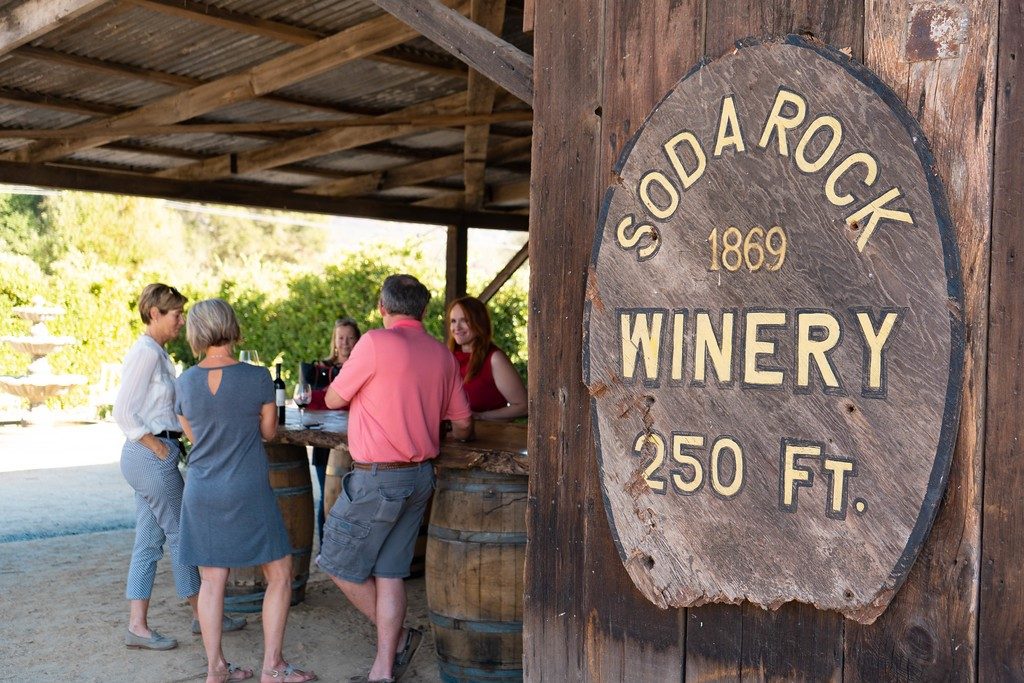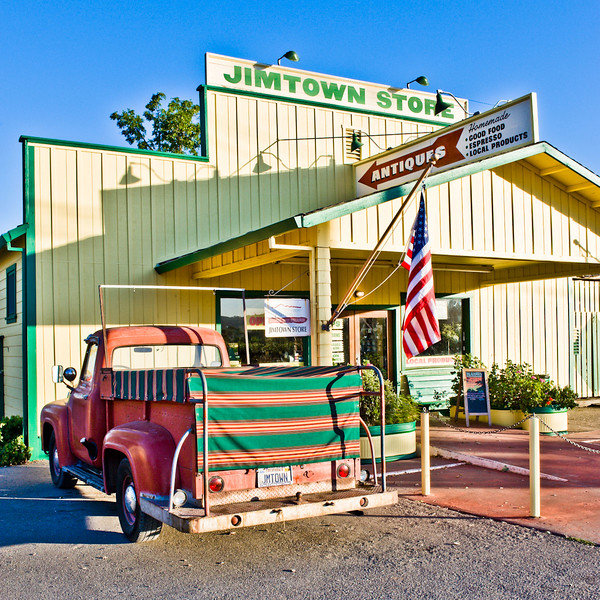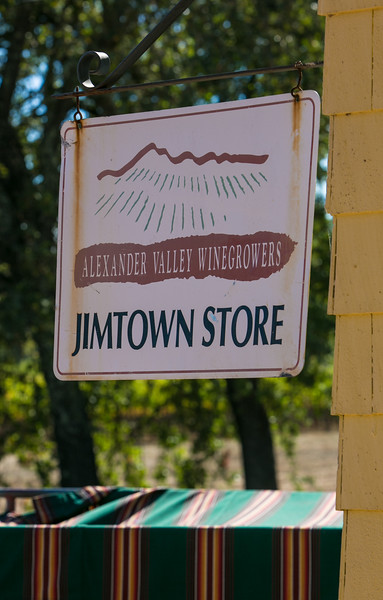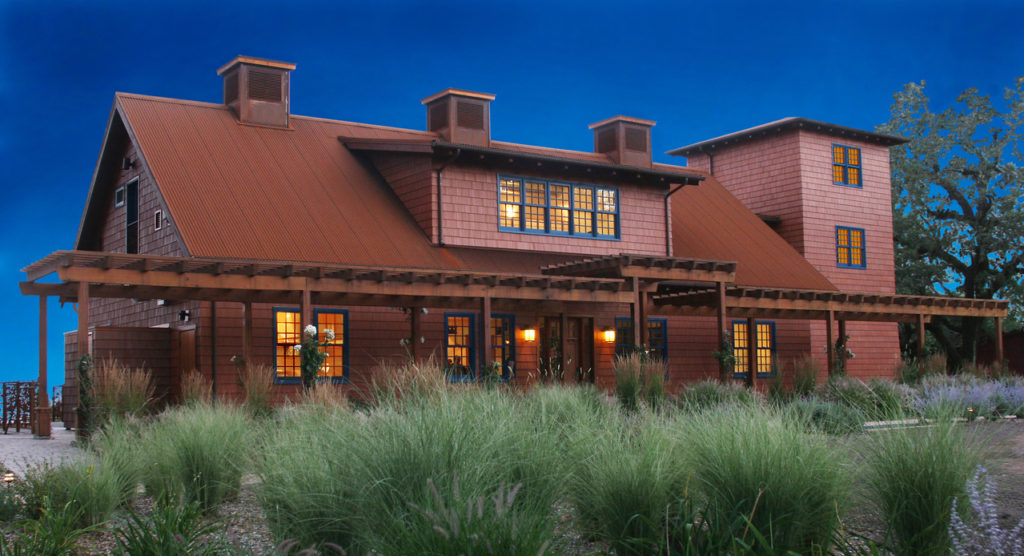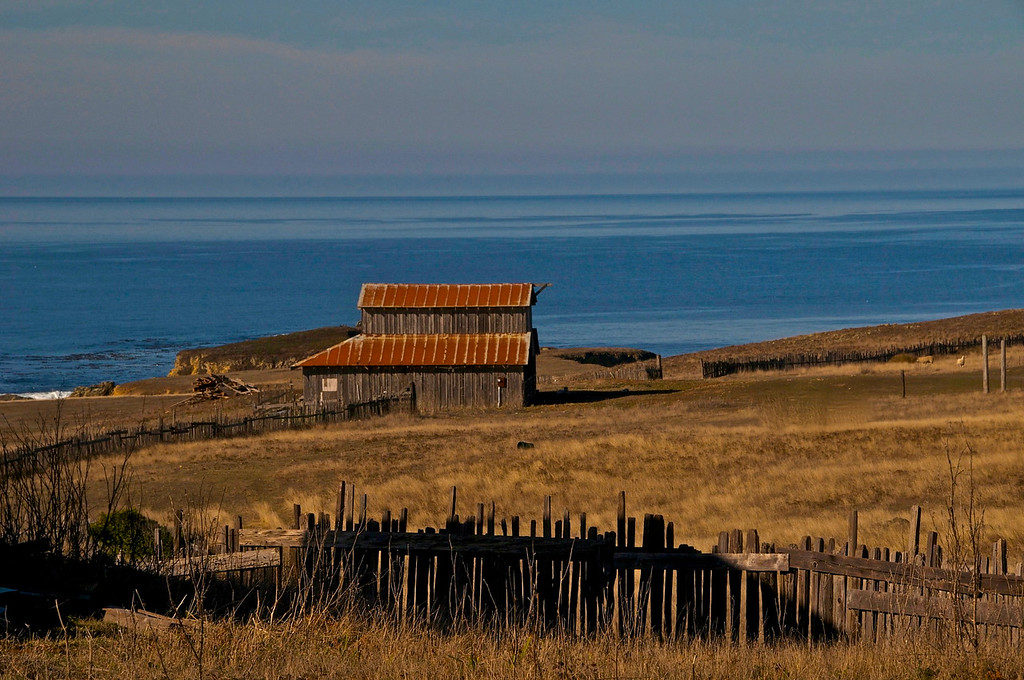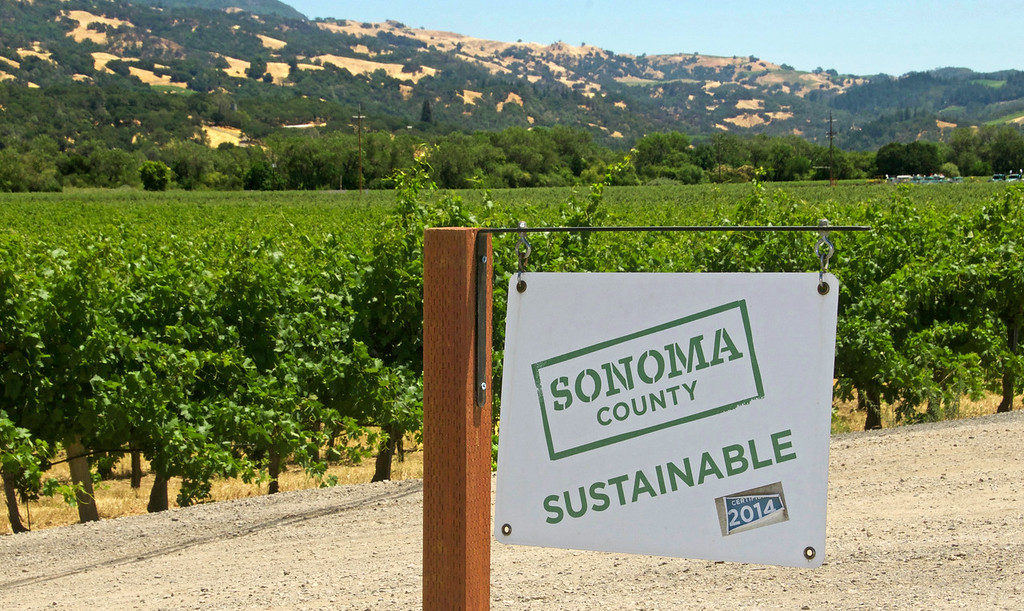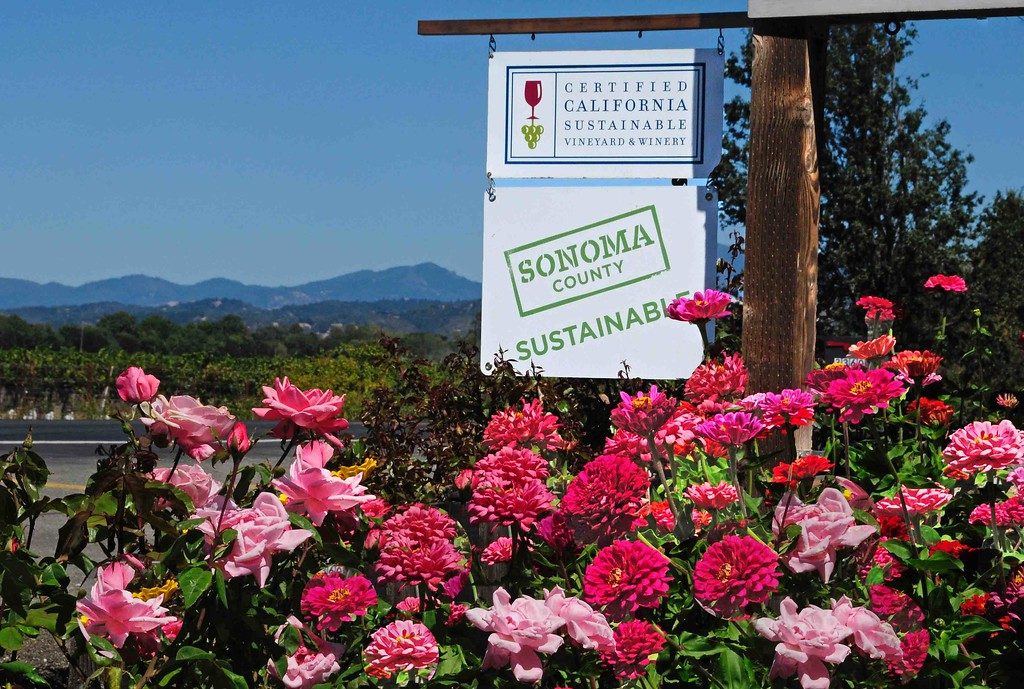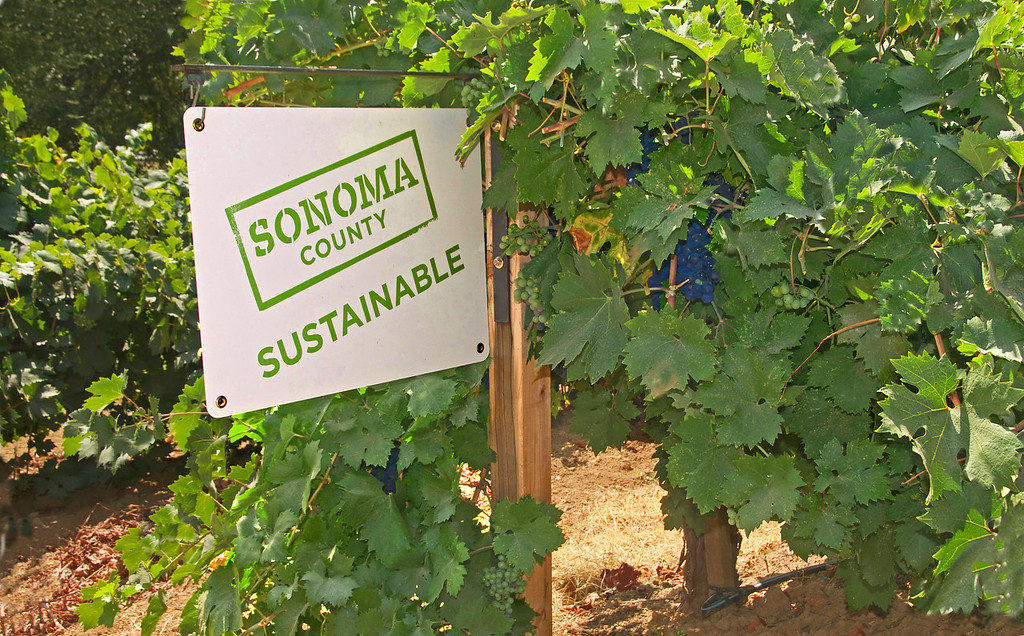Head north out of San Francisco about 30 miles and you will find yourself in Sonoma County, one of California’s top food and wine destinations. It’s got some of nature’s best scenery – giant redwoods, the Pacific coastline and quaint small towns all worthy of exploring. There are world class chefs making unbelievably delicious food most often from the area’s local ingredients. And the wine!!! Oh my oh my is the wine fantastic! In fact of the 1500 wines published about in 2019 from Sonoma’s 425 plus wineries, almost 65% of them were scored 90 points or higher. Even with all of these attributes, Sonoma is still known as an approachable region to visit, and we hope it remains this way for many years to come. Sonoma farmers and vintner’s want to sustain the fabulous scenery of their county for as long as possible; so much so that 99% of the vineyards have been certified as sustainable making it the most sustainable wine region in the world.
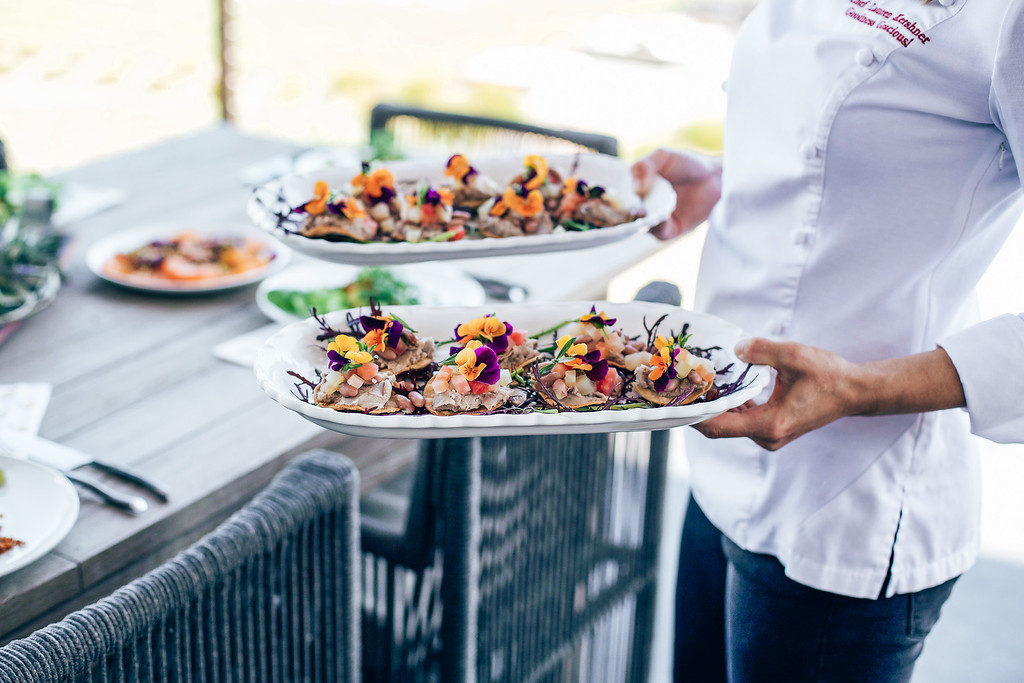
A Wine Star Award Winner!
Are you impressed yet with Sonoma County? I was sold on the merits of Sonoma when making our first visit there in 2007. It only got better on the next visits! But I am just one winelover trying to do my part in singing the praises of wine regions and wines that I love.
Wine Enthusiast Magazine editors came up with a great idea twenty years ago as a way to honor the individuals and companies that make the wine industry so successful. Their annual “Wine Star Awards” program has grown through the years and now has seventeen categories including winemakers, wineries, and sommeliers. Here are some of the categories: Life Time Achievement, Philanthropy, Person of the Year, Innovator of the Year, American Winery of the Year, European Winery of the Year, Winemaker of the Year and Sommelier of the Year. There is one award recipient I have certainly helped to support – “wine.com” the Retailer of the Year! All of the recipients are chosen for their attributes, energy, courage, groundbreaking vision and business acumen. These are the people and companies who embrace wine culture and have a major impact in what is in our wine glass.
The award results appear in the special December 31, 2019 “Best of Year” issue of Wine Enthusiast. The Wine Star Award live trophy presentation takes place on Monday, January 27, 2020 at the Palace of Fine Arts in San Francisco during the 20th anniversary black-tie awards dinner.
Back to Sonoma…. “Sonoma County has been named 2019 Wine Region of the Year by Wine Enthusiast for the magazine’s 20th annual Wine Star Awards”. According to Adam Strum, Chairman and Publisher of Wine Enthusiast, “Sonoma County is one of the most diverse and progressive winegrowing regions in the world”. Sonoma’s Chardonnay and Pinot Noir is top notch and the Cabernet Sauvignon, Merlot and Zinfandel are prominent and classics. High-quality wine is now the expectation from Sonoma. The region is also one of the leaders in the wine world for best practices and a champion of sustainability. The vintners of Sonoma are also leaders in giving back to their community and have raised more than $30 million dollars from their Sonoma County Wine Auction. Sonoma is built upon multi-generation family grape growers and vintners committed to preserving the merits of Sonoma for generations to come. The Sonoma County Tourism industry also supports their visions and practices and is dedicated to sustaining the hospitality economy to the tune of $2.175 billion generated annually for the local economy, about $194 million in government revenue and supports more than 22,300 jobs. The more than 1,800 grape growers of the county, part of the Sonoma County Winegrape Commission, have the same goal which is to increase awareness and recognition through marketing and educational programs for wine consumers like us around the world. Over 250 wineries throughout the county are represented by Sonoma County Vintners who are also dedicated to telling the world about Sonoma County, one of the world’s premier wine regions!
“I would like to give a very special thank you and acknowledgment to Sonoma County Tourism. All of the wonderful pictures of Sonoma County in this article are courtesy of the media relations manager and their media library at sonomacounty.com. If you would like any travel information to help plan your trip to this wine star award winning region, please contact www.sonomacounty.com. ” You can also learn more about Sonoma County Winegrowers by visiting www.sonomawinegrape.org . Information about Sonoma County Vintners can be found at www.sonomawine.com.
Pictures of the high-quality wines of Sonoma County are taken from the forkandcorkdivine.com wine collection. These wines are patiently waiting to take their place in history when a small group of Southwest Florida winelovers gather together to taste them at “SONOMA COUNTY: A Star is born”, our own version of a “Wine Star Awards” dinner. Sorry, no black-ties involved. We are much too casual here in SW Florida!
Linda
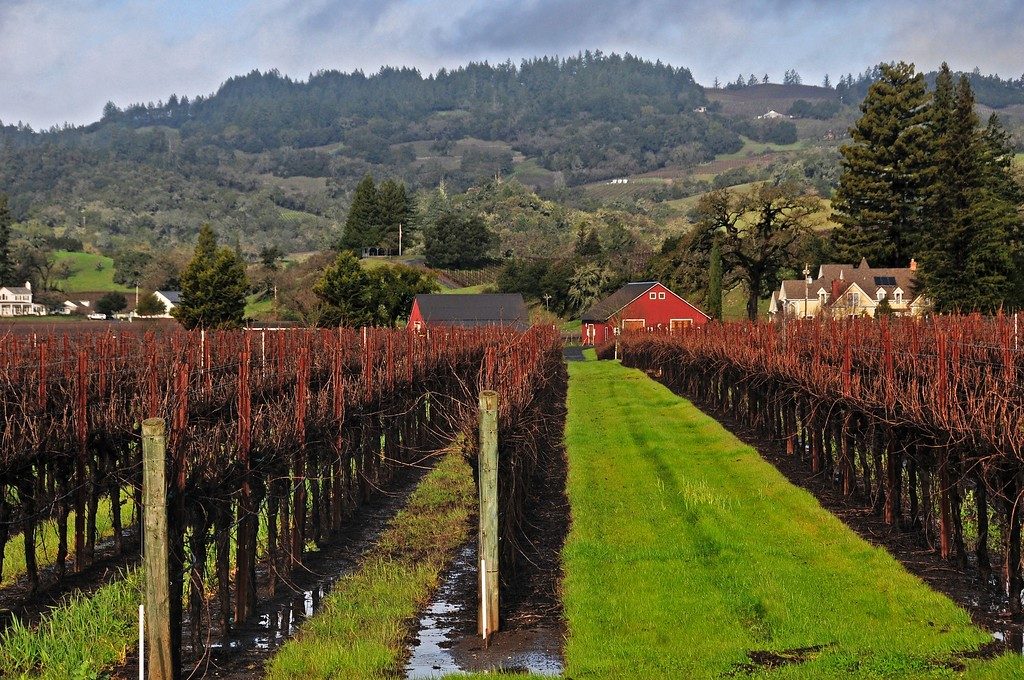
(Photo credit www.sonomacounty.com)
Sonoma County 101
Sonoma County was established in the year 1850 with 1786 square miles. It is bordered by Marin, Napa, Lake and Mendocino Counties and the Pacific Ocean and the San Pablo Bay plus it has three rivers – Russian, Petaluma and Gualala – and one lake, Lake Sonoma. According to Sonoma County Tourism, the 485,000 plus people who live here get to enjoy a mild, Mediterranean climate year round. The average high in July is 82 degrees and the average high in January is 50 degrees with an average low of 40.
There are over 1 million acres of land in Sonoma making it twice as big as Napa Valley. Because of its size and diversity in valleys, mountains, riverbeds, plains and benchlands, the 18 wine appellations (AVAs) are all quite different in their climates and soils. There are over 60,000 acres of grapes growing here even though that is just 6% of the county’s total land mass, but it is 73% of Sonoma County’s overall agricultural production. Each one of those acres can quite possibly provide us with 15,940 glasses of wine! There are 60 varieties of winegrapes planted in the county although six varieties make up nearly 94% of them. They are Chardonnay, Pinot Noir, Cabernet Sauvignon, Zinfandel, Merlot and Sauvignon Blanc.
Vineyards were planted here well before Napa; many of the vintners and winemakers are part of old established farming families. This is a very laid-back region so much different from the Disneyland-like atmosphere of Napa Valley. But that doesn’t mean they are still in the dark ages when it comes to winemaking; cutting-edge wine production is going on here as well as Napa. It just may be done by a guy or gal driving around in a dusty pickup truck – not unlike how it once was in Napa Valley (and still is in many instances). Lots of apple orchards, dairies, sheep ranches, vegetable farms and redwood forests still exist in Sonoma County. I will never forget the first time I sat under some very large redwoods! Weather here is more coastal – in the morning cooling fog rises off the coast and drifts inland. In the afternoon, there is usually sunshine – all of which is the classic formula for producing great grapes. No wonder Sonoma County has been nicknamed California’s “Provence”!
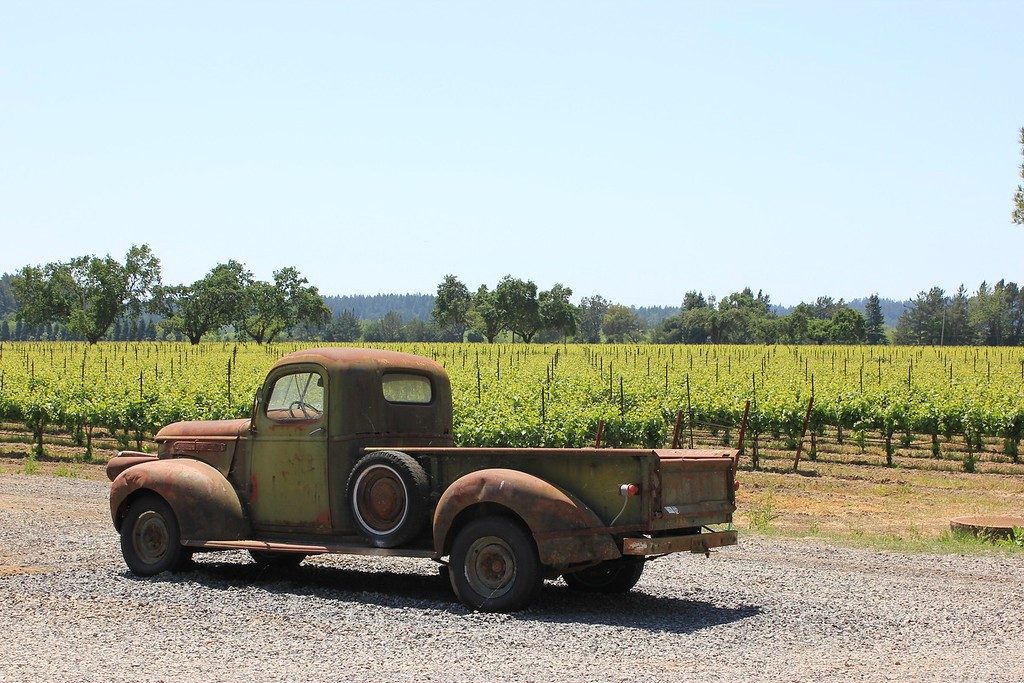
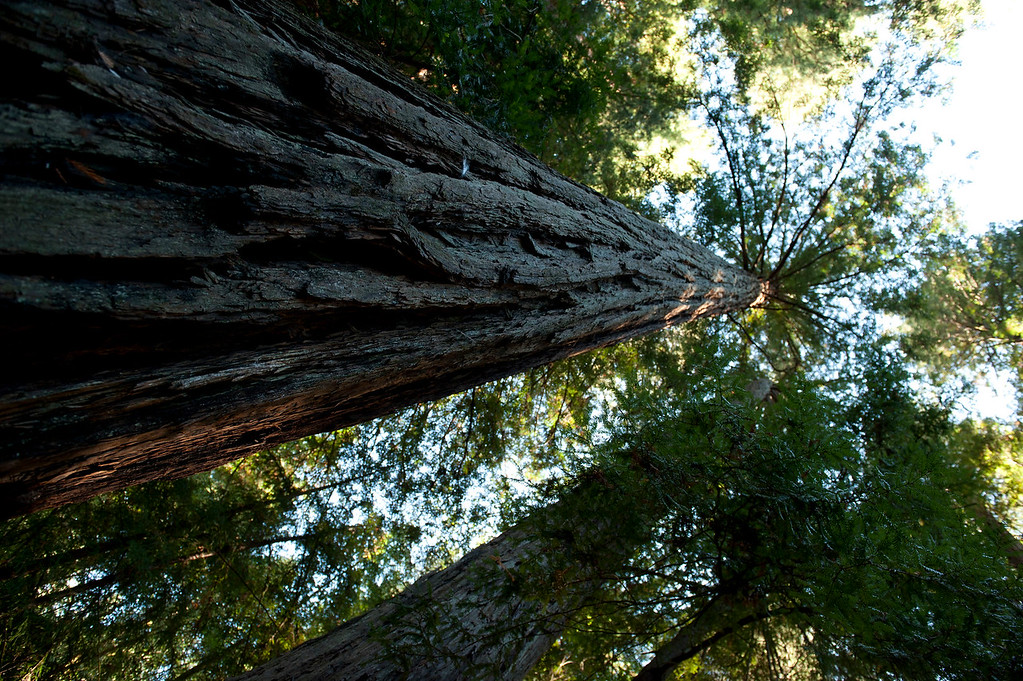
(Photos credit www.sonomacounty.com)
What’s in a name? You may subscribe to several theories; for example, that Sonoma means “valley of the moon” from the word “sono” which meant moon in Suisan, a native American tribe that lived in Napa Valley; or the “Pinocchio” theory. Some say that sono also meant “nose” and an Indian baby with a very large nose grew up to be Chief Big Nose, thus Sonoma became known as the “land of Chief Big Nose”. Then there is the one based on some twentieth century anthropologists who noted that sonoma is a common Wappo suffix appearing at the end of Indian village names. It is believed that the Wappo tribe lived in Sonoma before being pushed out and relocating in Napa Valley.
Vintners in each region came to understand their terroir and climate and often gravitated to the particular grapes out of those 60 options that seemed to thrive best. For example Alexander Valley is well known for its Cabernet Sauvignon and Russian River Valley is known for elegant wonderful Pinot Noirs. And of course, there is Dry Creek Valley famous for its Zinfandel. Russian fishermen may have planted the first vineyard in Sonoma, but the Spanish Franciscan fathers planted vineyards by 1820 around their mission San Francisco Solano. You can still see it in the town of Sonoma. When California became a state in 1850 there were vines planted throughout the northern part of the state. And then there is the “Father of the California Wine Industry”, Agoston Haraszthy – a Hungarian “entrepreneur” who lost and found his fortune a number of times. In 1857 he established Buena Vista Winery with 300 acres making it the largest winery in the state. He went to Europe to study viticulture and upon returning to California, promoted Sonoma as a viticultural paradise and so it became! Then there were famous winemakers like Ernest and Julio Gallo who began their winemaking in the Central Valley area of Modesto and later took their American dream to Sonoma. They were convinced that Sonoma grapes made great premium wines and by 1993 they owned 4000 acres of Sonoma. E. & J. Gallo Winery is now the largest winery in the world today. The company is still family owned, spans three generations of the Gallo family and employs more than 6500 people around the world. According to their company fact sheet, revised March 2019, they own 15 wineries throughout California and Washington and over 23,000 acres of vineyards in California.
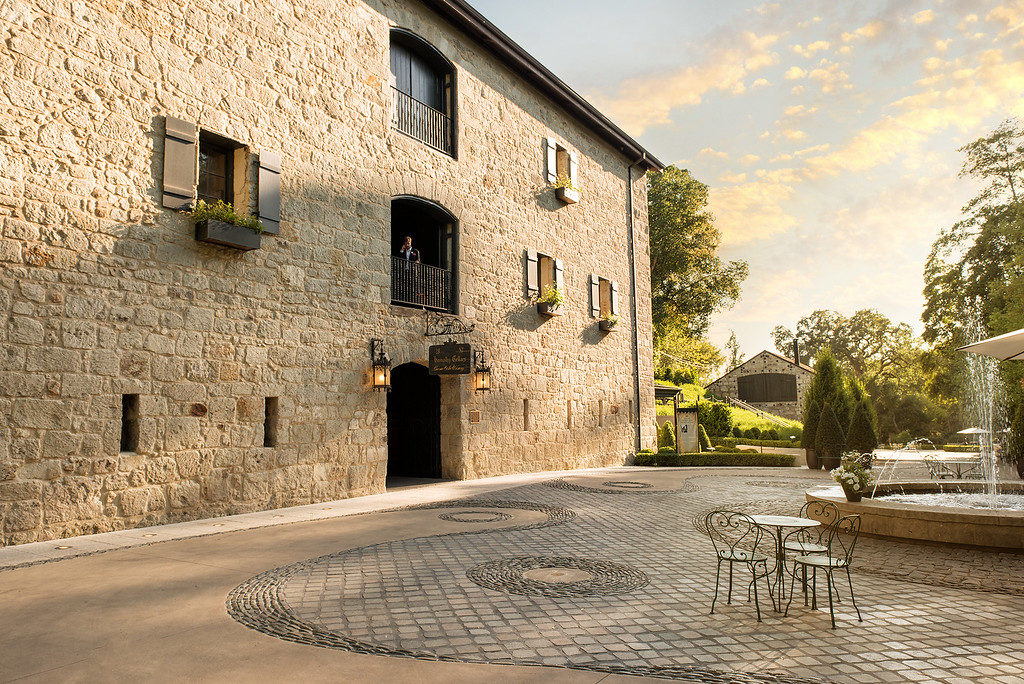
(Photo credit www.sonomacounty.com)
The Challenges of Mother Nature
Sonoma County did not come by the Wine Star Award easily! They earned every ray of it. Was the summer too hot? Did the frost come too early? Did it rain more than usual? Or maybe it didn’t rain at all! These are just some of the worries of a grape grower every year! California is known for drought conditions. Then there are the seemingly never ending wildfires. Finally along comes a flood. Through all of these obstacles, do not omit being good stewards of the land. Yes, the life of a vintner is indeed challenging!
Volcanoes and earthquakes
Northern California sits along the “Pacific Ring of Fire”, a 25,000 mile arc of volcanoes and earthquake zones from Patagonia to New Zealand and all around the Pacific Ocean Basin. Many millions of years of volcanic action have helped to create the varied and complex soils of California wine country. The North Coast landscape still contains basalt lavas, andesite breccias and rhyolite tuffs, and a thick strata of powdery white volcanic ash. The Sonoma Volcanics is the official name for the geological formation under much of the eastern half of Sonoma wine country and many parts of Napa. The mountains and hills in this area were created by upthrusts or “crinkles in the earth’s crust”. The top ridge of the Mayacamas Mountains, which separates Sonoma from Napa, is made up largely of maritime sediments on the Napa side and is more volcanic on the Sonoma side near Mt. Veeder. The Mayacamas are more uniformly volcanic moving north to Spring Mountain, Diamond Mountain, Calistoga, upper Knights Valley and Alexander Valley. Sonoma Mountain, across Sonoma Valley to the east, is also volcanic. After these areas, you will find the resulting volcanic soils on a vineyard-by-vineyard basis. Generally east of the San Andreas Fault you will find plenty of sedimentary, metamorphic and igneous rock. The area around Sebastopol used to be under the Wilson-Grove Sea about 3 million years ago resulting in Goldridge, the best sandy loam soil for Pinot Noir and Chardonnay in the Russian River Valley. There are also some volcanic soils in the Sonoma Coast AVA and in higher elevations of Carneros AVA. Moon Mountain AVA is the most volcanic and most visibly obvious in the Monte Rosso (Red Mountain) Vineyard creating some powerful well-structured Cabernet Sauvignon wines. The Sonoma Mountain AVA looks over the little town of Glen Ellen and produces excellent Cabernets as well as whites. It is not surprising that the Chalk Hill AVA consists of chalky volcanic white ash soils. Then there are the Knight’s Valley and Alexander Valley AVAs with their mixed alluvial sedimentary soil in this mainly Cabernet Sauvignon and Zinfandel country. Pine Mountain-Cloverdale Peak AVA is higher and rockier with Cabernet as its king. There are also the more extreme terroirs of Dry Creek Valley AVA and the famous Rockpile AVA. What winelover hasn’t enjoyed bold Zinfandels from Dry Creek Valley and the Rockpile vineyards looking down on Lake Sonoma? Here are just a few of the wonderful wineries with their roots in the volcanic soils of Sonoma County: Arnot-Roberts, Benziger, Chalk Hill, Lancaster Estate, Louis M Martini, Mauritson, Paul Hobbs, Pax Mahl, Pride Mountain, Ramey and Stonestreet.
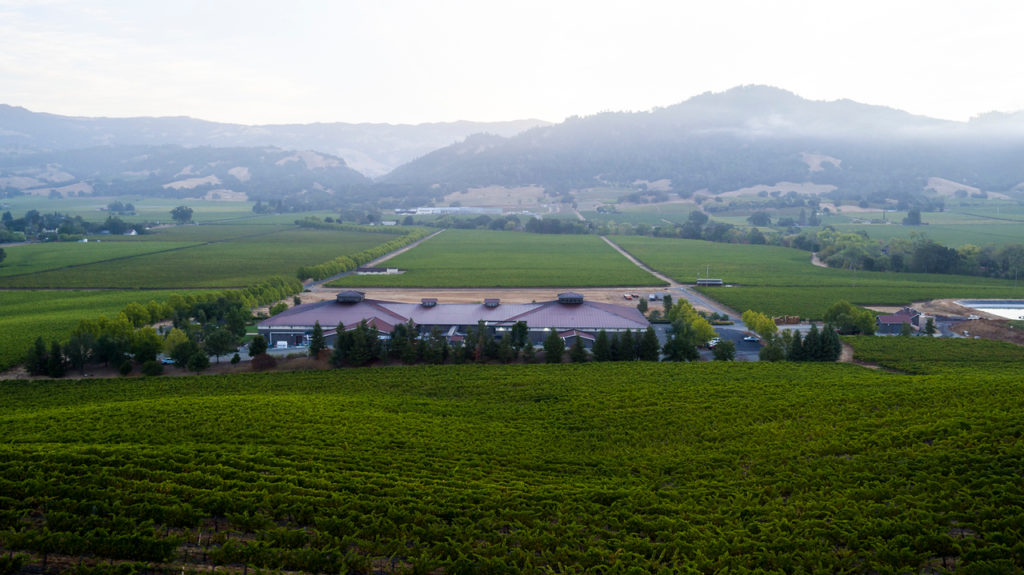
Stonestreet 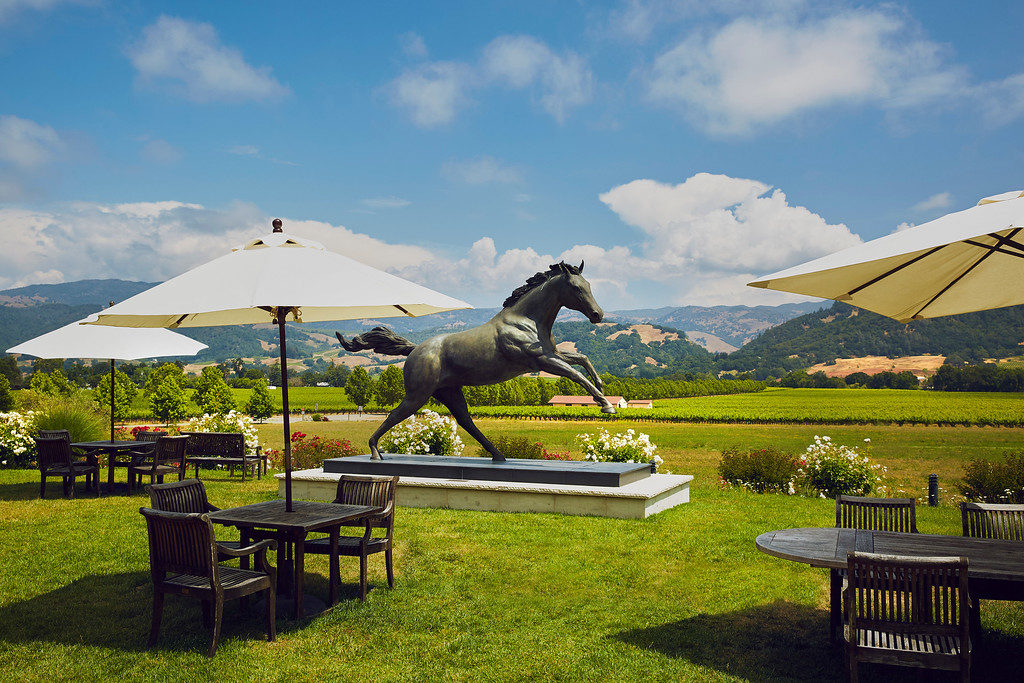
Photos credit www.sonomacounty.com
Drought
The 2016-17 year of water measurement claimed that California’s five years of drought was finally broken. In 2017 everything north of Monterey County was free from drought. However, according to the U.S. Drought Monitor In July of 2018, 85% of California suffered from abnormally dry or drought conditions, including the coast north from Monterey County which is south of San Francisco. How do winegrowers prepare for possible drought? Many years of drought have shown them the importance of conserving water even when it’s not dry. One technique is to bury the irrigation lines and measure the amount of water in the soil, then irrigate with just what is necessary. Another technique called “deficit irrigation” is to water as little as possible. This can make the vines produce smaller berries and hopefully better wine. Yet another option is to dig deeper wells to access underground aquifers, but this can cause other environmental concerns about depletion of the groundwater supply. In some other drier areas of California, the old method of capturing water when plentiful to give it back to the groundwater has been used. One farmer used floodwaters from the nearby river to submerge the vines in up to 18 inches of water which eventually seeped into the soil instead of heading out into the ocean. When they get the water, it really has to be protected!
Since the entire state is often affected in some way or other and there have been State of Emergency declarations for the state in years like 2014, the Sustainable Groundwater Management Act was created in 2014 which set up agencies around the state to manage water use. The State Water Resources Control Board enacted new regulations for water-use measuring and reporting. There are 431 recognized water basins in the state and conservation is encouraged. According to the California Sustainable Winegrowing Alliance, vintners and growers have already been focusing on this for decades out of necessity to stay in business. Conservation and new technology are key.
Sonoma County created a drought website as a resource to assist all of the county’s agricultural producers. There are many resources available through the University of California Cooperative Extension Services of Sonoma County.
Fire
Along with drought comes the increased likelihood of wildfires. According to CalMatters, a non-profit non-partisan website, there is no longer a particular time of the year for fires in California. The state has had 78 more “fire days” now than it had 50 years ago, and just since 2007 fourteen of the 20 most destructive fires have occurred in the history of the state. The worst fire year on record is 2018. Some of the state’s utility companies have received lots of press in 2019 for numerous reasons including the controversial cutting off of power in supposedly high-risk areas for days at a time.
As of November 24, 2019, 6,872 fires were recorded according to Cal Fire and the US Forest Service burning over 250,000 acres of land. Sonoma County has not escaped this natural disaster. The Kincaide fire burned almost 78,000 acres in Sonoma County by November 6.
First let’s back up to October 2017. That is when the Tubbs Fire broke out in Calistoga in Napa Valley. It then proceeded to burn down through Santa Rosa in Sonoma County, where it caused the most destruction. By the time the fire was contained, over 36,000 acres and 5,600 structures had been destroyed. Whole neighborhoods were wiped out! Several small wineries in Sonoma County were heavily damaged, but the famous Chateau St. Jean was lucky just to have cosmetic damage. And then there was Paradise Ridge with the destruction of winery buildings and three homes. Paradise Ridge is a 155 acre estate overlooking the Russian River Valley with a two story LOVE sculpture which made it quite famous as a wedding destination. In fact it was voted as the best place to get married in Sonoma County for 2016 and 2017. Ironically that LOVE sculpture was the only thing left standing except for a 700-square foot building and a patio pizza oven! Two years later the owners have rebuilt and their highly anticipated reopening took place December 8, 2019. “Welcome back to paradise” said owner Rene Byck. Apparently LOVE will overcome all obstacles!
Fast forward to the infamous Kincade Fire of October 2019. Although the fire damaged less than 8% of the 1 million acres that make up Sonoma County, the areas of Geyserville, Healdsburg, Santa Rosa and Windsor were threatened. Luckily the fire was kept mainly in unoccupied wilderness in the northeastern Sonoma County. Most visitors don’t travel to those areas, so the beautiful beaches, redwoods, vineyards and wineries are still ready for tourism. The people of Sonoma County want you to know that the county is very much open for your business!
Unfortunately Soda Rock Winery was not so lucky. Soda Rock is owned by the Wilson family and sits on Highway 128 in Alexander Valley just outside Healdsburg. The 150-year-old building that housed a small winery, tasting room and offices were all destroyed except for the stone façade out front and a 20,000 pound, 32 ft. wide, 20 ft. tall sculpture of a wild boar known as Lord Snort. This was once the site of the original Alexander Valley General Store and Post Office. Luckily the 150 year old barn was left standing nearby and by that same weekend the owners held an informal tasting there to sell their wine. The sign outside said: “Recovery begins/Taste today.” Just an FYI about Lord Snort: He was made by the Glen Ellen artist, Bryan Tedrick, and was first on display at the Burning Man Festival. The Wilsons bought this property in 2000 and took 10 years to restore it before opening in 2010 as Soda Rock Winery, so they are not eagerly looking forward to rebuilding it one more time. For the time being, the tasting room will be in the barn that was saved by the heroic first responders of Sonoma County.
Photos credit www.sonomacounty.com
Floods
After the drought and wildfires comes another one of Mother Nature’s “gifts”…floods! In February of 2019, some parts of Sonoma County were flooded with 21 inches of rain while 9 inches fell in Santa Rosa. Flooded driveways made it impossible to access some Sonoma wineries. The Russian River got so high it swamped over 24 low-lying towns. It reaches flood stage five times a decade, but this storm caused some of the worst damage in 24 years. Not to leave out the big city, the water level was up to car wing mirrors in San Francisco. Then don’t leave out the fear of possible mudslides where the wildfires have previously scorched the earth. There is some good news afterwards: flooded lakes and irrigation ponds help water the vineyards during the upcoming growing season. And grapevines were dormant during the flooding and there was little or no immediate effect on the 2019 crop, just the need to repair erosion sites and clean up debris. Not all wineries were so lucky especially those in the path of heaviest rain. The Russian River swelled to 13 feet above flood stage in Guerneville and Monte Rio putting homes and businesses under water. Some wineries and hospitality centers were flooded and vineyards were under water. Sonoma County was hit with a similar raining flooding situation in 2017. Amazingly enough with this flooding, officials said the drought was still not over! Yes, no one ever said that growing grapes and making wine is without challenges!!
The 18 AVAs (American Viticultural Areas) of Sonoma County
Alexander Valley AVA
43 wineries with 14,449 acres established in 1984 as the 7th AVA
Top varietals: Cabernet Sauvignon
Alexander Valley is located at the northern end of Sonoma County and is a long warm inland valley with perfect weather for making great Cabernet Sauvignon plus some full-bodied Chardonnays. It is here that you will find the towns of Healdsburg, Geyserville and Cloverdale.
Cyrus Alexander arrived here in 1840 to manage a 48,800 acre land grant ranch for Henry Fitch who later gave Cyrus 8,800 acres as payment for his service. Cyrus was the first to grow vines in Alexander Valley. Rodney Strong is another well-known settler of Alexander Valley arriving in 1962 and purchasing land in the Chalk Hill region. Rod felt that there was potential for top quality Cabernet Sauvignon in Alexander Valley and planted 15 acres on a small hill there. The story of Rodney Strong and his wines is now a famous part of history.
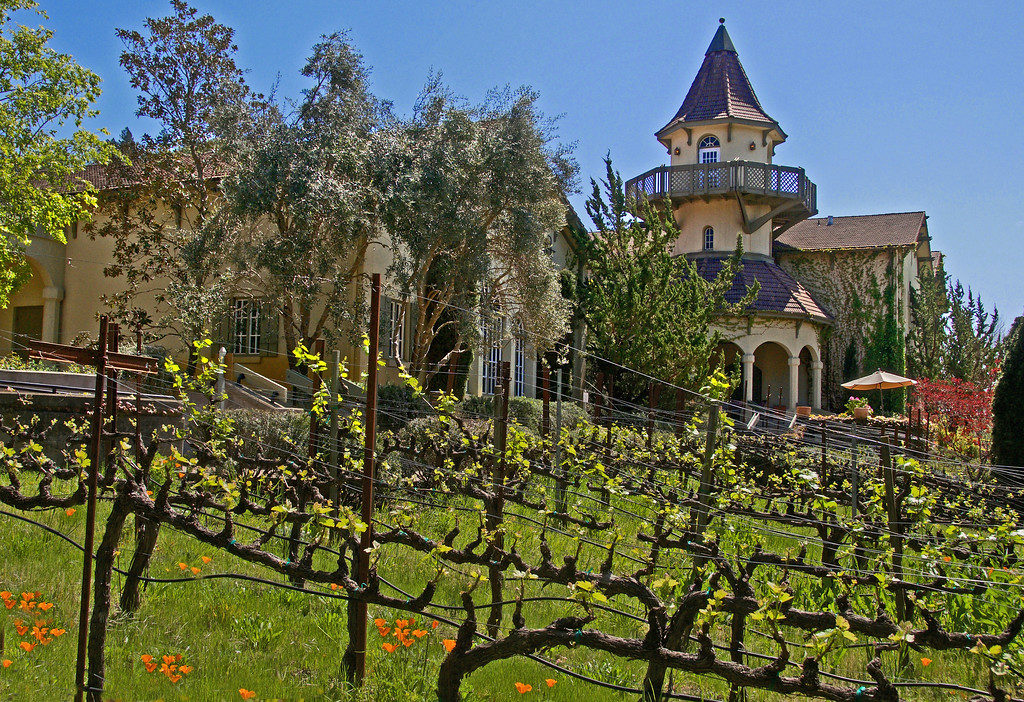
Chateau St. Jean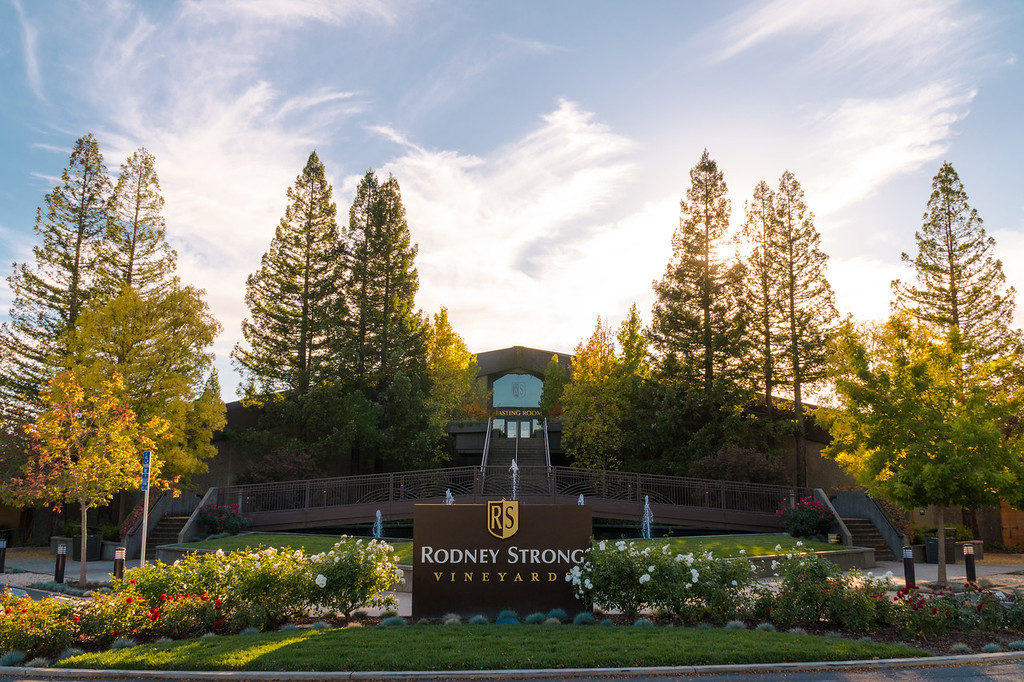
Rodney Strong
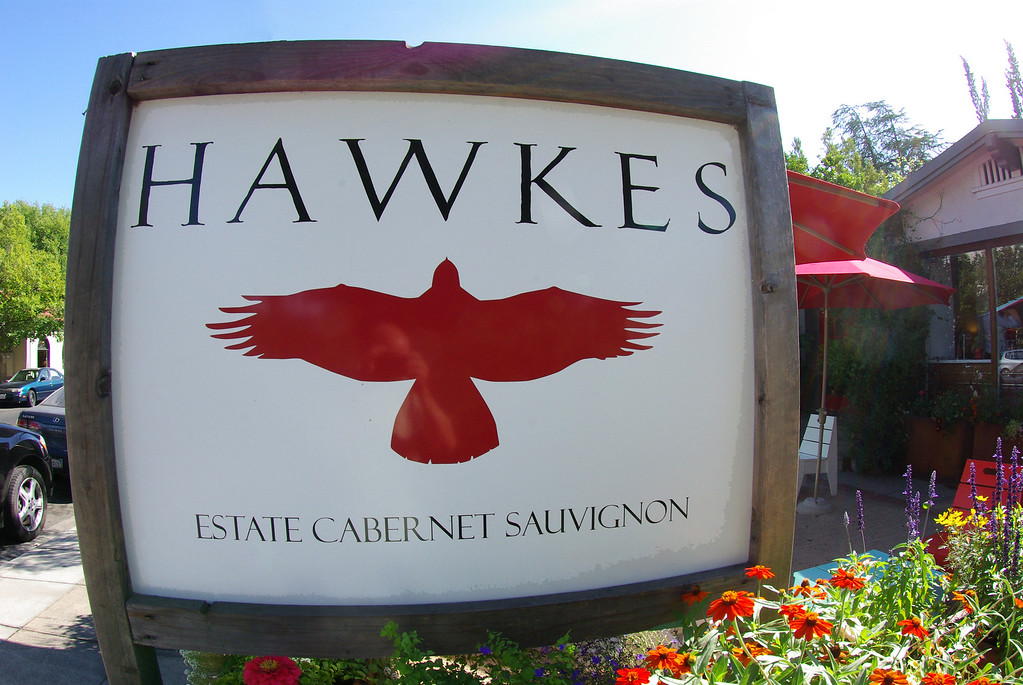
(Photos credit www.sonomacounty.com)
Another great story is that of the Young family beginning with Peter Young establishing his 200 plus acre ranch in Geyserville in 1858. His grandson Robert Young planted 14 acres of Cabernet Sauvignon becoming the first grower in modern times to plant that variety in the Alexander Valley. The Robert Young estate winery was built in 1997 and produces Cabernet Sauvignon and Chardonnay exclusively from the family property of over 150 years.
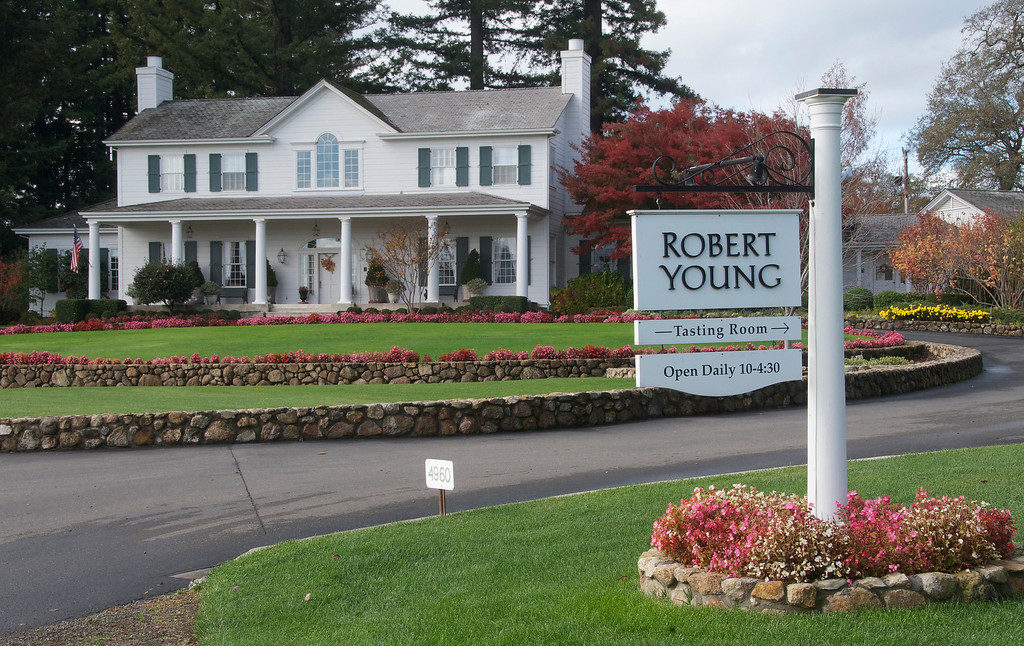
(Photo credit www.sonomacounty.com)
Stonestreet, Chateau St. Jean, Jordan, Lancaster Estate and Silver Oak are well known by we Southwest Florida winelovers. I’m lucky enough to say that I’ve only missed touring and tasting in one of them. Sorry, Jordan – I hope to see you on a return visit one day! A few of the other equally worthy wineries are Ferrari-Carano, Coppola, Hawkes, Lancaster Estate, Robert Young, Rodney Strong and Seghesio. Alexander Valley has come a long way from apple and plum trees to world-class wine grapes!
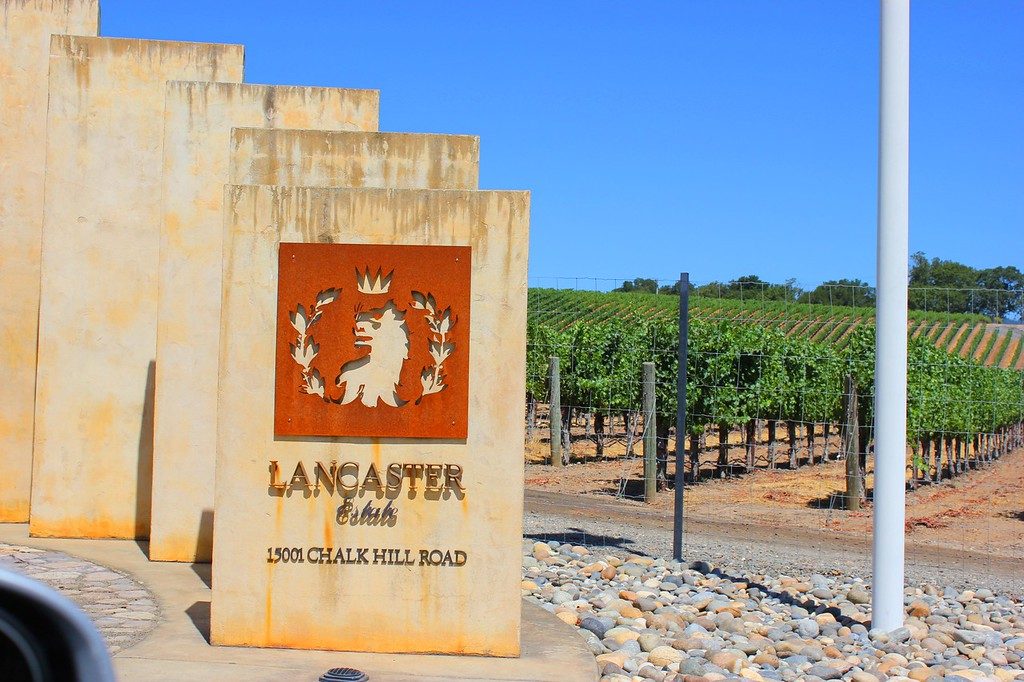
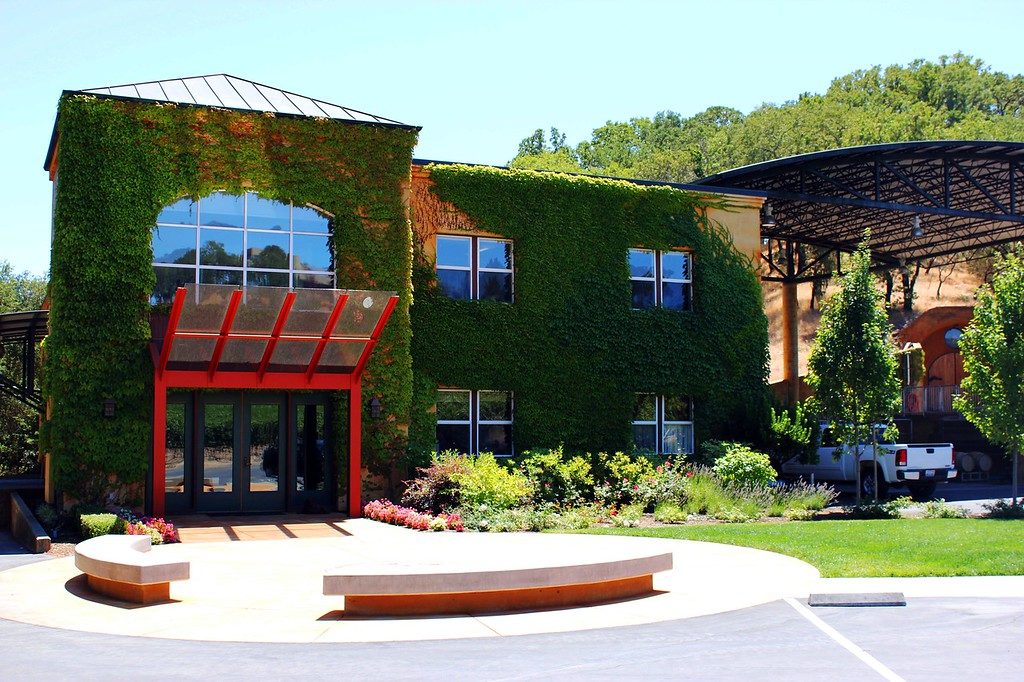
Lancaster Estate 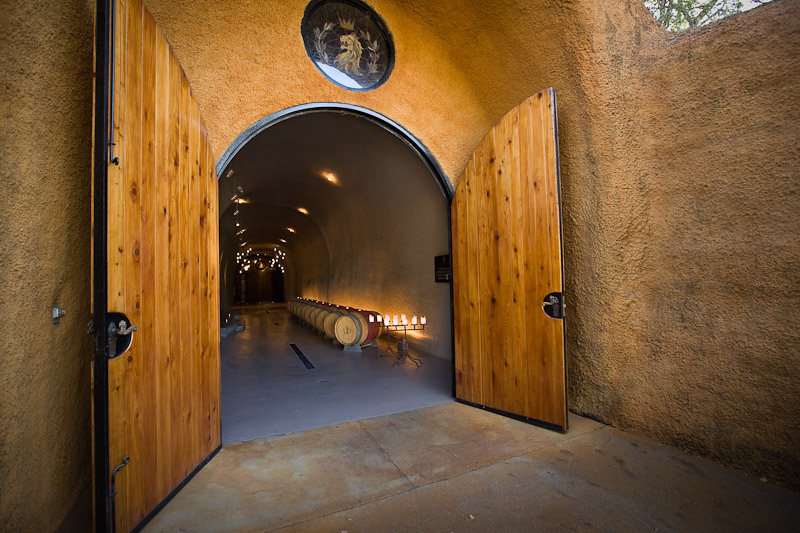
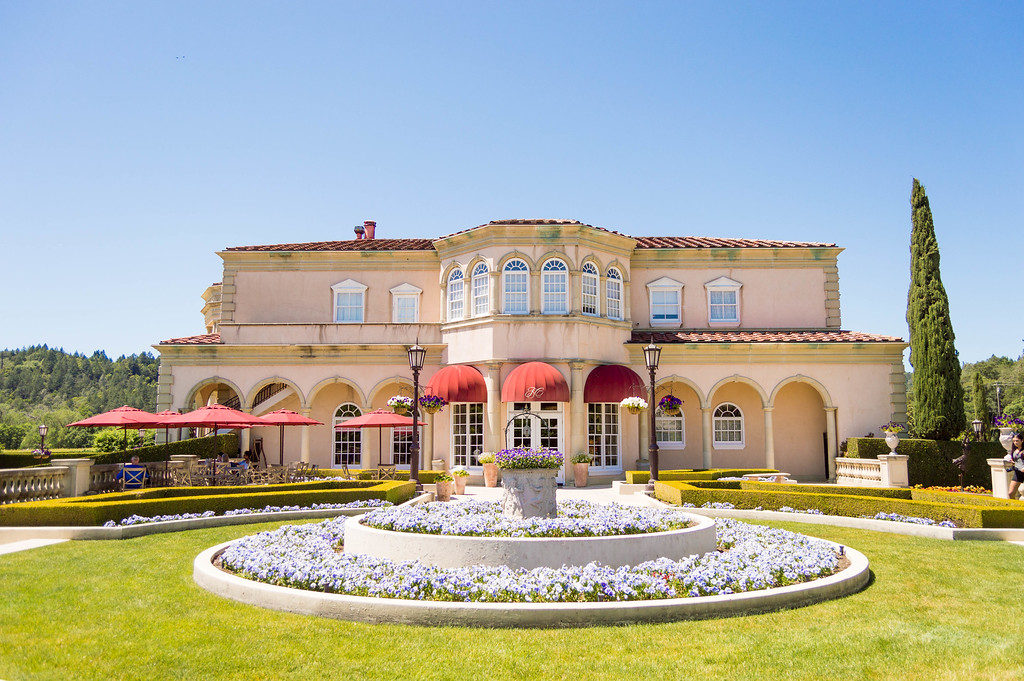
Ferrari-Carano 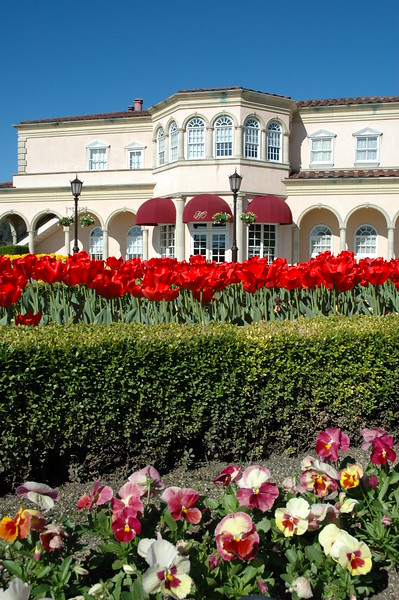
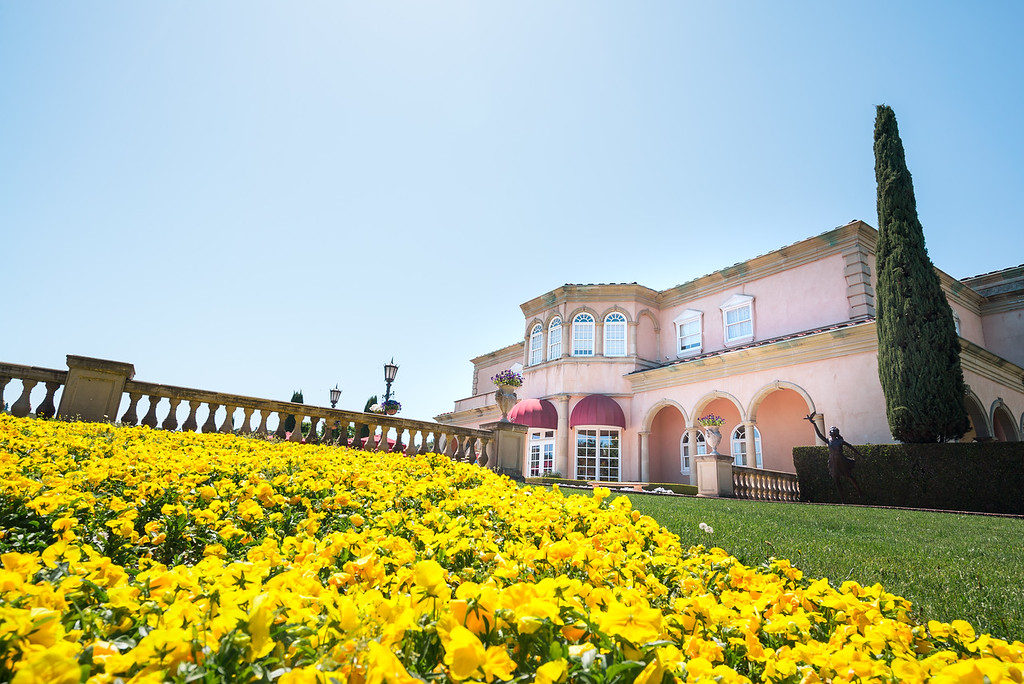
Photos credit www.sonomacounty.com
One Alexander Valley winery that I am extremely sorry NOT to have visited is Soda Rock Winery on Highway 128 outside Healdsburg. As previously mentioned, Soda Rock Winery burned to the ground on October 27, 2019 most likely caused by embers from the Kincade Fire. The 150 year old building was the site of the original Alexander Valley General Store and Post Office. All that was left is the brick façade and a 20 foot tall sculpture of a wild boar! But don’t count Soda Rock Winery out – they were already doing tastings that weekend in their barn that was miraculously left standing.
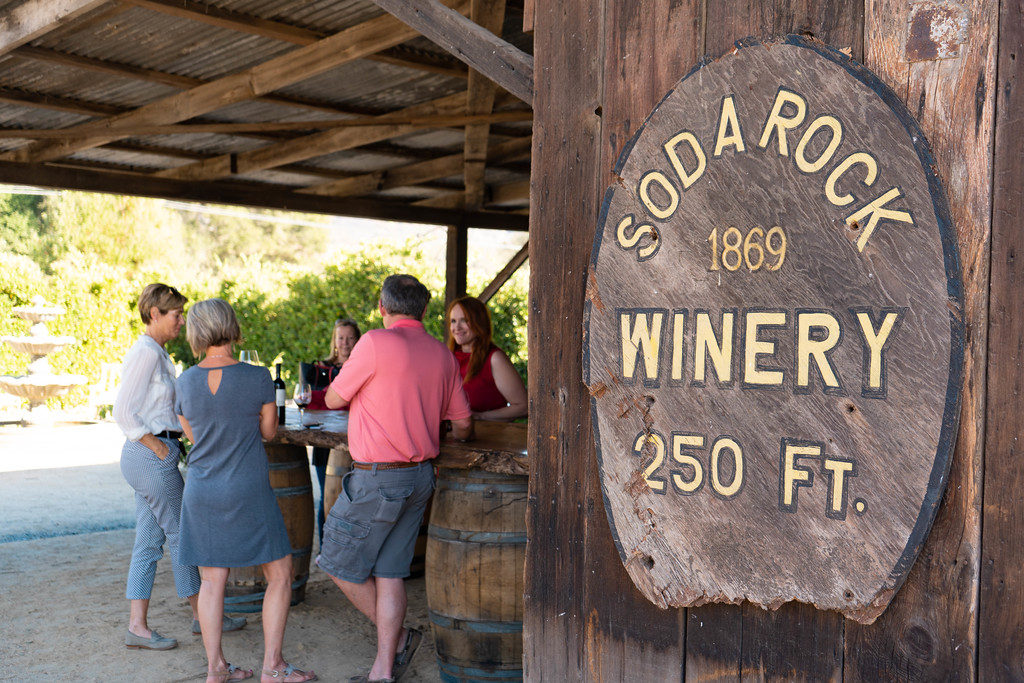
Sebastiani Vineyards & Winery
The story of Sebastiani begins with Samuele Sebastiani’s emigration from Tuscany in 1895. He worked as a stonemason, saved his money to buy land in Sonoma County and started Sebastiani Vineyards & Winery in 1904. His was the only winery in Sonoma County to continue operating during the Prohibition. Samuele made sure his neighbors had work during the Prohibition and Depression by building projects around the plaza and the church or canning fruit. His son August carried on this philosophy by having Sebastiani barrels hand-carved by craftsmen of Sonoma. You can still see them at the winery located in downtown Sonoma.
The “Original vineyard block” was planted primarily in Cabernet Sauvignon in 1961. Sebastiani created one of Sonoma County’s first varietal Cabernet Sauvignons. They continue to make varietal Cabs from Alexander Valley and North Coast plus that original vineyard now known as Cherryblock.
Bill Foley purchased Sebastiani in 2008 and continues to honor their past traditions while taking it into the future. They continue to make consistent highly acclaimed wines. The first thing he did was to cut down production allowing winemaking efforts to focus on exceptional vineyard sites and eliminating lesser quality wines. They have replanted the estate vineyards, focus on vine-by-vine farming and use a more natural approach in the cellar. Sebastiani wines are now more concentrated and complex in all tiers.
Sebastiani has been a long-term practitioner of sustainable farming working with the California Sustainable Winegrowing Alliance to continue their responsibility to protect the land with an emphasis on single-vineyard and sub-appellation wines.
2015 Sebastiani Alexander Valley Cabernet Sauvignon
The 2015 Alexander Valley is a blend of 95% Cabernet Sauvignon Blanc and 5% Merlot. It has been receiving 91 – 92 points ratings for several years now. According to the winemaker’s notes, it is rich in cassis, vanilla and cocoa powder with a focus on blackberry fruit flavors in an elegant style. We expect it to be full-bodied with a long finish and will be extremely happy if it provides all that for around $27 a bottle. It was delivered right to our door from wine.com.
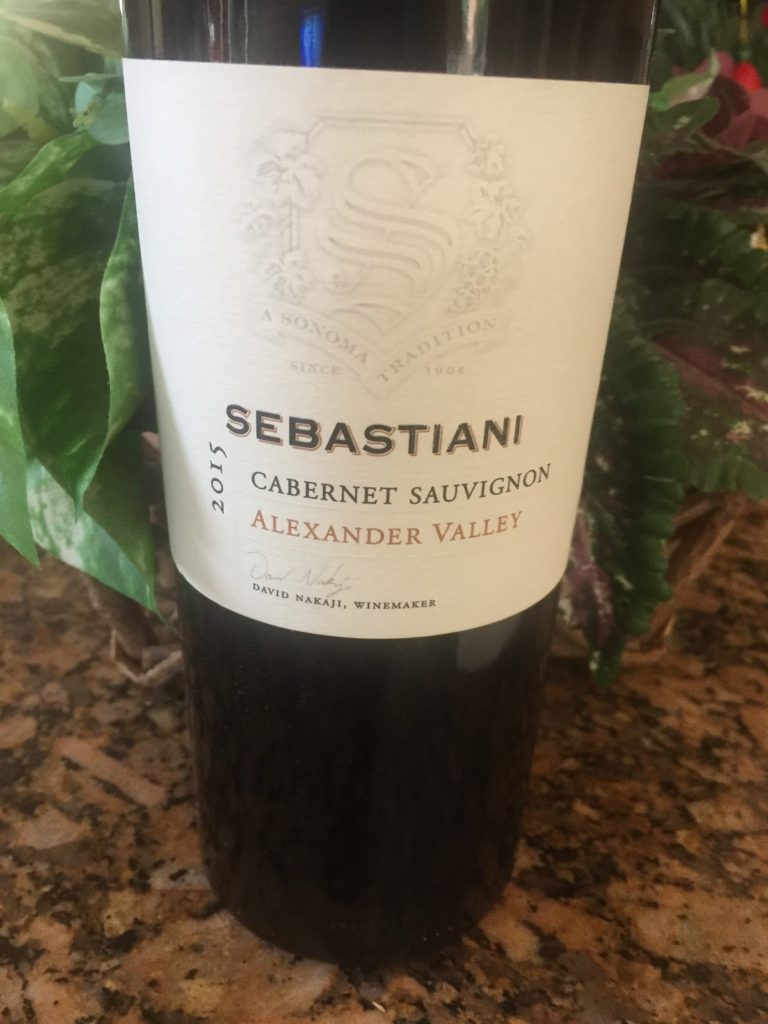
Alexander Valley AVA
(Photo by Linda Rakos)
Bennett Valley AVA
17 wineries with 700 acres established in 2003 as the 12th AVA
Top varietals: Cabernet Sauvignon, Chardonnay, Merlot and Pinot Noir
It wasn’t until the late 1970s that vineyards made a return to Bennett Valley after the combination of Prohibition and phylloxerra had gotten rid of them. Matanzas Creek Winery pioneered their return. It is now owned by Jackson Family Estates and is also renowned for its lavender fields and lavender products. Bennett Valley is located south of the city of Santa Rosa on high ground between Sonoma Valley and Cotati Valley. The valley’s volcanic soil also makes great Merlot.

Carneros AVA
22 wineries with 6481 acres established in 1983 as the 3rd AVA; shared with Napa
Top varietals: Chardonnay and Pinot Noir
The Los Carneros AVA (“the rams” in Spanish), located just north of San Pablo Bay, is shared by both Sonoma and Napa counties. Sheep ranches, dairies and hay fields dominated the region until the 1970s. This was the first wine region in California to be defined by climate rather than political boundaries. Cool fog and breezes from the bay make it one of the coolest regions in the county and a perfect location for the great sparkling wines, whites and Pinot Noirs that are produced here. Louis M. Martini bought the Stanley Ranch in 1942, started replanting vineyards, and the great Carneros wine reputation began. Several Champagne and sparkling wine producers such as Domaine Carneros, Gloria Ferrer, and Domaine Chandon saw its potential and proceeded to make Carneros a major California sparkling wine center. The Ferrer family from Spain opened Gloria Ferrer Caves and Vineyards in 1986 making it the first sparkling wine house in Sonoma Carneros. The largest part of the AVA falls on the Sonoma side and is entitled to also use the Sonoma Valley AVA designation. Napa wine producers can also use the Napa Valley AVA designation. Some other wineries to know here include Anaba, Cline Family Cellars, Donum, Jacuzzi Family Vineyards, Patz and Hall, Ram’s Gate and Schug Carneros Estate. In addition to the great sparkling wines, Chardonnays and Pinot Noirs, Syrah and Merlot are now known for their high quality.
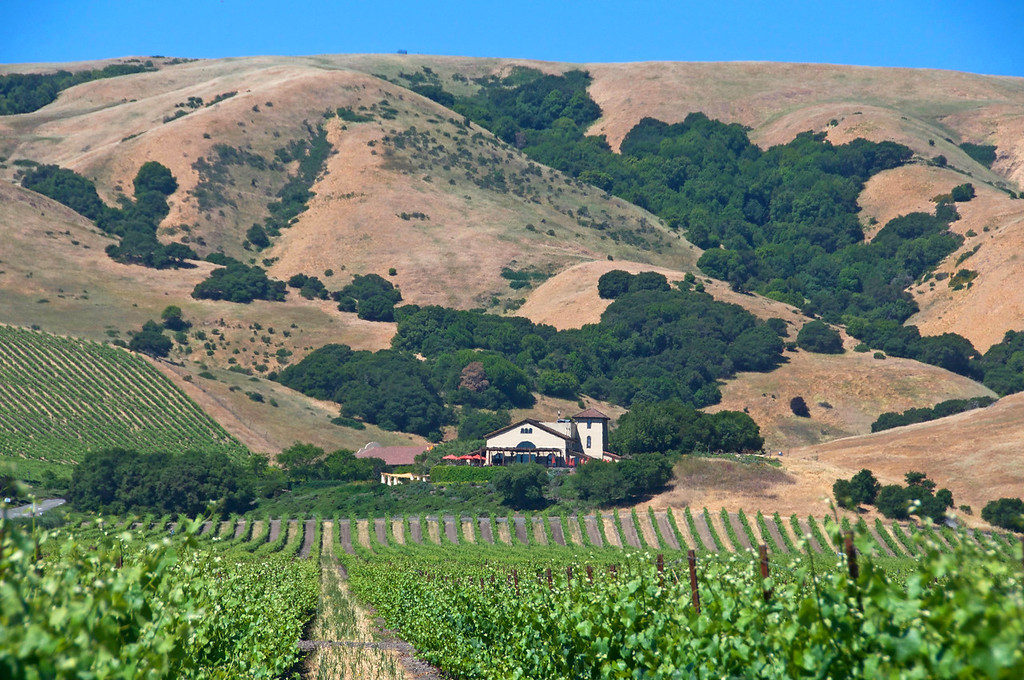
Gloria Ferrer 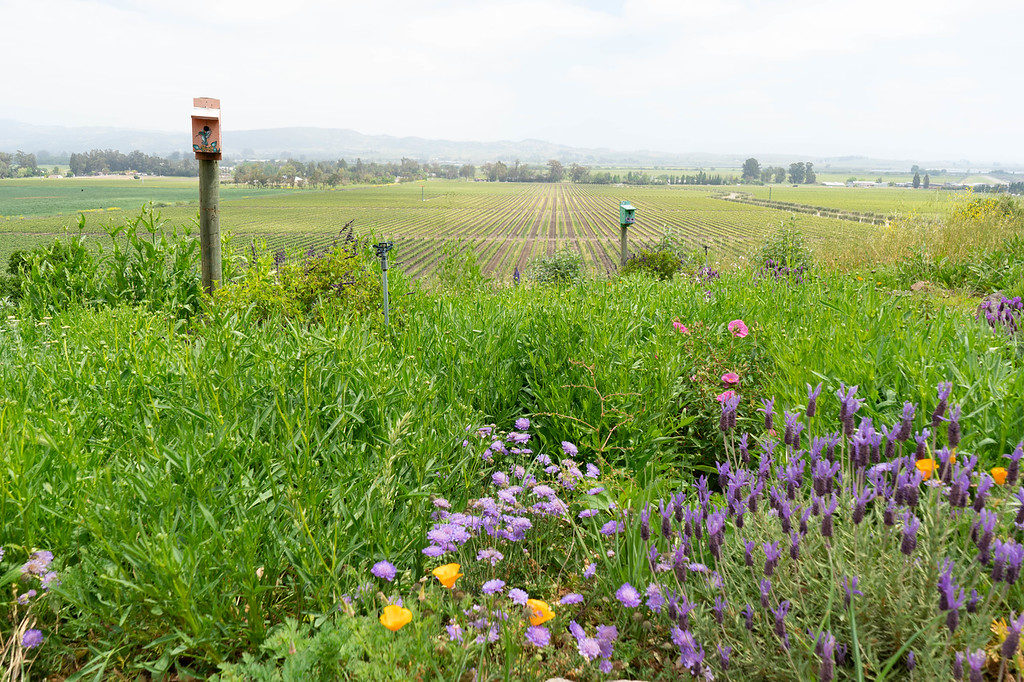
Carneros – Gloria Ferrer
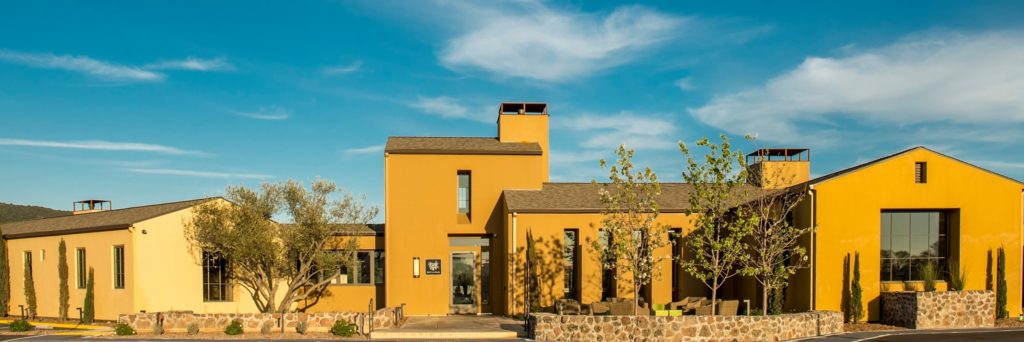
(Photos credit www.sonomacounty.com
Chalk Hill AVA
5 wineries with 1491 acres established in 1983 as the 4th AVA
Top varietals: Chardonnay, Cabernet Sauvignon, Cabernet Franc and Sauvignon Blanc
Chalk Hill may be a small wine AVA, but it is one of the most esteemed. Located in a northeast corner of the Russian River Valley AVA, it is blessed with a warmer climate and white volcanic ash hillsides from which it takes its name. Chalk Hill also produces excellent Merlot, Semillon, Syrah, Sangiovese and Zinfandel. Chalk Hill Estate was founded in the 1970s by Fred Furth and purchased by Bill and Carol Foley in 2010. Windsor Oaks Vineyards includes 210 acres of vineyards with 16 grape varieties. Because of all the varieties which they sell, you will find Chalk Hill designated wines throughout Sonoma County made by such producers as Rodney Strong and Arnot-Roberts.
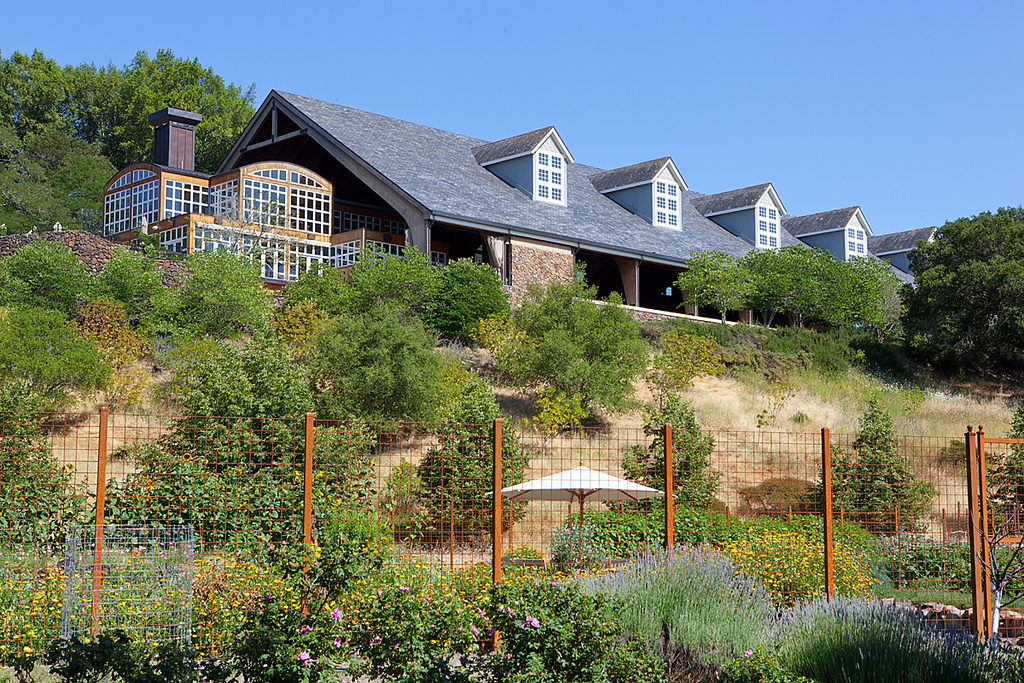
Chalk Hill Estate (Photo credit www.sonomacounty.com)
Rodney Strong Vineyards
The story of Rodney Strong Vineyards began over 55 years ago when Rod Strong, a ballet dancer, retired in Sonoma County to pursue his dream of winemaking. He started a winery and renamed it Rodney Strong Vineyards in 1980. The Klein family purchased it in 1989. Planting new rootstocks, new trellising and new varieties enabled them to focus on appellation-driven grapes such as Pinot Noir and Chardonnay from Sonoma’s cool areas, and Cabernet Sauvignon and Zinfandel from Alexander Valley – all Sonoma County.
Rod Strong was the first to plant Chardonnay in what is now the Chalk Hill AVA. Way back in 1965 he recognized the uniqueness of this region from the rest of Russian River Valley because of that volcanic chalky white ash soil which gives the wine its subtle mineral characteristics.
Rodney Strong Vineyards was the 13th winery bonded in the newly discovered Sonoma County wine industry. Through the years Rodney Strong has earned their well deserved reputation for single vineyard and reserve wines including best-in-class Sonoma County varietal wines and Chalk Hill Vineyard is certainly no exception. One of their greatest awards came in 2013 when Wine Enthusiast named it as the “Wine Enthusiast American Winery of the Year” as part of their annual Wine Star Awards.
Rodney Strong uses sustainable practices to safeguard the region’s eco-system. Their solar energy system is one of the largest of any winery in the world, and they were the first carbon neutral winery in Sonoma County.
2016 Rodney Strong Estate Vineyards Chardonnay Chalk Hill AVA
Rodney Strong’s Chalk Hill Chardonnay was made from 100% Chardonnay grapes grown in their Chalk Hill Vineyard. It was 97% barrel fermented in 100% French oak for 12 months. The lees were regularly stirred in the barrel which should give us a full and creamy texture on the palate. In our glass we expect flavors of pear, vanilla, Meyer lemon and a bit of minerality on a long finish. We also look forward to a perfect pairing with fresh crab! It is 14.5% alcohol and received several 90 point ratings. This was a $22 bottle of wine that we even got on sale for $17 from our internet go-to wine company and a Wine Star Awardee in their own right, wine.com.
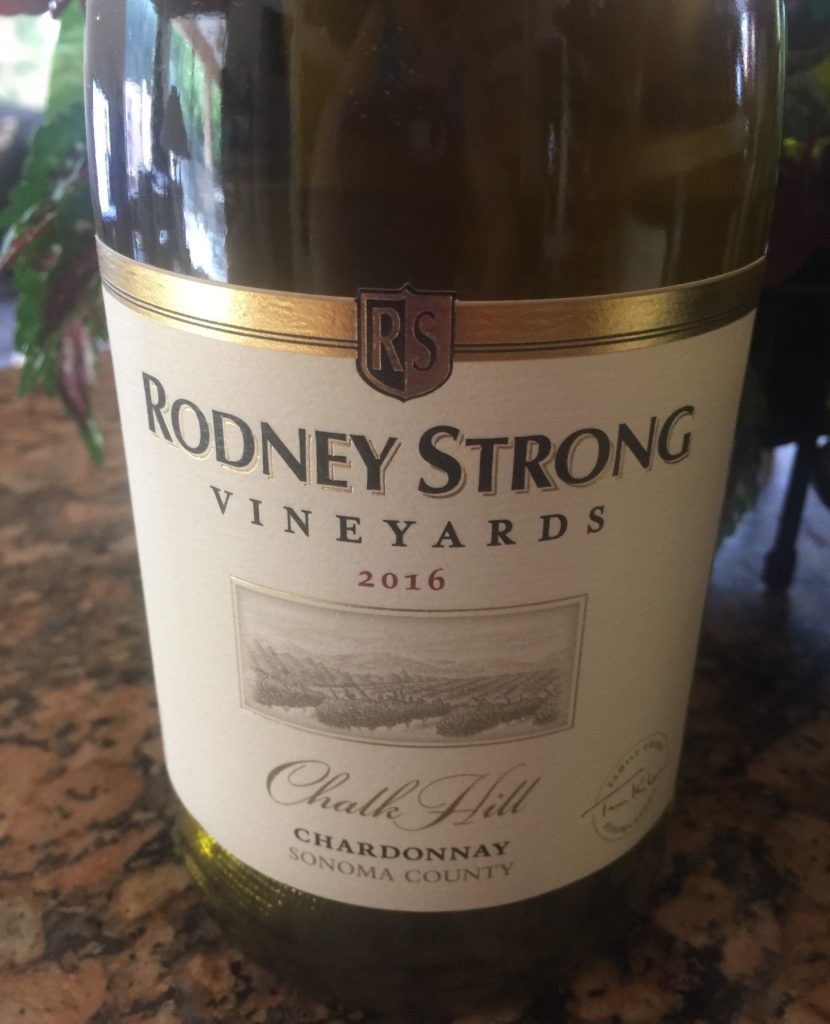
Chalk Hill AVA
(Photo by Linda Rakos)
Dry Creek Valley AVA
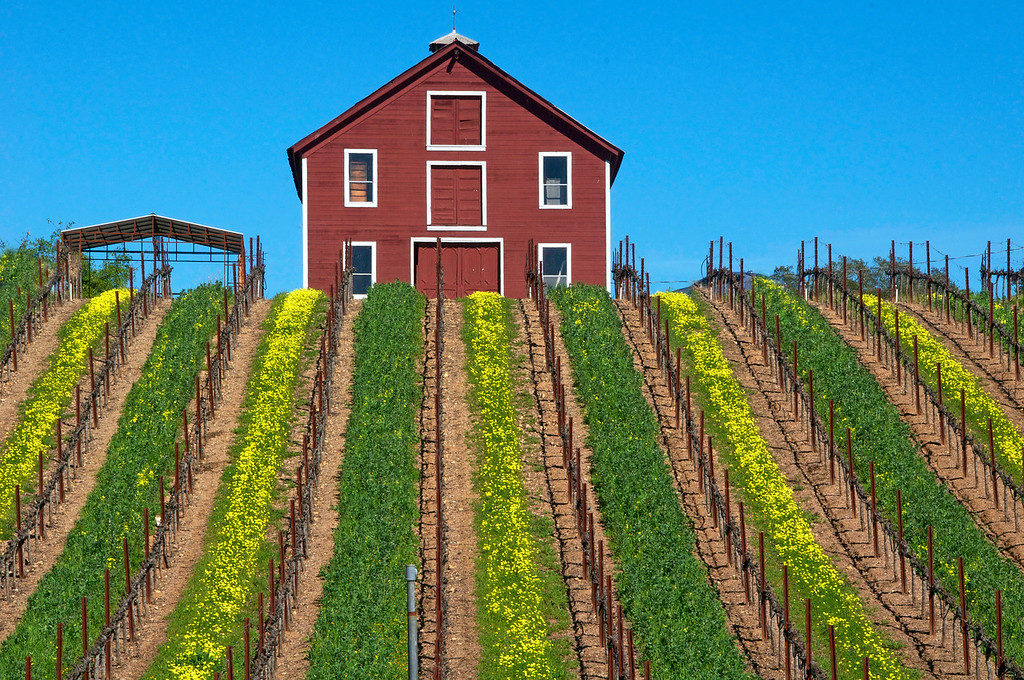
70+ wineries with 9000 vineyard acres established in 1983 as the 2nd AVA
Top varietals: Zinfandel, Cabernet Sauvignon and Sauvignon Blanc.
They have been growing grapes here for 140 years in this rural north-central Sonoma County area. That is when Italian settlers came to the valley after the California Gold Rush. It is almost like time is standing still in this valley that is only 16 miles long and 2 miles wide with all of its little rolling hills and gnarly old vines. Dry Creek Valley is located just outside Healdsburg, a wonderful little city of about 12,000 people. You can stay in one of their luxury hotels or rustic inns while you make it home base for visiting family –owned wineries and vineyards and experiencing farm-to-table dining prepared by some world-class chefs. The Russian River and Lake Sonoma are on either side of the AVA. The soil here is stony giving the concentrated fruit and flavor characteristics of Zinfandel, the king of Dry Creek Valley. Even if you think you don’t care for Zinfandel, you MUST taste the Zins of Dry Creek Valley. A. Rafanelli, Seghesio, Mauritson and Ridge make some of the best Zinfandel you can ever sip on. I can tell you that first hand as I have been lucky enough to visit, tour and taste at all of them at least once. These wines can make a Zinfandel lover out of anyone! You will see lots of gnarled old-vine Zinfandel standing on their own without trellises and some new vines planted in the traditional head-trained style.
Cabernet sauvignons are also excellent; however you don’t hear much about them. Sauvignon Blanc is grown on bottomland near the creek and it is a knockout. Some Côtes du Rhône-style blends are also gaining some momentum.
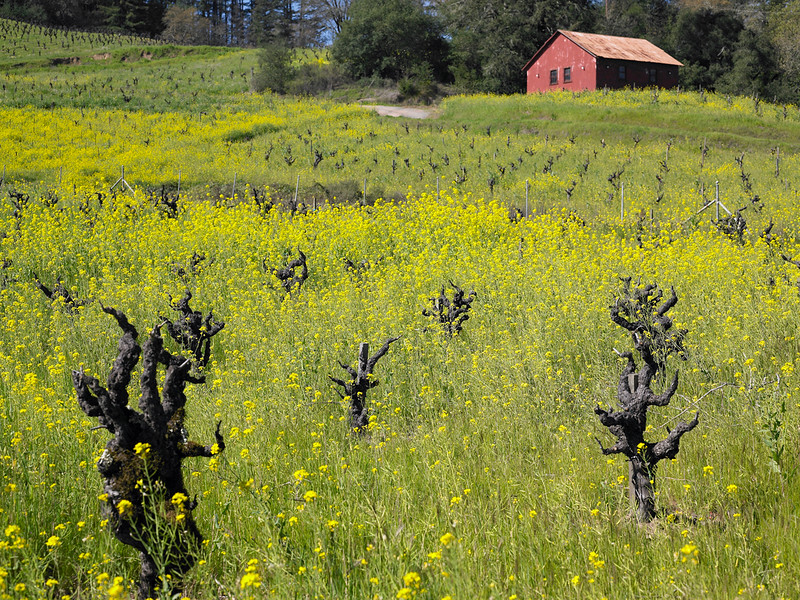
Photo credit www.sonomacounty.com
Ironically Dry Creek isn’t even dry! The Warm Springs Dam was built in the northern part of the valley in 1982 which allows for flowing water in the creek year-round. The Dry Creek AVA also overlaps Rockpile AVA in the north and there is plenty of water flowing in the Russian River of which Dry Creek is a tributary! Dry Creek Vineyard, founded in 1972 as part of the valley’s post-Prohibition renewal, even has a sailboat on its label. Pedroncelli Winery has been family-owned and operated since 1927. Ridge Vineyards Lytton Springs is famous for leading the 1970s Zinfandel renaissance. I can testify to the “gnarly” old zin vines there when I opened my car door into one in the parking lot. Thank goodness they are so sturdy as I am sure that I am not the only person to commit that crime! And then there is the A. Rafanelli Winery which was our initial entry into the world of Dry Creek Valley Zinfandel. Back in those days, winelovers knew that to buy wine from Rafanelli, you needed cash or a checkbook. No credit cards for them! I proudly got on that Rafanelli mailing list and still buy their Zins to this day. Unti Vineyards are famous for their Grenache and Syrah. One tasting experience not to miss is at Bella Vineyards & Wine Caves where the tasting rooms are in the cave and it is so worth the visit. While you are driving around in this rural valley tasting their fabulous wines, you will probably get hungry and one of the best places to get lunch is the iconic Dry Creek General Store where you can pick up your sandwiches to go.
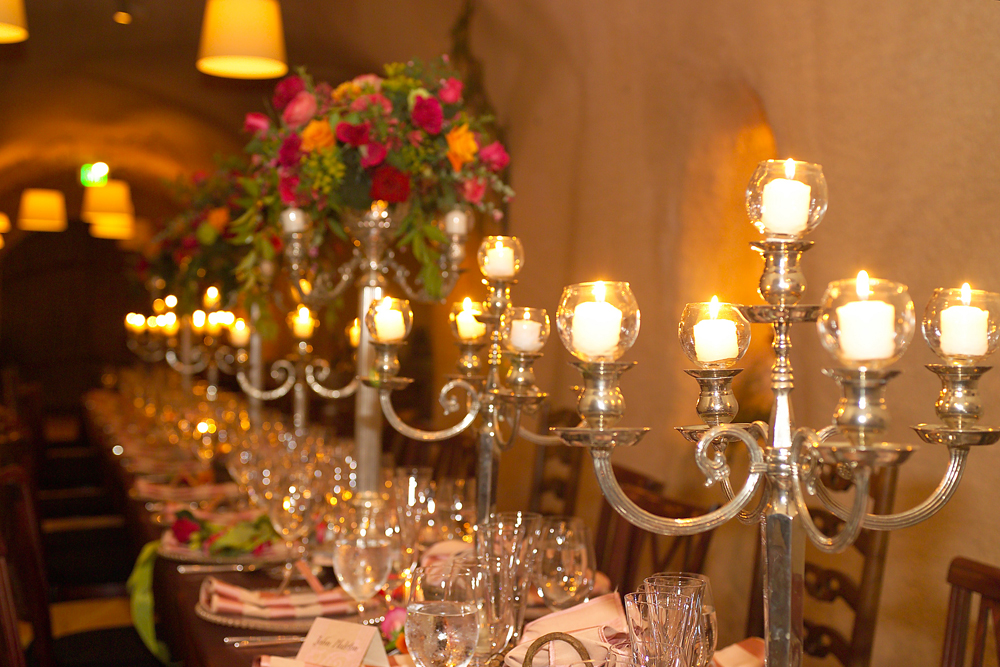
Bella 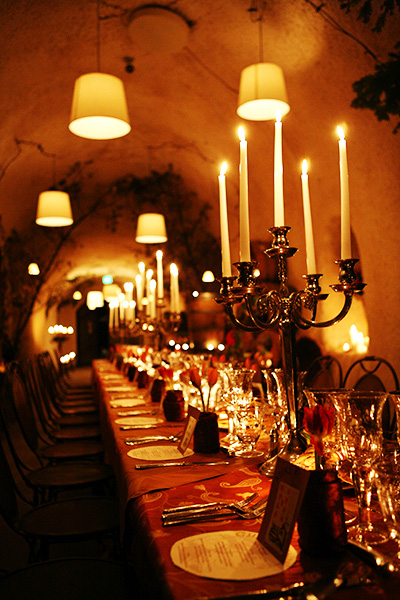
Bella 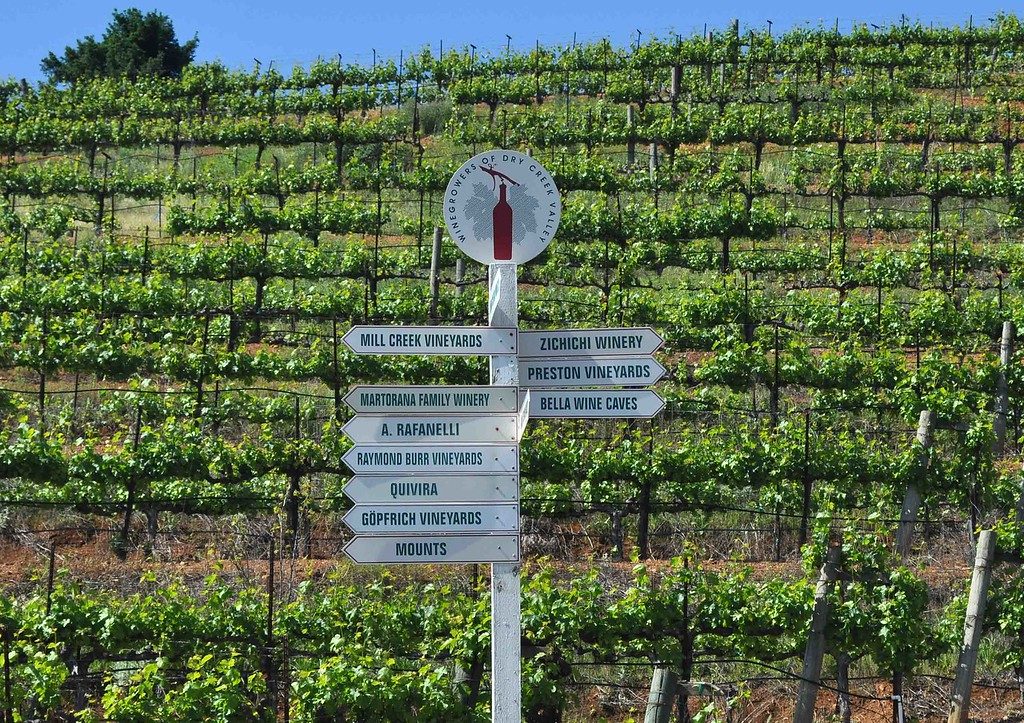
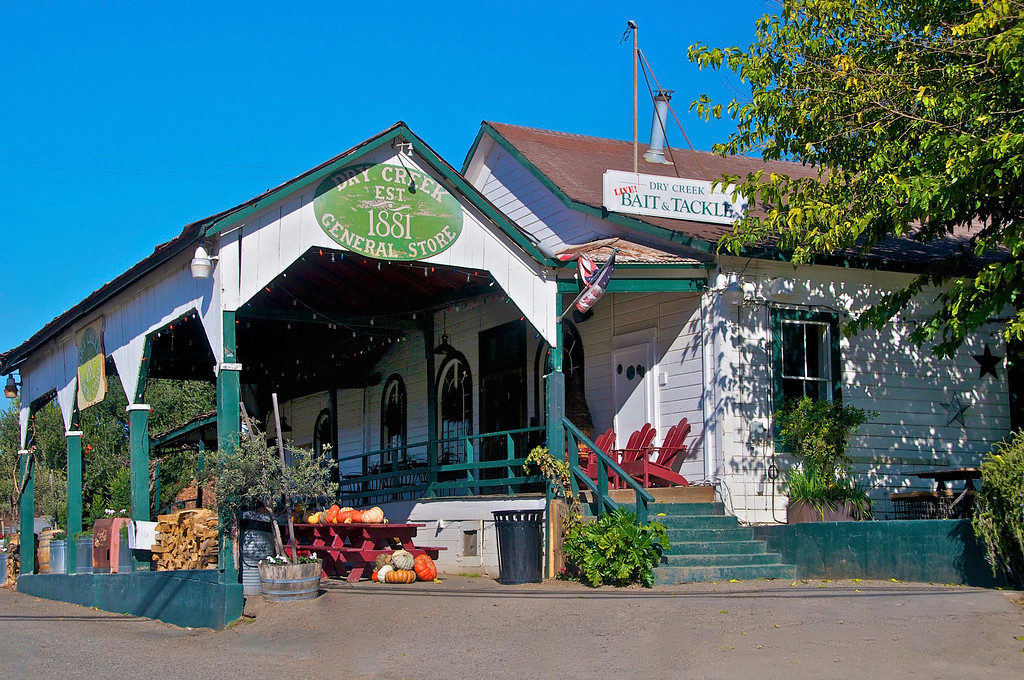
Dry Creek General Store
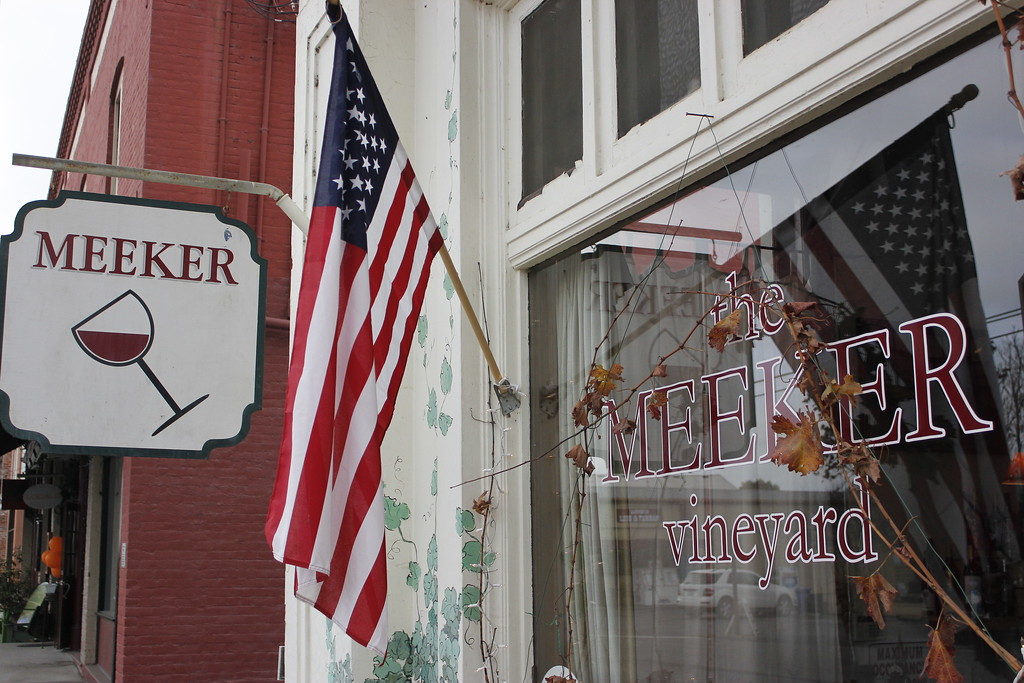
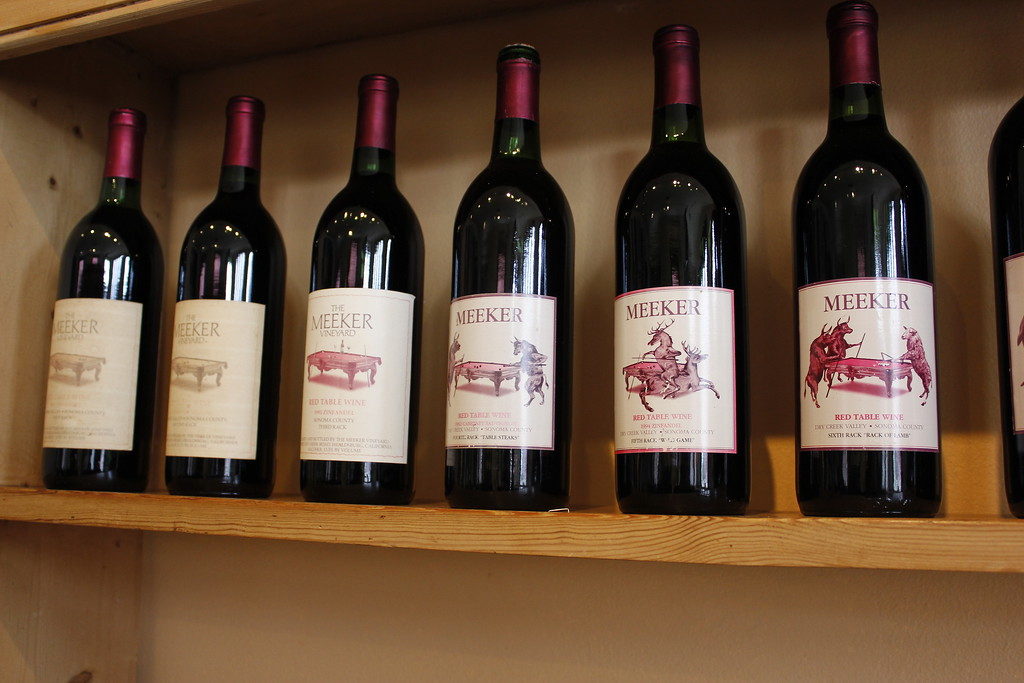
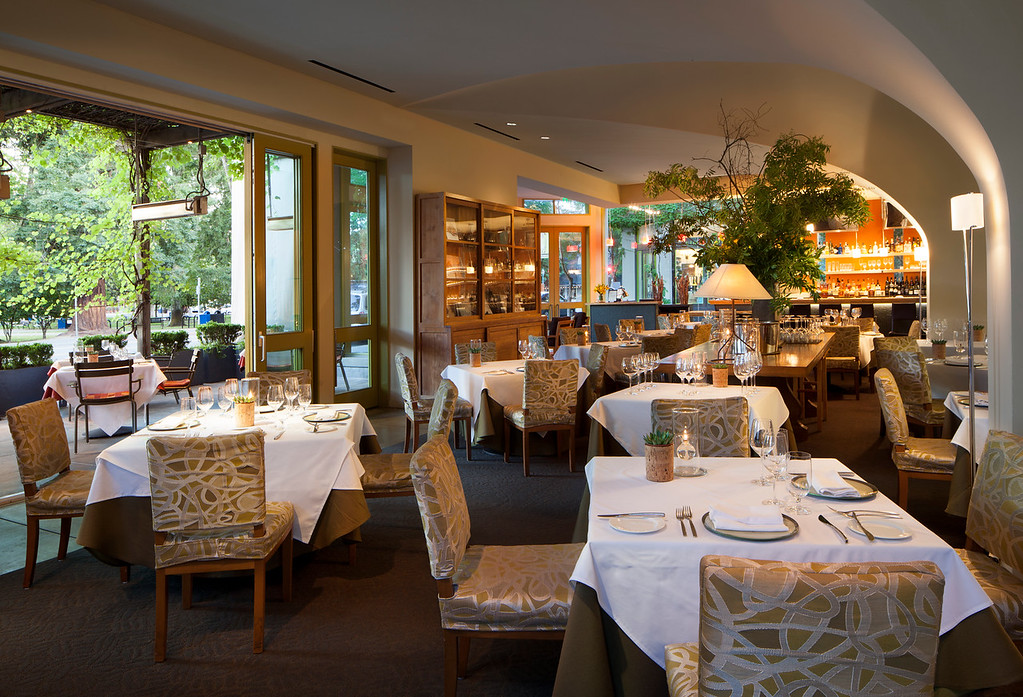
Dry Creek Kitchen 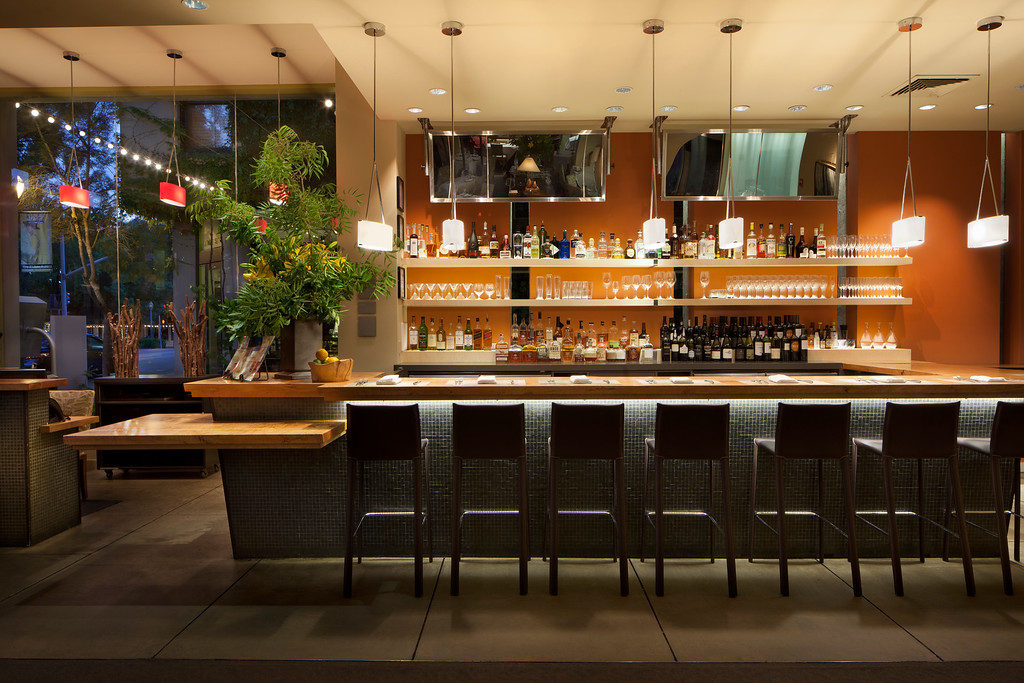
Dry Creek Kitchen
Photos credit www.sonomacounty.com
A. Rafanelli Winery
The A. Rafanelli Winery was begun four generations ago in the early 1900s by Alberto Rafanelli, an Italian immigrant. After the Prohibition, he and his son Americo moved the winery to a knoll on West Dry Creek Road overlooking Dry Creek Valley. They began to farm Zinfandel and raise a family. Their wine was first sold commercially in the early 1970s. Now Americo’s son David and his wife Patty own and operate the business. Their oldest daughter Shelly is the winemaker; her husband manages the 85 acres of vineyards and sister Stacy is in charge of daily operations. They produce Zinfandel, Cabernet Sauvignon and Merlot, and A. Rafanelli Zin is some of the best you will ever taste! Visiting their very rustic laid-back winery is an event in itself. You MUST have an appointment and unless things have really changed since I was there, you must call them. Their wine is very highly allocated! They only make about 11,000 cases a year. Generally you can only buy it at the winery or by phone; however I do see some bottles here and there on the internet. If you appreciate Dry Creek Valley Zinfandel, be sure to spend the time to get on their mailing list. If you ask for a tour of the winery, you can usually get one. We felt honored to have David take us on a tour of their cellars when visiting back in 2007. And you can believe that once I got on that mailing list, I somehow have managed to keep on it every year since! Their Zinfandels are not inexpensive. You can expect to pay between $45 and $55 and a bottle of their excellent Terrace Select Cabernet will set you back $120, not small prices for Sonoma, but worth every penny for A. Rafanelli!
2013, 2014 and 2015 A. Rafanelli Zinfandel, Dry Creek Valley AVA
Rafanelli Zins are all just under 15% alcohol (14.7%?) which is perfect for this winelover as we don’t really care for any big 16 or 17% alcohol wines any more, but they are still full-bodied, dark crimson in color with lots of black fruits, licorice and flowers on the nose. Then there are those black fruits, liqueuers, dark chocolate and pepper on the palate. These Zins age well and set a really high bar for any others from Dry Creek Valley. We are anxious to see what little differences we taste when opening this three year vertical. Our A. Rafanelli’s came direct from the winery and cost between $43 and $53 a bottle.
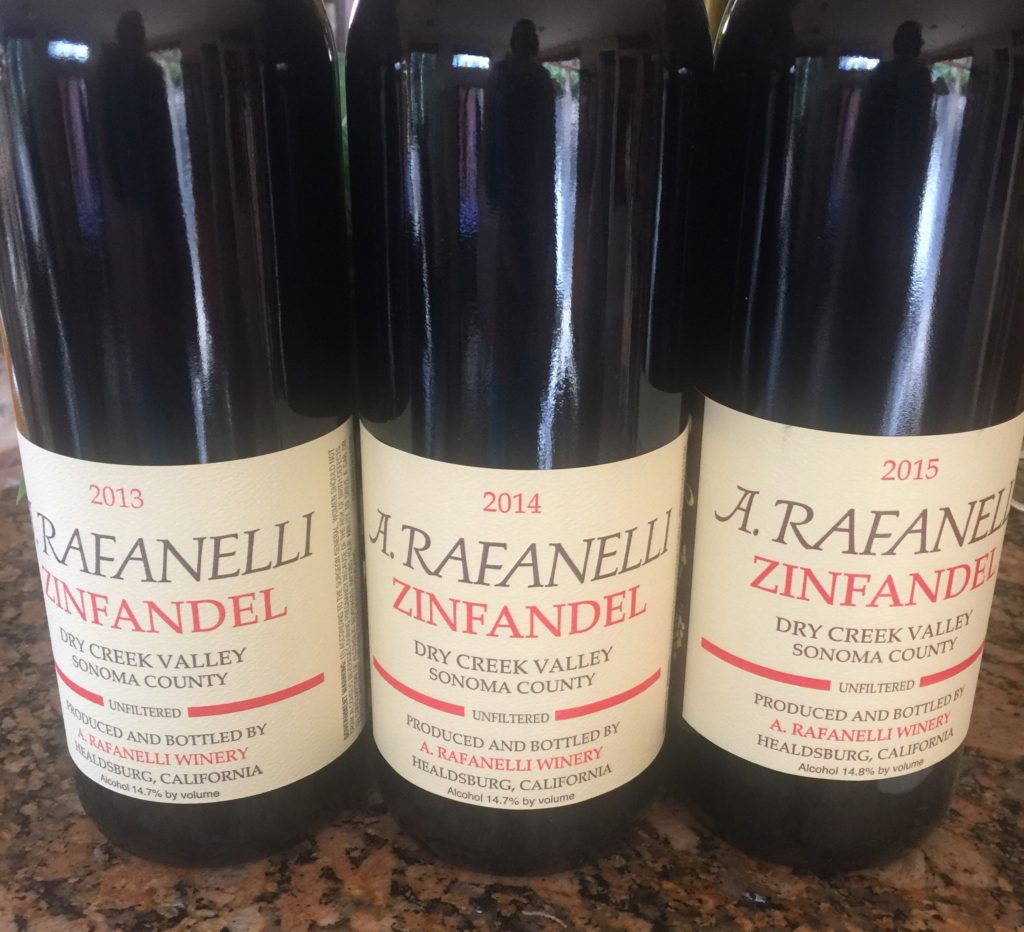
Dry Creek Valley AVA
(Photo by Linda Rakos)
Fort Ross – Seaview AVA
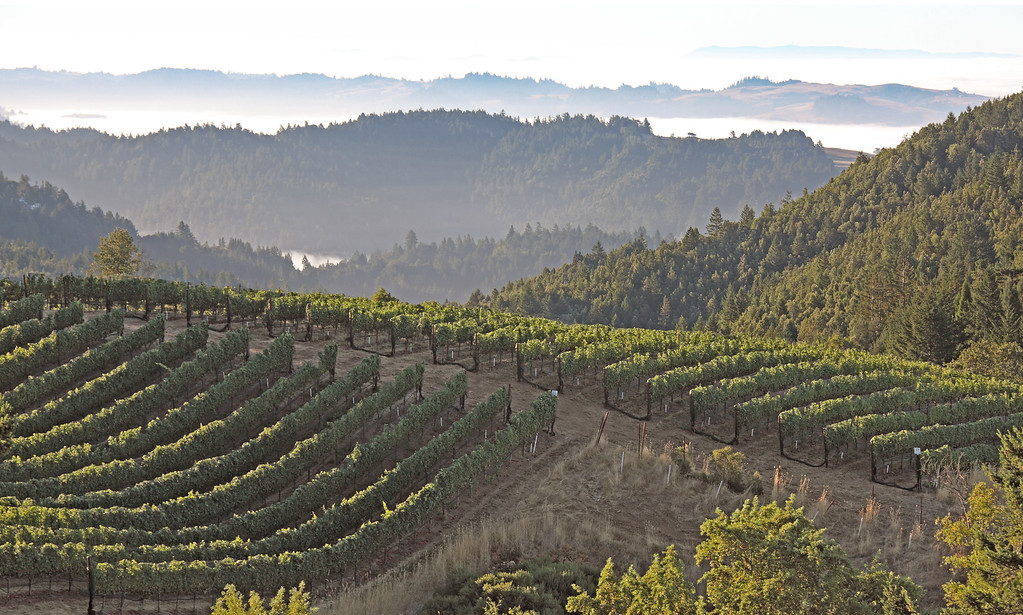
5 wineries with 555 acres established in 2012 as the 15th AVA; currently 2 wineries located within the AVA
Top varietal: Pinot Noir and Chardonnay
One of Sonoma County’s “youngest” AVAs is located in the far western part of the county where the terrain looks like it drops straight down to the Pacific Ocean, and it’s high enough to be above the fog line that covers the surrounding Sonoma Coast AVA. The first wine grapes planted in Sonoma and Napa Counties was in 1817 at the Russian-American Company’s Fort Ross, but modern times took over in 1973 when sheep rancher Mick Bohan planted Riesling grapes in hopes of recovering from low wool prices. This AVA is located just a few miles from the ocean between Jenner and Sea Ranch and with a significantly higher elevation it is distinguishably different than the Sonoma Coast AVA that is all around it. Vineyards are planted on steep coastal ridges from 920 to 1800 feet high. Farming is not easy here – it’s so remote, and it’s mountainous terrain with low yields – but some of California’s finest producers can be found here in this handful of growers. The wine here is so highly acclaimed that the region has been called the “A-List wine region” and the “Secret Elite wine region” by various sources. This small prestigious AVA has been home to some of Sonoma’s “A-lister” wineries including Fort Ross Vineyard, Hirsch and Flowers. Quite often the well-structured wines of this AVA are best after tucking them away in the cellar for a few years to soften and deepen.
According to Daniel Schoenfeld, the owner of Wild Hog Vineyard, there are just two wineries currently operating in the Fort Ross – Seaview AVA : Hirsh and Wild Hog. Daniel and his wife Marion took a rugged mountain property located at the headwaters of Wild Hog Creek (which is 45 minutes west of the little town of Cazadero) and transformed it into a beautiful garden with a vineyard. They have been there since 1973, began making wine in 1977 and opened their Wild Hog Vineyard winery in 1990, the first winery in the AVA. They make the only Zinfandel in the AVA plus Pinot Noir and Syrah. Wild Hog is 5 miles from the Pacific Ocean east of Fort Ross at an elevation of 1400 feet above sea level.
Other vineyard owners or buyers of Fort Ross-Seaview grapes include Pahlmeyer, Marcassin (Helen Turley), Failla (Ehren Jordan), Williams Selyem, Wayfarer (Jason Pahlmeyer), Martinelli, Sir Peter Michael and (Dave) Del Dotto. David Hirsch planted his pioneer vineyard in 1980 just two miles from the ocean and made his claim-to-fame by selling grapes to Williams Selyem, Kistler, Littorai and others starting in 1994. His on-site winery began in 2002 where grand-cru quality rich Pinot Noirs are produced. Hirsch says his property was so remote that he had to go through five cattle gates on dirt roads to reach it. Now Hirsch is the only other remaining winery in the AVA.
When Dave Del Dotto tasted some Pinot Noir from here, he thought it rivaled Romanée-Conti, bought the property, and renamed it as his Cinghiale Vineyard (“wild boar”).
Flowers Vineyards & Winery still maintains vineyards in the AVA but have relocated their winery and tasting room to the Healdsburg area. You can find the House of Flowers on Westside Road just a few minutes outside of downtown Healdsburg.
Photos credit www.sonomacounty.com
If you are looking for a place to stay while visiting this coastal area, you should check out the Timber Cove Resort with its dramatic cliffside views of the ocean. We stayed there and enjoyed the fireplace and those dramatic views right from the windows of our room. There is also the Jenner Inn and River’s End Restaurant & Inn. After you visit Napa Valley and work your way through Sonoma County, the scenery of Jenner is an amazing experience.
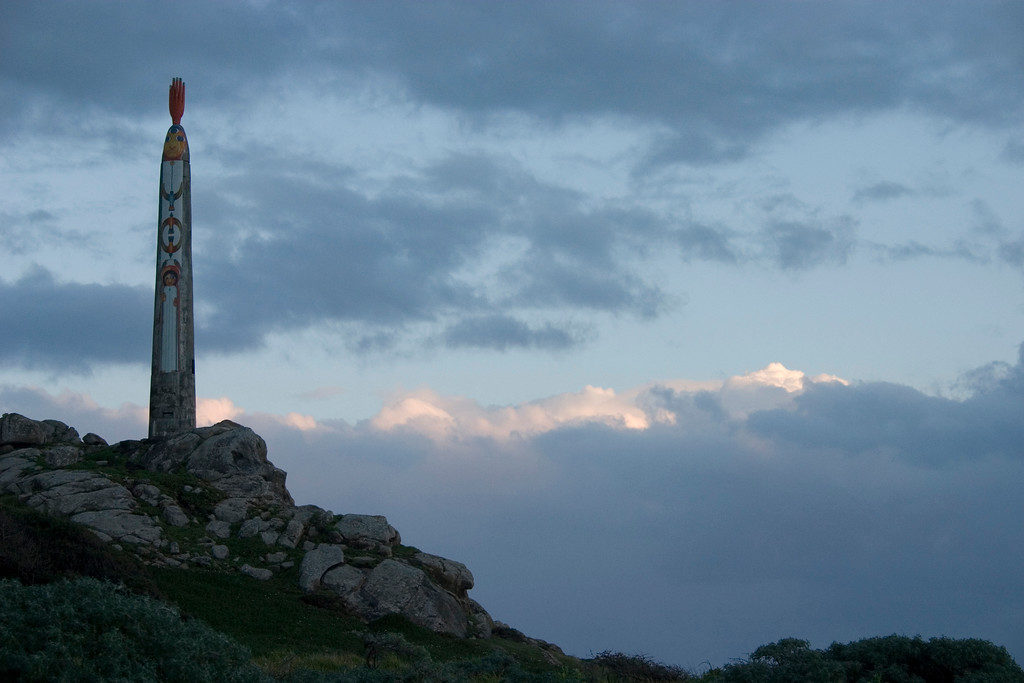
The view from Timber Cove Resort
(Photo credit www.sonomacounty.com)
Fountaingrove AVA
4 wineries with 600 acres established as the 17th AVA in 2015
Top varietals: Cabernet Sauvignon, Merlot and Syrah
Most of the Fountaingrove vineyards lie among the foothills of the Mayacamas Mountains and go way up to 2000 feet above sea level creating a cooler climate than the lower lands to the south. It has iron-rich Sonoma Volcanic soil which makes for healthier vines, good drainage and lots of nutrients. The AVA is named after an historic area of the northeastern part of the city of Santa Rosa, a “utopian community” on a 600 acre ranch established in the late 19th century by Thomas Lake Harris who brought the “Brotherhood of the New Life” with him from New York. He started California’s original “cult” winery in 1875 that operated until the 1940s. The Japanese winemaker Kanaye Nagasawa was known as the “Grape King” and was one of the first Japanese settlers in the United States. The winery once provided wine for Harris’ wine shop in New York City. Now it is left to Mother Nature. Chardonnay, Sauvignon Blanc, Cabernet Franc, Zinfandel and Viognier are also grown in Fountaingrove.
There is one Fountaingrove winery that I am quite familiar with – Fisher Vineyards. Fred and Juelle Fisher bought 100 acres on the western slope of the Mayacamas Mountains and founded their winery in 1973. The winery is on the family estate tucked in among the vines and Douglas fir trees. The winery itself was built from the timbers cut down to clear the land for it. Since then the family also purchased 57 acres on the Silverado Trail in Napa Valley. You may recognize the name of Fred Fisher. He was one of six brothers from Norwalk, Ohio who established Fisher Body Co. and built millions of automotive bodies for General Motors. Their “Body by Fisher” was GMs first mark of excellence and Fred carried the goal for excellence into his wine production. The Fishers produce Chardonnay, Cabernet, Sauvignon Blanc and Cabernet Franc in their Whitney’s Vineyard, Mountain Estate and Wedding Vineyard at their estate in the Fountaingrove District of Sonoma County. The famous Coach Insignia Cabernet Sauvignon is produced from their Napa vineyards. I feel privileged to have visited that estate, tasted wine with several members of the family and attended several wine dinners with Juelle Fisher right here in Southwest Florida.
Green Valley AVA
10 wineries with 3600 acres planted in vineyards established in 1983 as the 13th AVA
Top varietals: Chardonnay, Pinot Noir and Sparkling Wine
Green Valley AVA is located within the southwestern part of the Russian River Valley AVA bounded by the towns of Sebastopol, Forestville and Occidental. It is famous for its fog, slightly cooler temperatures and the fine sandy loam covering about 60% of the area thanks to the remains of an inland sea several million years old. The soil known as Goldridge is especially suited for high quality wine grape production due to excellent drainage and low soil fertility. The weather and the soil allow for the production of world class Chardonnays and Pinot Noirs, but Syrah is also a winner. Vineyards still compete here with apple orchards. Familiar with the Gravenstein? Supposedly the Russian settlement at Fort Ross brought the apples with them when they started to farm inland. Some top wineries to know are Benovia, Dutton Estate, Dutton-Goldfield Winery, Hartford Family winery, Freeman Vineyard and Winery, Radio-Couteau, Martinelli’s Jackass Vineyard and several others, Paul Hobbs Walker Station Vineyard and Williams Selyem Heintz Vineyard.
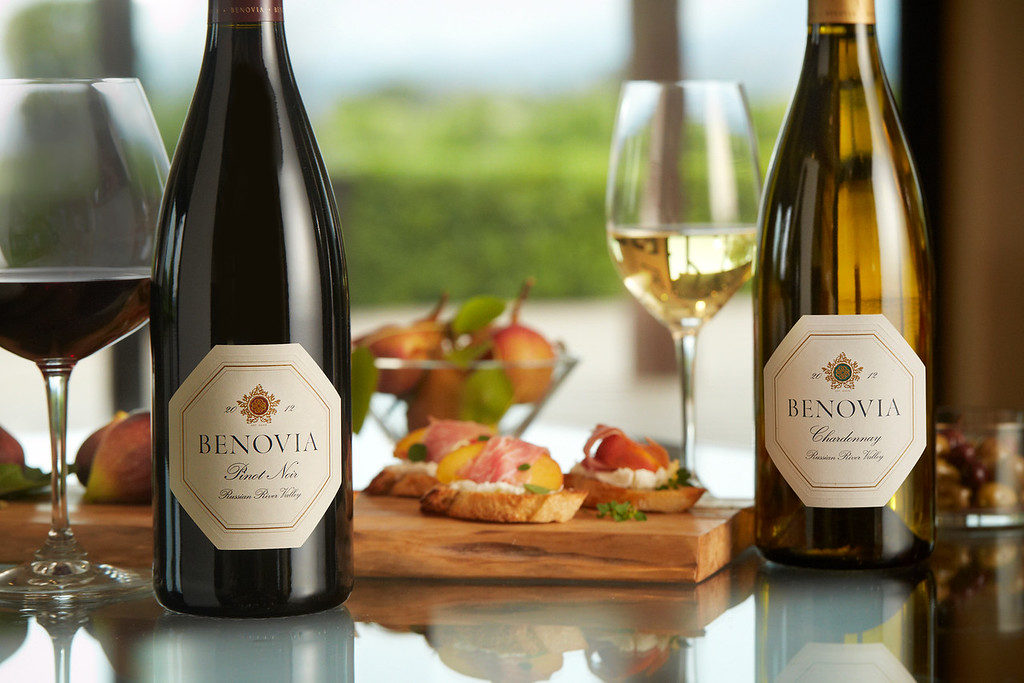
Wine tasting at Benovia
(Photo credit www.sonomacounty.com)
Two of my personal favorites that we visited (along with several others!) are Iron Horse, known for their wonderful sparkling wine, and Small Vines Wines who receive great accolades for their Pinot Noirs.
Iron Horse
The sparkling wines of Iron Horse have been served at the White House for numerous historic occasions. Their Chardonnay is a signature Green Valley wine and their rising star is Pinot Noir. Audrey and Barry Sterling first saw the estate in pouring rain in February 1976, thought it looked like Camelot and bought the property in two weeks. The Sterlings practice “precision viticulture” or micro-farming under the guidance of Daniel Roberts, aka “Dr. Dirt”. Their wines all have a sense of place specific to Green Valley, their vineyard and the vintage. They are elegant, soft and silky and full of quality and class. The sparkling wines exceed French standards for vintage quality and are of the “Grower Champagne” category. Wedding Cuvee is aged on average three years; the Classic Vintage Brut four to five and the Late Disgorged seven to eight years. There are three generations of family living on the property all striving to put back more than what they take out of the land. They are certified sustainable by the Wine Institute and the Sonoma Wine Growers. The Sterlings were renovating the tasting room when we visited there making our experience even more special. We were outside on the rustic deck looking down over the property with the wines set up on wooden boards.
2015 Iron Horse Classic Brut Green Valley AVA
Classic Brut is the “flagship” sparkling of Iron Horse. Just 1200 cases of this 75% Pinot Noir and 25% Chardonnay blend were made for the 2015 vintage. The winemaker says it has notes of rising dough, orange marmalade and baked apple with flavors of ripe red apples, mandarin oranges and hazelnuts on the palate – all flavors unmistakably Green Valley and Iron Horse. I couldn’t find any ratings yet for the 2015, but previous vintages have all been between 90 and 95 points, so I’m not expecting anything less! This bottle cost us about $45 from wine.com .
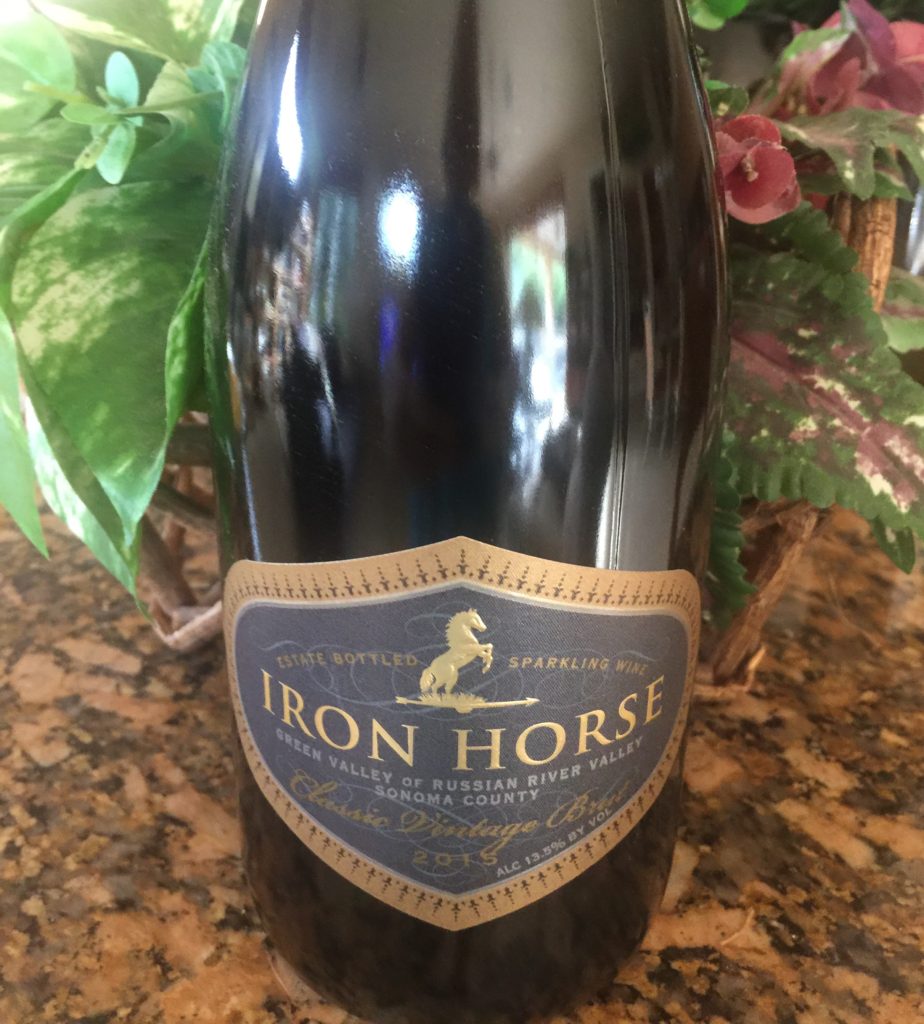
Green Valley AVA
(Photo by Linda Rakos)
Small Vines Wines
Small Vines Wines was founded in 2005 by Paul and Kathryn Sloan with their first vintage of Pinot Noir. They may grow small vines but they make some really big Grand Cru-quality Pinot Noirs! And Chardonnays. Put together that dusty Goldridge soil west of Sebastopol with Paul’s Burgundian style of organic farming and you have a Pinot marriage made in heaven. While working as a wine steward at John Ash & Co Restaurant in Santa Rosa in 1995, Paul was offered a glass of Domaine de la Romanee Conti which was a life changer for him. He eventually started out running a vineyard management business which he still operates today. After learning how vineyards are farmed in the Côte de Beaune and Côte de Nuits and the concentrated flavorful fruit that they produce, Paul opted to plant his vineyards with narrow rows of only four feet across which even called for purchasing a special tractor from France small enough to fit between the rows. The vines are farmed so individually that Paul says they touch each vine independently over 28 times during the growing season. The yield of each vine is also small – about 1-2 pounds of fruit compared to an average yield of ten times more in California. At harvest time, Pinot Noir grapes are handpicked in the cold of night, hand sorted twice, and whole-clustered during fermentation. They use French oak barrels from Burgundy that have been aged a minimum of 3 years. The wine usually spends about 14 months in the barrel and is bottled unfined unfiltered. Chardonnay grapes are also processed in the white Burgundian method.
In addition to the 7 acres of vineyards that they lease and manage, they purchased the Barlow Homestead and now have their own 8 acres of vineyard. The Barlows were prominent apple and berry farmers in West Sonoma County and the historic farmhouse that they now live in on the property dates back to 1897. Look for Small Vines Wines Pinot Noir and Chardonnay from their vineyard (TBH) The Barlow Homestead in Green Valley, and MK Vineyards Sonoma Coast Pinot Noir, Baranoff Vineyards Russian River Valley Pinot Noir, Estate Cuvee Russian River Valley Pinot Noir, and Sonoma Coast Pinot Noir. You won’t find much of it – they just make around 42,000 bottles a year. Plus 75% is sold direct to the consumer.
We experienced a wonderful tasting experience with Paul Sloan on his Barlow estate in 2007 before they were even able to move into the farmhouse. Paul poured a taste of every one of his labels for the two of us, paired them up with some appetizers and spent several hours telling us about his wines and his hopes for the future. Those are the kind of experiences that this winelover will forever remember!
Dutton-Goldfield
You will find Dutton Ranch and the Dutton-Goldfield Winery and tasting room in Green Valley, an AVA at the southwestern corner of the Russian River Valley AVA . Dutton-Goldfield began back in 1998 when Steve Dutton, the grapegrower, and Dan Goldfield, the winemaker, decided to team up to make some wines that show off the distinct differences of their vineyards in this cool coastal region. They knew what they personally liked to drink and wanted the rest of us winelovers to share the same great experiences. They specialize in Pinot Noir and Chardonnay but also produce small amounts of Syrah, Zinfandel, Pinot Blanc, Riesling and Gewurztraminer.
Steve’s Dutton Ranch Vineyard was the “2017 Vineyard of the Year” and is made up of over 80 separate small vineyards. They also source grapes from single vineyards in Marin County, Sonoma Coast and Anderson Valley.
2014 Dutton-Goldfield Fox Den Vineyard Pinot Noir Green Valley AVA
Dan and Steve planted this 8 acre vineyard together in 2002, and Dan has been making wine from it since 2004. It is located on top of Stoetz Ridge on the western edge of the appellation and is just a tiny bit warmer on the hilltop than the bottom of the valley, but it still has that low nitrogen sandy soil that helps vines grow and fruit ripen slowly. The wine from this vineyard is usually quite silky with bright raspberry fruit and natural acidity just like a perfect Green Valley Pinot Noir. This bottle of 2014 Fox Den went through open top fermentation with cold soak and punch down, then was aged 17 months in 55% new French oak barrels. Alcohol level is 13.8% and according to the winemaker should have cherry, strawberry and raspberry aromas with some rose petals and rhubarb pie! Then there should be some Bing cherries and Chambord with a smooth texture and creamy strawberry shortcake on the finish. WE rated it 94 points and RP gave it 91. Can’t wait to taste it! Just 767 cases were produced. We recently purchased our bottle from wine.com for about $70.
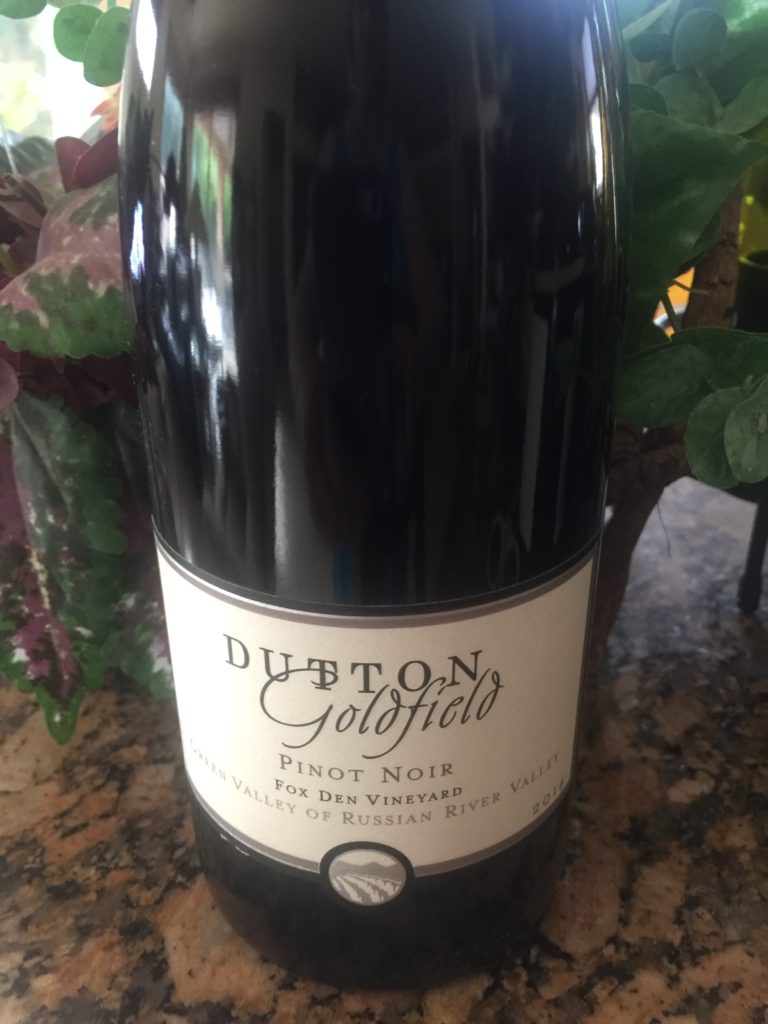
Green Valley AVA
(Photo by Linda Rakos)
Knights Valley AVA
2 wineries with 2496 acres established in 1983 as the 5th AVA
Top varietals: Cabernet Sauvignon, Cabernet Franc, Merlot, Syrah and Zinfandel
Knights Valley is protected from the Pacific Ocean making it the warmest AVA in the County. The ancient volcano and Sonoma County’s highest mountain, Mount Saint Helena, looks down over Knights Valley. The volcanic soil is well drained, the temperatures are warm and there is lots of sunshine – all the better to give the Cabernet Sauvignon those famous Knights Valley full-bodied, ripe, chocolate flavors. Bordeaux varietals are important here, both red and white (although little white wine is produced), thriving to produce nice Meritage blends. The Valley is about 6 miles east of Healdsburg and abuts Alexander Valley AVA on the west, Chalk Hill to the south, and is 5 miles from Calistoga on the east. The only good way to get here is through the mountains on twisty sections of Highway 128. This valley is so remote that it has gotten more rural through the years. Vineyards were first planted here in the 19th Century by Thomas B. Knight. The valley once had a small town when grapes were big business here before the Prohibition, but the town burned down in the 1960s. Vineyards and wineries eventually returned minus any commercial development, tasting rooms or hotels. Vineyards have become big business here once again; Knights Valley AVA was one of the original five AVAs in Sonoma County. Two of the largest wineries producing wine with Knights Valley on the label but are located elsewhere are Beringer and Kendall Jackson. Peter Michael Winery has been based in this region since the early 1980s although the mailing address is Calistoga. Some small producers making wine from Knights Valley grapes are Donelan Family Wines and Anakota. All of these wineries produce highly rated wines.
Beringer
Beringer is one of California’s oldest continually operating wineries with history that dates back to 1868. That is when Jacob Beringer left his home in Mainz, Germany and sailed to New York to find new opportunities. He made his way to Napa Valley after hearing that the rocky hillside soil and fertile valley floors of Napa Valley were similar to German vineyards, and he and his brother Frederick bought 215 acres of land there in 1875. Their winery was one of the first in Napa Valley. We won’t go into detail here since this is an article about Sonoma County, but if you have never visited the Beringer estate in Napa Valley, you are missing out on a lot of wonderful history. It is an excellent experience that will not be forgotten!
Beringer has owned and been farming vineyards in Knights Valley since the mid-1960s, and their vineyard is just 17 miles north of the Beringer winery. Beringer first used a Knights Valley designation on the label in 1974 and was instrumental in getting approval for the AVA in 1983. They also grow Sauvignon Blanc grapes here.
2015 Beringer Cabernet Sauvignon Reserve Knights Valley AVA
The Beringer Knights Valley Cabernets are always highly rated and the 2015 received scores between 92 and 95 points. The 2015 was aged in small French Nevers oak barrels (56% new) for 19 months. Winemaker notes tell us it should have aromas and flavors of dark fruits like blackberry, curranrants, amd smoked meats and baking spices with menthol, cedar cigar box and pipe tobacco. The finish should be long with a dense texture. It’s 15% alcohol and made of 92% Cabernet Sauvignon, 6% Malbec and 2% Petit Verdot; 6,030 cases were made. We recently purchased our bottle from wine.com for $58, a most reasonable price for the high scores.
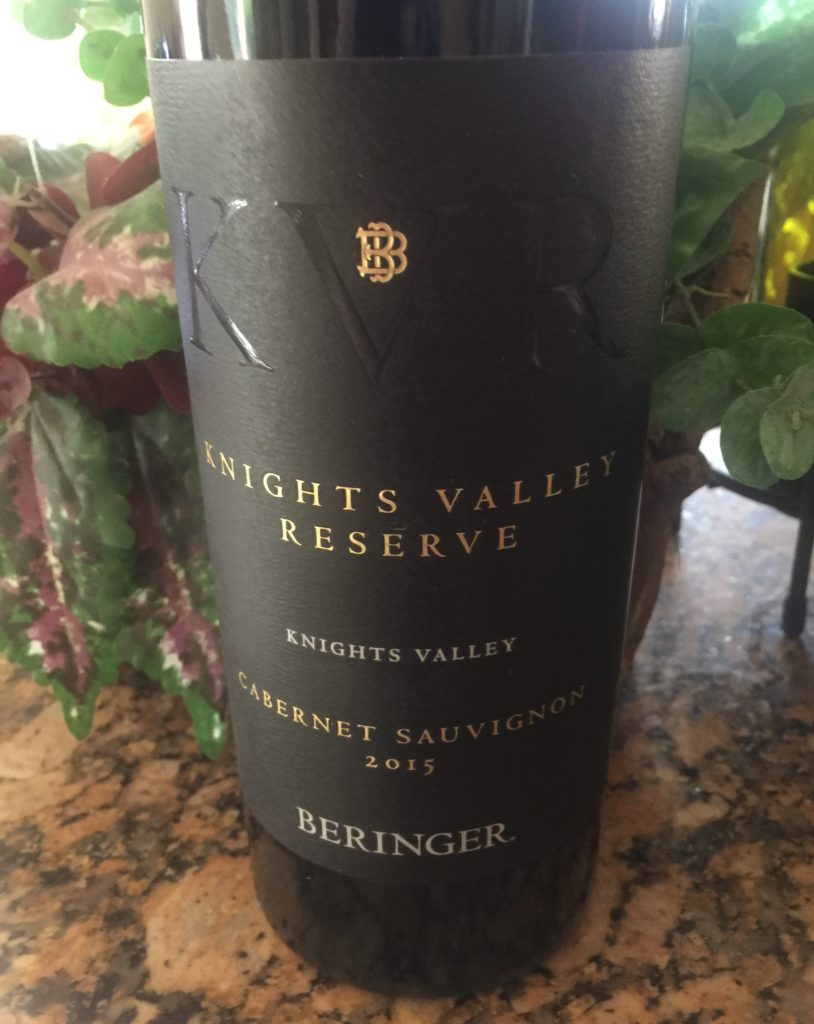
Knights Valley AVA
(Photo by Linda Rakos)
Moon Mountain AVA
4 wineries with 1500 acres established in 2013 as the 16th AVA
Top varietal: Cabernet Sauvignon
Moon Mountain is high above the eastside of Sonoma Valley and is one of the few AVAs in the Mayacamas. In fact, they say on a clear day you might be able to see San Francisco skyscrapers to the south. It is harder to farm at high elevations, but the results can be quite rewarding. Known for centuries as the Valley of the Moon, it is one of the newer AVAs. You will find some of the state’s oldest Cabernet Sauvignon (Monte Rosso Vineyard) and Zinfandel vines here. All of the Bordeaux varieties are prominent in Moon Mountain growing in a variety of soils mainly rocky and volcanic at elevations ranging from 400 to over 2000 feet above sea level. Some wineries to look for are Ty Caton, Hanna, B Wise and Hanzell (if you can get an appointment).
Amapola Creek
The story of Amapola Creek by Richard Arrowood has somewhat of a bittersweet ending. The Amapola Creek winery itself was completed on Moon Mountain in October 2007 just in time for crush. It’s a very small ultra-premium facility with state-of-the-art equipment. Richard Arrowood is a legendary vintner who made wine in Sonoma County for more than 50 years. He made the wines for Chateau St. Jean from 1974 until 1990, then founded his own Arrowood Vineyard & Winery with the 1985 vintage. He sold Arrowood Winery to Robert Mondavi in 2000 who then later sold it to Jackson Family Wines in 2006. He left Arrowood as winemaster back in 2010 to devote himself full-time to making the great wines of his estate winery on Moon Mountain. The Amapola ranch has about 100 acres along the western slope of the Mayacamas Mountains. The red, iron-oxide soil has been producing high quality wines for over a century. Amapola is right next door to the very famous Monte Rosso Vineyard. Their Chardonnays, Cabernet Sauvignons, and Zinfandels have always received high ratings from various wine critics. There are roughly 20 acres of organic vineyards currently producing over 5,000 cases annually.
The bittersweet ending to this story is that as of January 10, 2020, Amapola is owned by B. Wise Vineyards of Sonoma Valley. Brian Wise, Dick Arrowood’s neighbor, purchased it from Dick who is retiring after 54 years of work. Congratulations Dick on your retirement, and thanks for a job well done!
2014 Amapola Creek Estate Cabernet Sauvignon Moon Mountain AVA
The Cabernets of Amapola Creek are favorites of Robert Parker who consistently gave them ratings between 94-96. The 2014 is 94 points and is a blend of 93% Cabernet Sauvignon and 7% Petit Verdot. According to our winemaker, there should be blackberry and red plum on the nose followed by blackcurrant and pomegranate with subtle notes of oak and toasted vanilla. We will also be looking for some anise then a finish with chocolate, blueberry preserves and aged cedar. Cannot wait to taste our Moon Mountain Cabernet and wish Dick Arrowood well in his retirement! We bought our bottle recently from wine.com for $65.
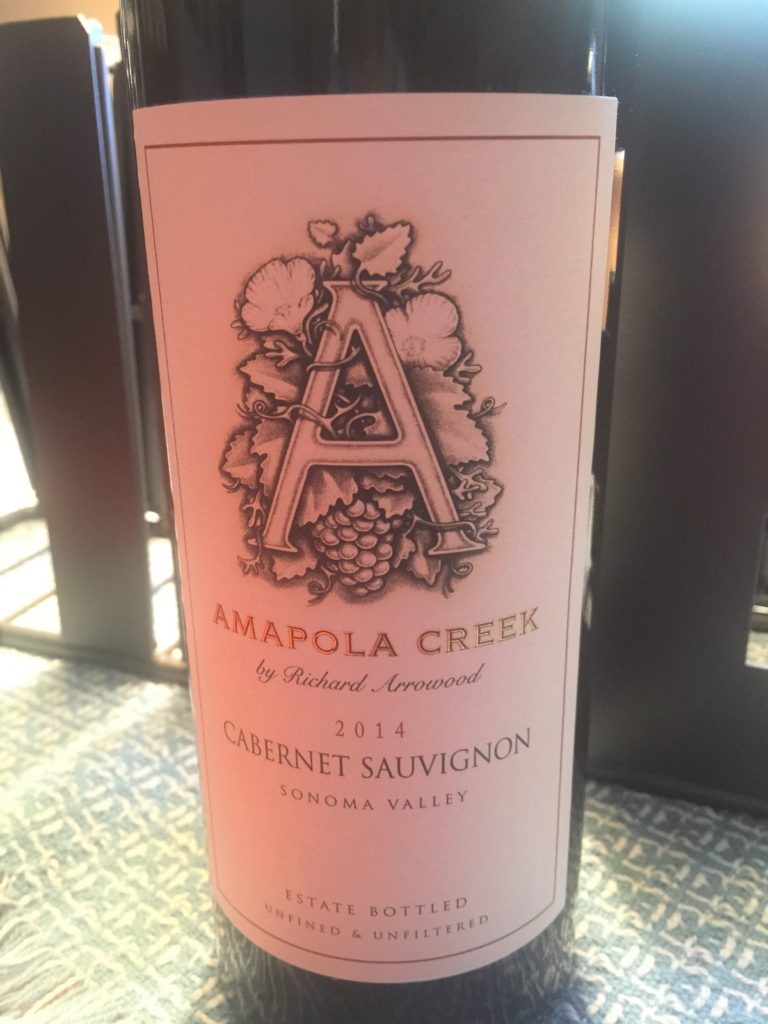
Moon Mountain AVA
(Photo by Linda Rakos)
Northern Sonoma AVA
329,000 acres established in 1990 as the 9th AVA
Top varietal: Cabernet Sauvignon, Chardonnay, Zinfandel and Sauvignon Blanc
Northern Sonoma is the second-largest AVA in Sonoma County; however very few wineries use this designation on wine labels. Six different AVAs make up the 329,000 acres of Northern Sonoma: Dry Creek Valley, Alexander Valley, Knights Valley, Chalk Hill, Russian River Valley and Green Valley. So why was this AVA created? Regulations dictate that wineries may only use the word “estate” on the label if both their vineyards and winery are located in the same AVA. This was of great importance for E&J Gallo, the largest wine company in the world, in order to say “estate” on the label of their Gallo Family Vineyards brand for Cabernet Sauvignon and Chardonnay. You can see the Northern Sonoma AVA on wines in supermarkets across the United States. There are some small wineries that use this AVA on their label but you really have to search for them.
Petaluma Gap AVA
9 wineries with 4000 acres established in 2017 as the 18th and newest AVA
Top varietal: Pinot Noir, Chardonnay and Syrah
You will find the 200,000 acres of Petaluma Gap in southern Sonoma County and northern Marin County. About 75% of the planted acreage is in Pinot Noir grapes, and the rest is mainly Chardonnay and Syrah. Those people who worked towards the establishment of this AVA, which mostly was already covered under the Sonoma Coast AVA, claimed this area was different because of afternoon wind and fog coming in from Bodega Bay that passes through the low-lying hills and valleys in the gap in the California Coast Range of mountains, and then continues out into San Pablo Bay. This helps to cool down the grapes and slow down their ripening. The AVAs western boundary is the Pacific Ocean; to the south, the Gap crosses into Marin County where the coastal hills start climbing up to the 2,572 foot Mount Tamalpais. The northern boundary stops just short of Russian River Valley.
The Petaluma Gap Winegrowers Alliance had already been in place since 2005, formally applied for the AVA status in 2015, and were instrumental in getting it approved. Winemakers such as David Ramey and Kosta Browne already used Petaluma Gap grapes and the Gap’s Crown Vineyard has been praised for its Pinot Noir grapes. There are a few boutique wineries in the AVA like Adobe Road and Kastania, but the long list of notable producers from outside the AVA who use Gap grapes reads like the “who’s who” of well-known wineries such as Sojourn, Rodney Strong, DeLoach, Cline Family Cellars, Spottswoode, Tamber Bey and Twomey.

David Ramey 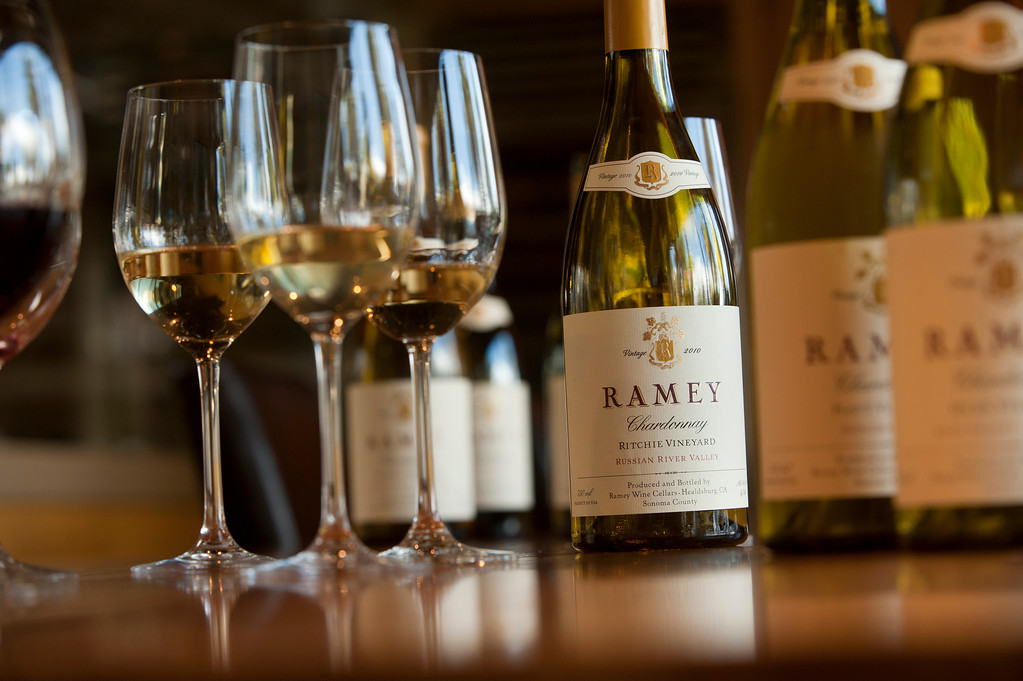
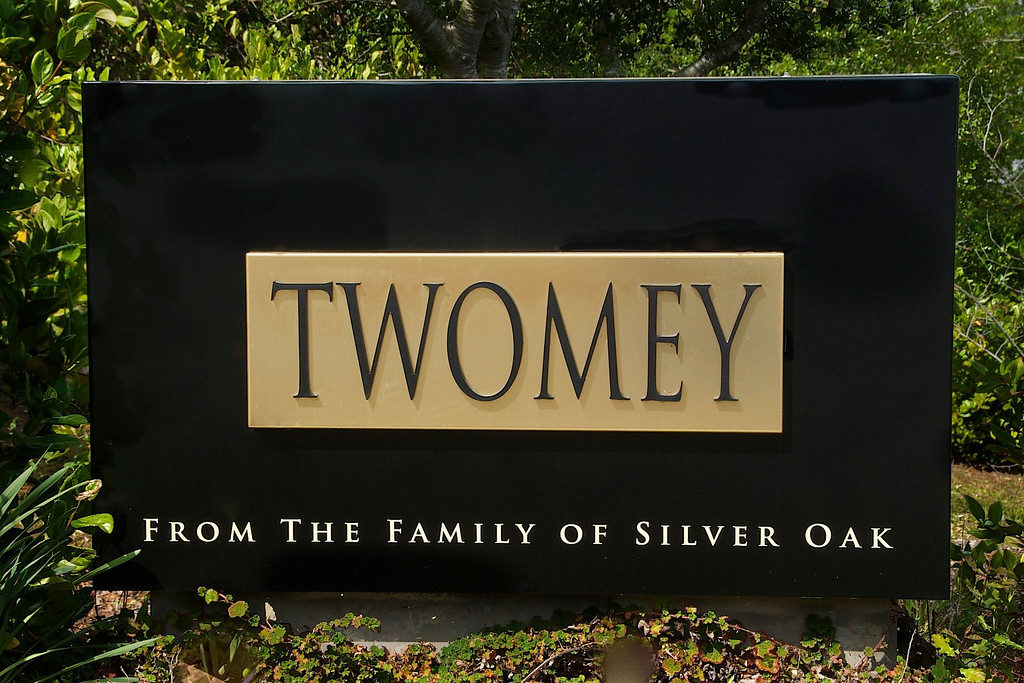
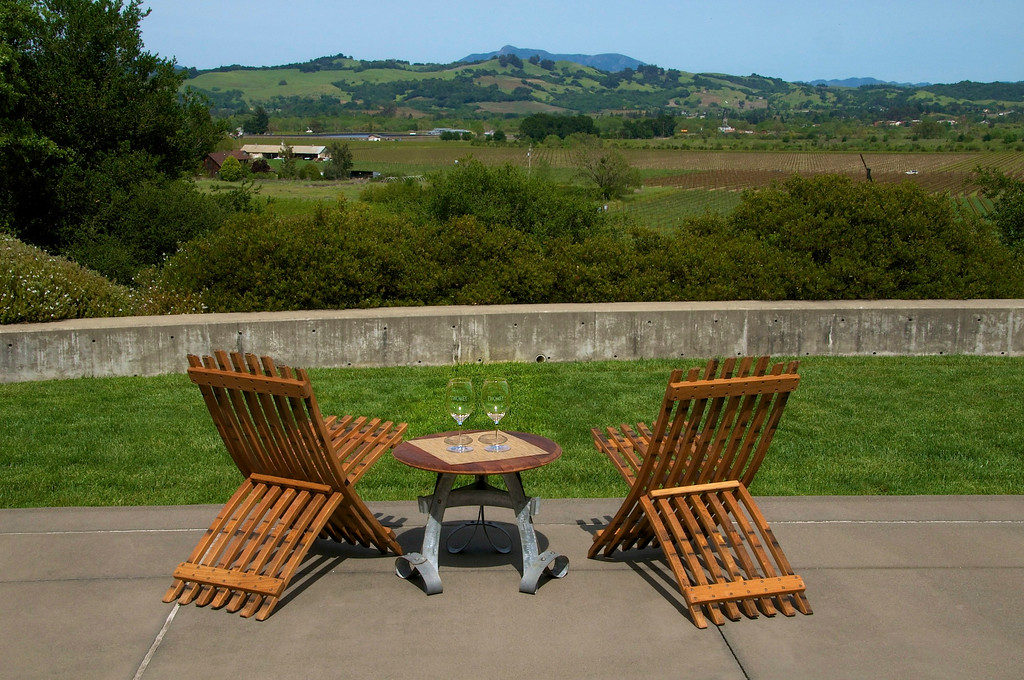
Photos credit www.sonomacounty.com
Pine Mountain-Cloverdale Peak AVA
1 winery with 310 acres established in 2011 as the 14th AVA
Top varietal: Cabernet Sauvignon
Located on the western edge of the Mayacamas overlooking Cloverdale, Pine Mountain-Cloverdale Peak is one of the highest and most remote AVAs in Sonoma County. Cabernet is king of the mountain and takes up about 80% of the vineyard acreage. Vineyards share the area with olive groves, some sheep and cattle. The Sonoma County side of the AVA is part of the Alexander Valley AVA and the northern section is in Mendocino County. The intense flavors of Cabernet Sauvignon and other Bordeaux varietals come partially from the high elevation and red rock volcanic soils. The peak itself starts out at 1600 feet and reaches 3000, and many of the vineyards are at the higher elevations. Several well-known wineries have vineyards here including Imagery Estate Winery who has their tasting room in Glen Ellen, Capture Wines who make Cabernet from their Tin Cross Vineyard and Francis Ford Coppola Winery whose “The Family Coppola” Cabernet Sauvignon proudly displays the Pine Mountain-Cloverdale Peak AVA on the label.
Rockpile AVA
192 acres established in 2002 as the 11th AVA
Top varietals: Cabernet Sauvignon, Petite Syrah and Zinfandel
Rockpile is located west of Lake Sonoma to the Mendocino County border, high above Dry Creek Valley and is known for its intensely red grapes. I’ll bet most winelovers know and love Rockpile zin! The 2500 acre Lake Sonoma reservoir was created by the construction of the Warm Springs Dam back in 1982. Elevations range from 800 to 2100 feet, and vineyards receive lots of sunlight. If you want to take a scenic drive around the Lake and stop somewhere for a picnic, be sure to stop at the famous Dry Creek General Store on Dry Creek Road in Healdsburg and pick up some of their delicious deli sandwiches and salads.
Rockpile is famed for its signature clone of Zinfandel selected by Kent Rosenblum and Ulises Valdez. You probably recognize Kent Rosenblum as the now deceased creator and owner of the legendary Rosenblum Cellars which was synonymous with Zinfandel. Kent was known as the “King of Zin”, and my most vivid memory of Rosenblum wines was accidentally discovering……and tasting!……. the fall release of every single Rosenblum Zin produced one year at their tasting room in Healdsburg. Kent was a founding member of ZAP, the Zinfandel Advocates and Producers group, which holds Zinfandel tasting festivals each year featuring a good 120 winemakers or so.
A Swedish immigrant, S.P. Hallengren, planted grapevines here in 1884 who only sold his wine in Sweden. Five generations later we are very lucky that his heirs run Mauritson Wines and make fantastic wines with some of those grapes (and others) just a few miles away at their winery in lower Dry Creek Valley. Another notable winery making equally great Rockpile Zinfandel and other wines is Seghesio Family Vineyards (you can find them in Healdsburg), and I am so happy that we visited both of these wineries on several occasions and have most enjoyable experiences. In fact we still see Clay Mauritson at wine dinners whenever he comes to Southwest Florida.
Russian River Valley AVA
94 wineries with 13,896 acres established in 1983 as the 6th AVA
Top varietals: Chardonnay and Pinot Noir
The Russian River flows through this valley where cooling fog and warm summer afternoons make it ideal for Pinot Noir and Chardonnay. Wines from RRV are ripe and elegant. If you have sipped on wine from Williams Selyem, Kistler, Kosta Browne, Paul Hobbs, DuMOL or Rochioli – just to name a few! – you can testify to the greatness of Russian River Valley Pinots. And we can’t leave out the Chardonnay or Sauvignon Blanc. Williams Selyem, Kistler and Lewis are known for their Chardonnay, and if you have been lucky enough to taste a Merry Edwards Sauvignon Blanc, you will agree. And we certainly can tell you that Merry Edwards Pinot Noir is superb. If you enjoy sparkling wine as much as I do, J Vineyards and Winery and Iron Horse will really fill the bill with their grapes from RRV and Green Valley.
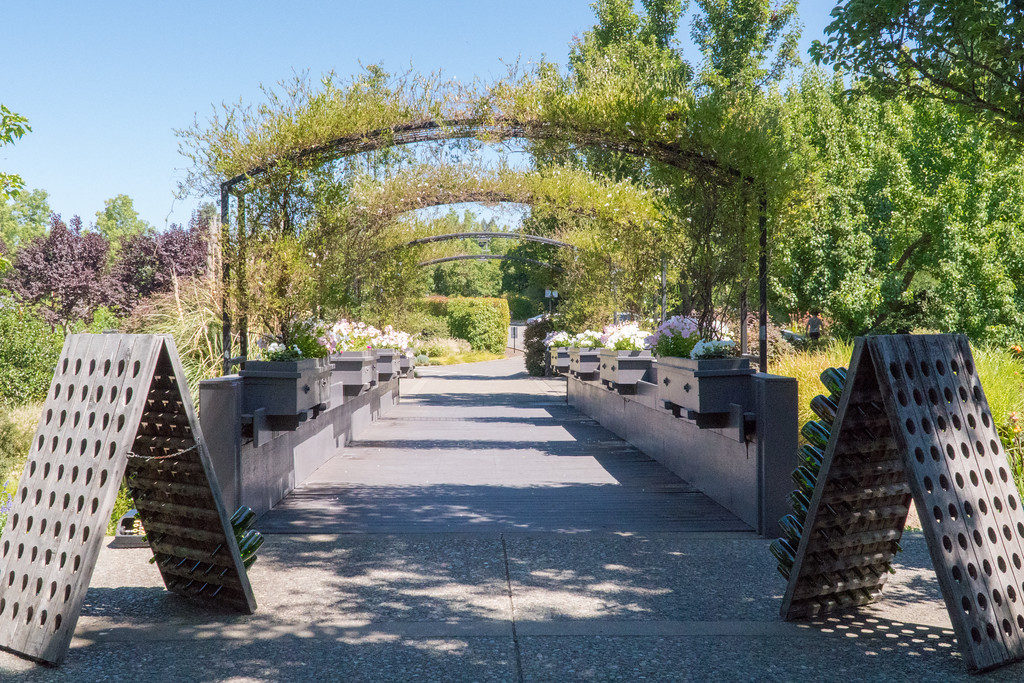
J Winery 
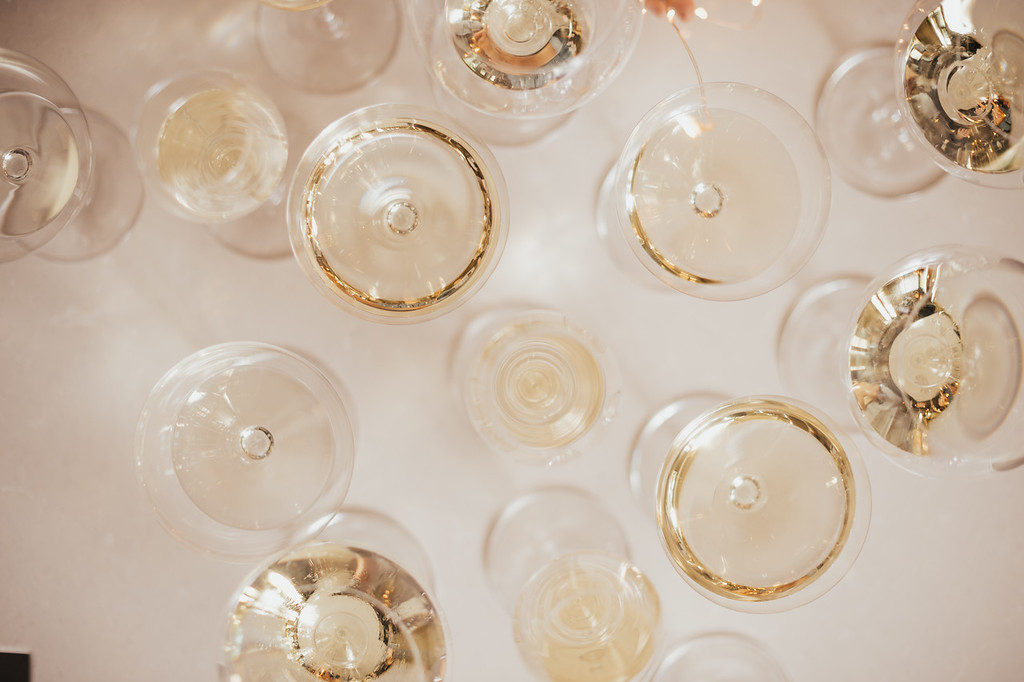
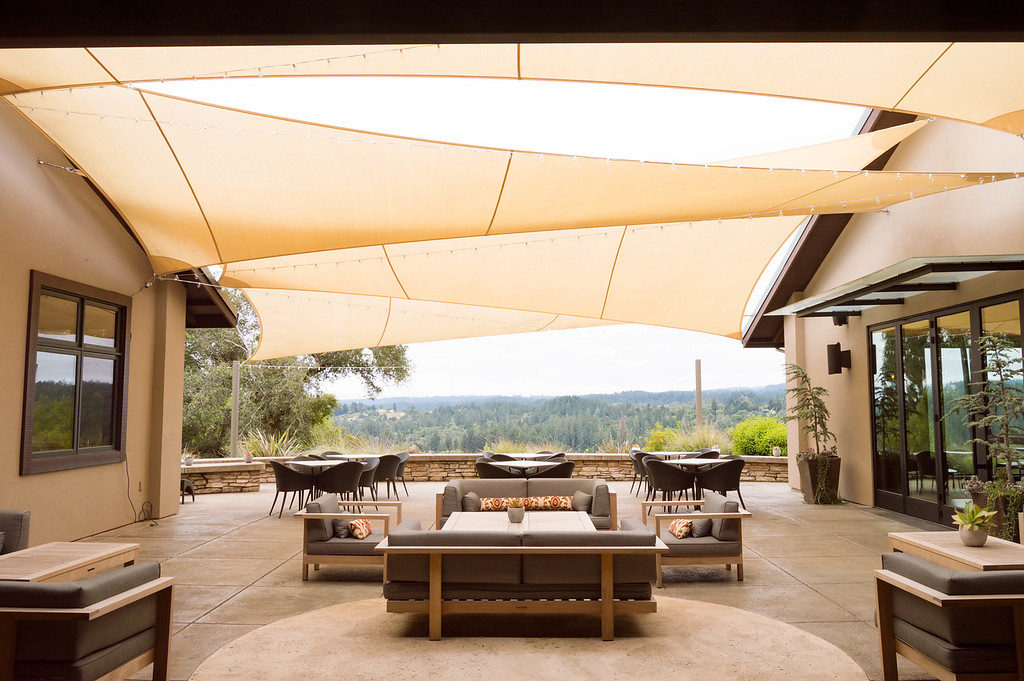
Lynmar 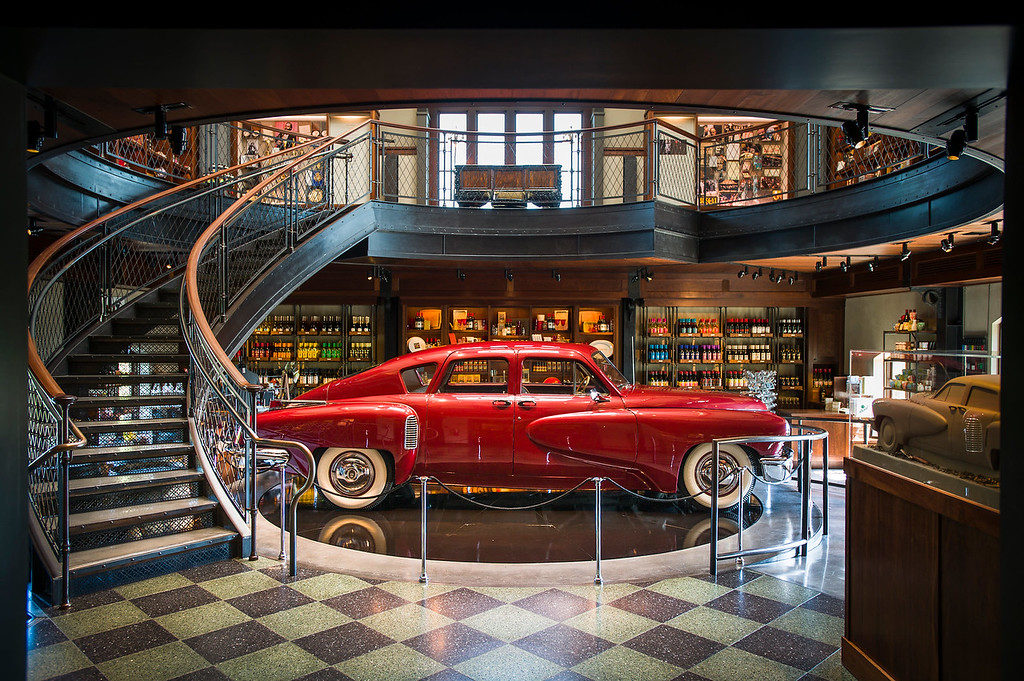
Coppola 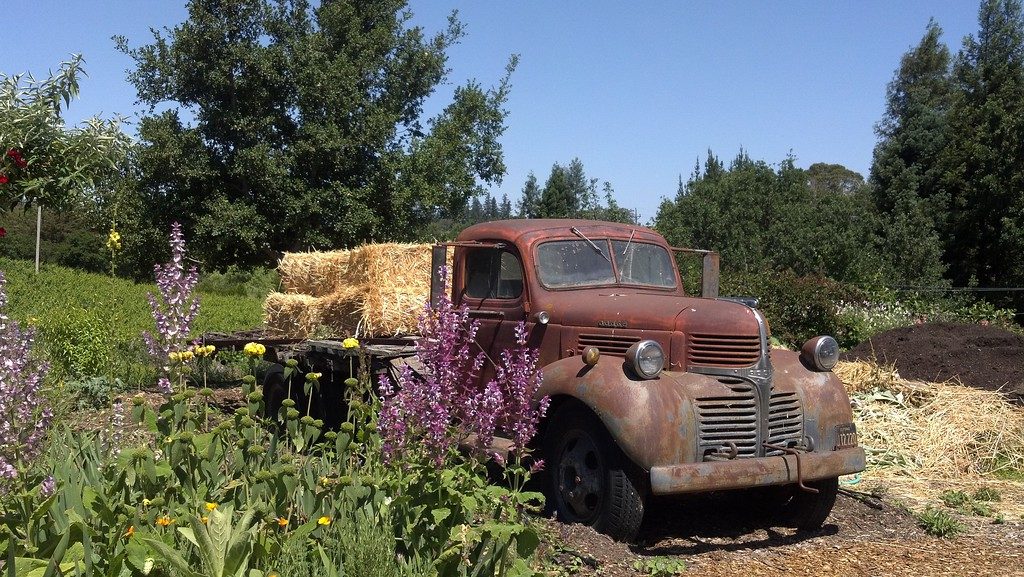
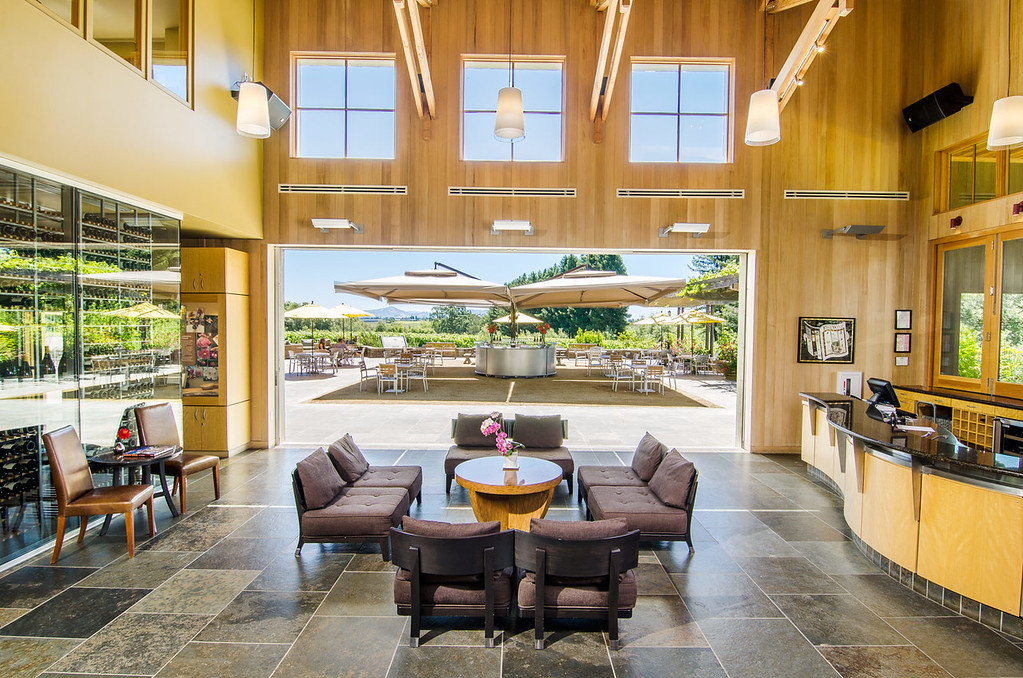
Gary Farrell 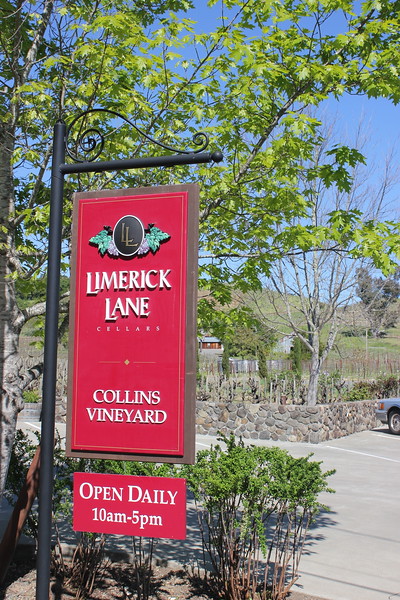
Photos credit www.sonomacounty.com
J. Rochioli
This is yet another wonderful story of Italian immigration to America when Joe Rocchioli Sr. moved here in 1911 from a small village just outside of Lucca. They made their way across the United States and settled in Northern California. The senior Rocchiolis worked on a farm in Russian River Valley eventually moving to 125 acres called Fenton Acres, which just happens to be where Rochioli Vineyards are today. Back in those days they grew hops, string beans and prunes but they also planted blending grapes like French Colombard, Early Burgundy and Napa Gamay to use for “jug wine”. Being good entrepreneurs, by the mid-1950s they bought the property. They planted Cabernet Sauvignon and Sauvignon Blanc in 1959 but it didn’t grow well and in 1968 the first Pinot Noir was planted using fine Pinot clones from France. This was considered pioneering at the time. They learned that the Russian River Valley climate made Pinot Noir and Chardonnay excellent choices. They changed the name from Fenton Acres to Rochioli and released their first estate wine in 1987. Amazingly to the Rocchiolis the 1985 Rochioli Vineyards Pinot Noir made by Williams Selyem was named “The Best Pinot Noir in America” by Wine Spectator! The rest was history. Now they have 140 acres in production in Russian River Valley, focus on single vineyard and their wines are all top rated. Wine is generally made available on a limited basis to customers on “The List”, and once you get on it, I advise you not to jump ship! I still remember my excitement at finding out that I was a “Rochiolian”! According to their website, The List is currently full. I have seen their Russian River Valley wines for sale at Total Wine, and you may want to drink it while waiting to get on The List.
2014 Rochioli Sweetwater Vineyard Pinot Noir Russian River Valley AVA
The 2014 Sweetwater should give us cherry, berry and plum flavors with smoky, toasty oak. It was made from three clones – Pommard, Dijon 115 and the Rochioli Selection. Only 424 cases of this wine were made and I’m anxious to taste it. Robert Parker said it should drink well for at least a decade. WS gave it 91 points and WA 94! I purchased mine from the winery in 2016 for $79 a bottle and see collector’s offering theirs online for $115. I have yet to taste a Rochioli Pinot Noir that was not an excellent choice.
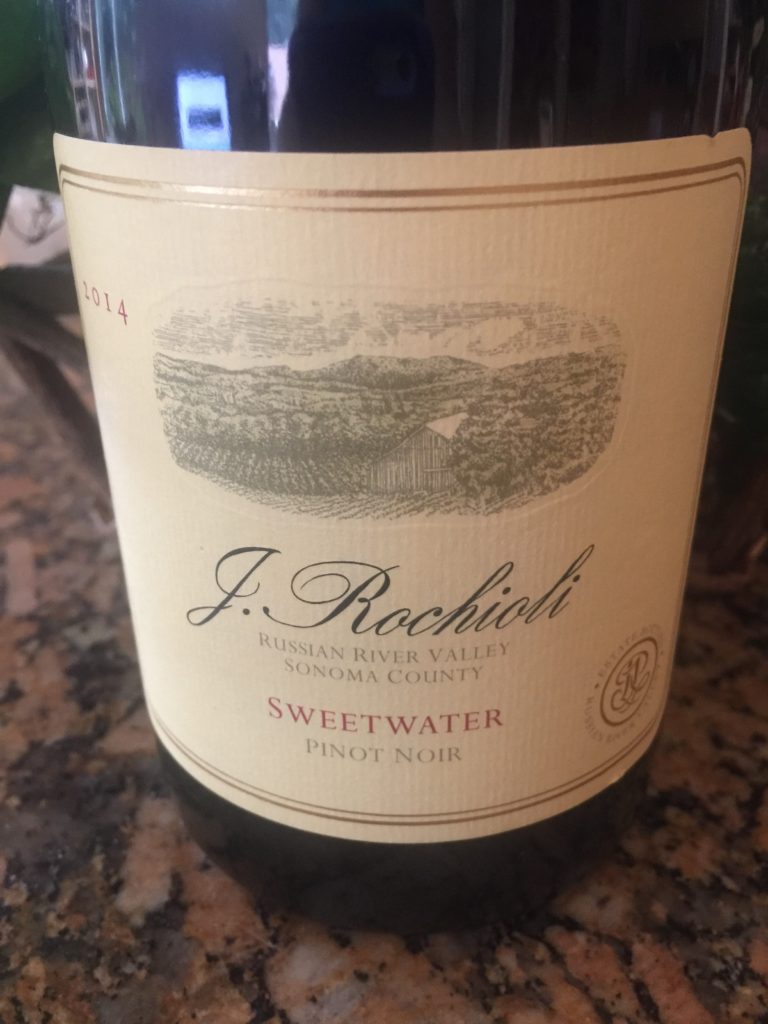
Russian River Valley AVA
(Photo by Linda Rakos)
2012, 2013 and 2014 Small Vines Wines Estate Cuvee Pinot Noir, Russian River Valley AVA
We have already told the story of Small Vines Wines with the Green Valley AVA . This 3 year vertical is made by Paul Sloan and Small Vines Wines from vineyard estates that he manages in Russian River Valley but not exclusively Green Valley. The vineyards were farmed organically by Small Vines Viticulture adhering to Grand Cru standards. The soils were red sandy clay loam to dark gray goldridge fine sandy loam. All three vintages spent 15 months on fine lees and were bottled unfined and unfiltered. Oak was 31 – 37.5% new French. There were 390 cases made (2012), 524 (2013) and 360 (2014). We anticipate dark cherry and plum notes with earthy forest floor and earthy mushrooms with a soft and silky texture from all three vintages. Small Vines Wines are always highly acclaimed but here again don’t expect to see them on a local wine store shelf. I purchased these wines direct from the winery for $50 to $65 a bottle.
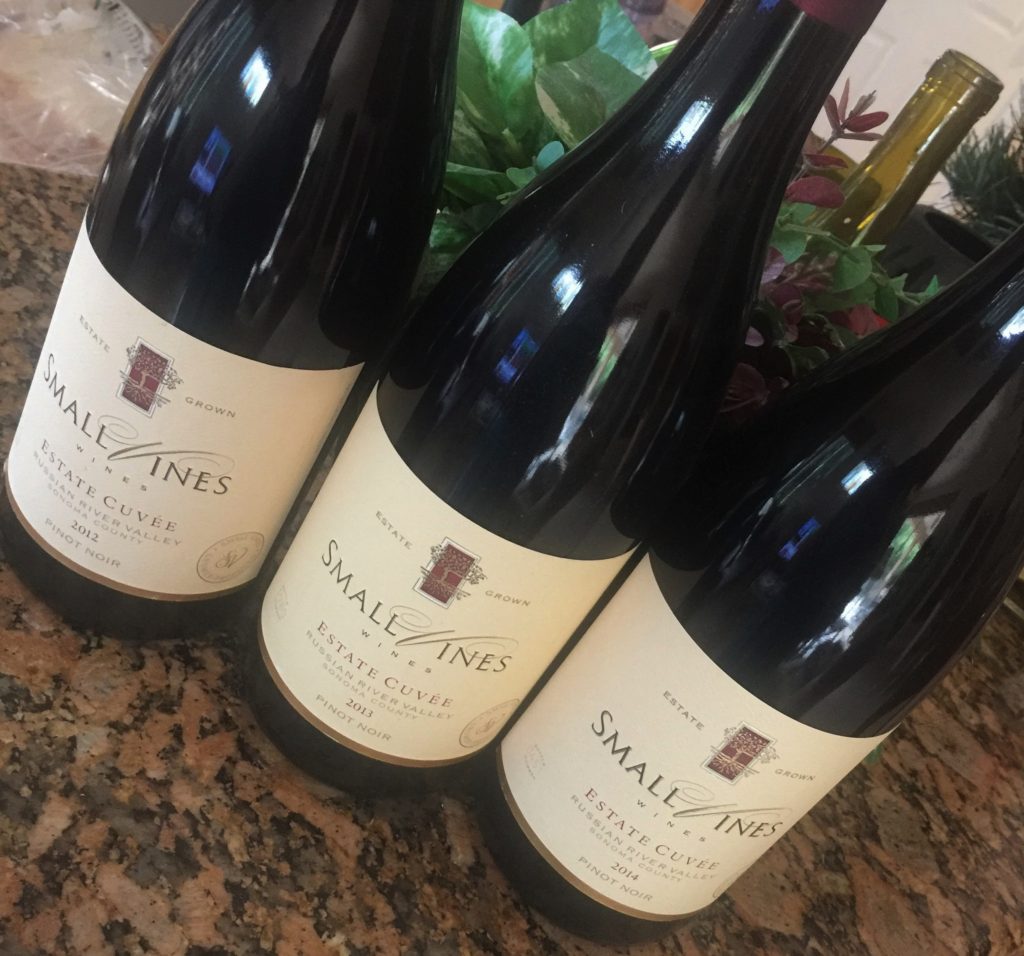
Russian River Valley AVA
(Photo by Linda Rakos)
Sonoma Coast AVA
7 wineries with 4725 acres established in 1987 as the 10th AVA
Top varietals: Chardonnay and Pinot Noir
This is the coolest of the Sonoma County regions. It is next to the Pacific and gets more than twice the rainfall of the inland regions, but is still warm enough to produce fabulous Pinot Noir, Chardonnay and Syrah. Sonoma Coast is the largest AVA (750 square miles). In fact it is so large that several vintners formed the West Sonoma Coast Vintners association made up of wineries located from just west of local Highway 16 from Petaluma to Annapolis to the Pacific Ocean. They have defined this as the “true” Sonoma Coast. David Hirsch, Ted Lemon (Littorai), Burt William (Williams Selyem), Steve Kistler, Ehren Jordan (Failla) and Andy Peay were some of this region’s pioneers. Their Pinot Noirs, Syrahs and Chardonnays are spectacular. Since then, the Fort Ross-Seaview AVA was made official in 2012.
Everyone who has ever enjoyed wine at our home, knows that Peay wines have a very special spot in our wine room. We were lucky to have a private visit with Andy Peay at his winery in Cloverdale in 2010 where he treated us to barrel tasting some of Peay’s finest! Memories like that are never forgotten!! Their vineyards and home are far to the west 4 miles from the Pacific Coast. Nick Peay and his brother Andy wanted to make wine and started looking for a place to plant vines. They looked up and down from Oregon to California and found a farm near Annapolis, an area that is even cooler than Ft. Ross-Seaview. They bought it in November 1996, built a reservoir and got the land ready for planting. Their first 30 acres were planted in 1998. Nick, Andy and Nick’s wife Vanessa Wong produced their first Peay wine in 2002. Now they have a 51 acre vineyard. Nick and Vanessa grow the grapes and make the wine and Andy runs the business and sells the wine. Vanessa is a winemaker with a great resume of her own. Pinot Noir and Syrah vines make excellent wines here as their vineyards are lower than Fort Ross and always in the cold air mass. They farm organically and are certified for fish-friendly farming. They run on bio-diesel at the vineyard and use solar power at the vineyard and the winery in Cloverdale. The wines from Peay are quite distinct, outstanding and display their terroir. You can drink them young or you can age them like we do. We prefer the subtle dried flower nutty less fruity more integrated aromas that Peay tells us to expect. They don’t make a lot of wine – often less than 100 cases of a particular one – so unless you are on the mailing list, if you see one on the shelf in a wine store, buy it!
Landmark Vineyards
Landmark Vineyards were founded in 1974 by a group of people including Damaris Deere Ford, the great-great-granddaughter of John Deere, who invented the steel plow. By 1989 Damaris was the sole owner and moved Landmark to its present location in Kenwood, Sonoma Valley. In 1993 Landmark hired Helen Turley to make some world-class Chardonnay. Grand Detour was their first Pinot Noir release in 1995. Grand Detour just happens to be the name of the village in Illinois where John Deere set up his blacksmith shop. Since then their Overlook Chardonnay has been on Wine Spectator’s Top 100 list eight times. Landmark calls the Sonoma Valley home but sources grapes from vineyards in Sonoma (including Sonoma Coast), Monterey and Santa Barbara Counties. You can visit them in their tasting room outside Healdsburg in the Hop Kiln winery (bought by Landmark in 2016) or at their estate in Kenwood, which is where we enjoyed all of their wines.
2014 Landmark Grand Detour Pinot Noir, Sonoma Coast AVA
The 2014 Grand Detour Pinot Noir was sourced from several vineyards in Sonoma Coast and should be smooth and velvety with some anise, black tea, rose petals and cherry pie. It received 90 points from Wine Enthusiast plus a Gold Medal at the San Francisco Chronicle Wine Competition and a Silver at the Los Angeles International Wine Competition. it retailed for about $35 a bottle.
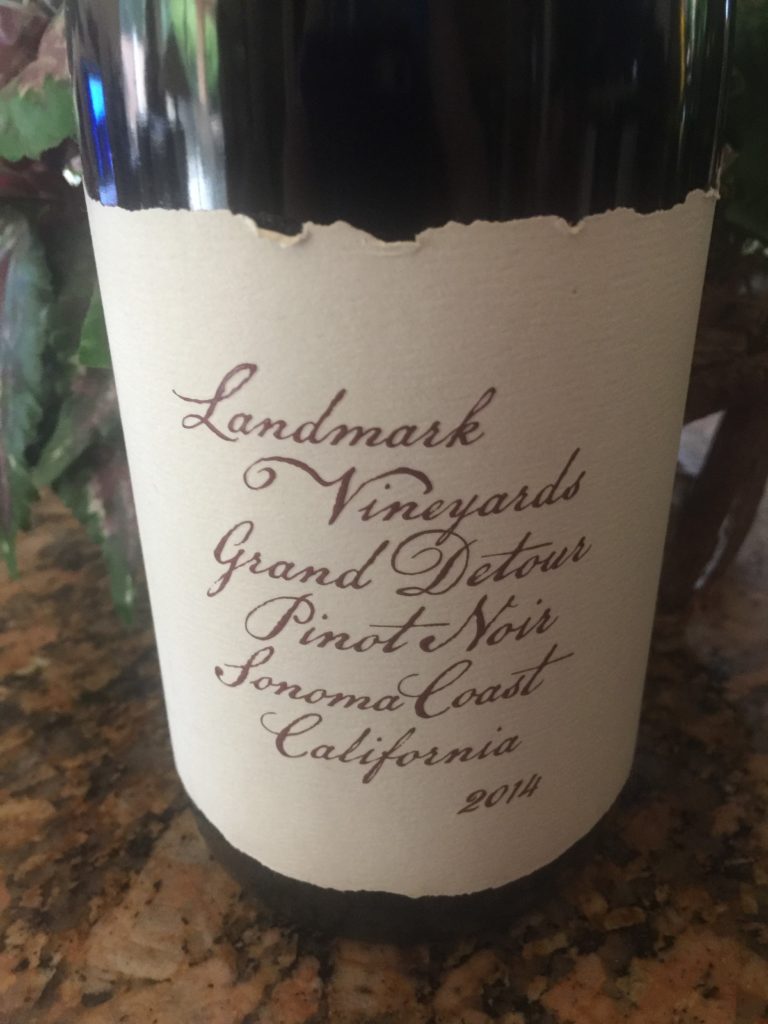
Sonoma Coast AVA
(Photo by Linda Rakos)
Patz & Hall
Donald Patz and James Hall met in the 1980s while working at Flora Springs Winery. Donald was a national sales manager and James was an assistant winemaker. They became close friends and decided that they wanted to make their own wine from elite small vineyards. In 1988 they teamed up with their wives and business partners, Heather Patz and Anne Moses, put up $5000, and Patz & Hall was born. Now Patz & Hall is one of California’s most highly regarded wineries with a really good portfolio of single-vineyard wines. They specialize in Chardonnay and Pinot Noir.
By the late 1990s, they were able to focus 100% of their attention on making and selling their wines. Since they had no vineyards, no tasting room, no office and no employees, they decided to move to the next level and opened a tasting room and office in a warehouse in Napa which is where we first found them in 2007. They bought quality grapes from Hyde, Hudson, Dutton, Zio Tony, Gap’s Crown, Alder Springs and Pisoni. Their wines frequently earn outstanding ratings. About that time we also met Donald Patz on one of his marketing tours and enjoyed a tasting with him of all their wines at one of our local restaurants.
With the business going well, they moved to a new facility in Sonoma with a visitor’s center and winemaking facility designed by Hall. In fact business was going so well that Patz & Hall soon reached an agreement with Ste. Michelle Wine Estates to purchase the company. Ste. Michelle wanted to expand into Sonoma, and the partners agreed to stay on after the sale, selling the brand, inventory and winery equipment to the new owners. The two families still continue making wine together after 30 plus years.
2016 Patz & Hall Chardonnay, Sonoma Coast AVA
Patz & Hall Sonoma Coast Chardonnay is made from vineyards on the coastal side of Sonoma County. This one was aged on lees in 32% new Burgundy barrels. The winemaker says it should have aromas and flavors of pineapple, guava, honeydew and lime zest plus notes of toasted almond macaroons, cinnamon and sugar cookies. We should also enjoy a long layered finish. It received 90-93 points as have the previous vintages. Since most of their wines are from single vineyards, we are anxious to give this non-single vineyard offering a try. We recently purchased this bottle from wine.com for $39.
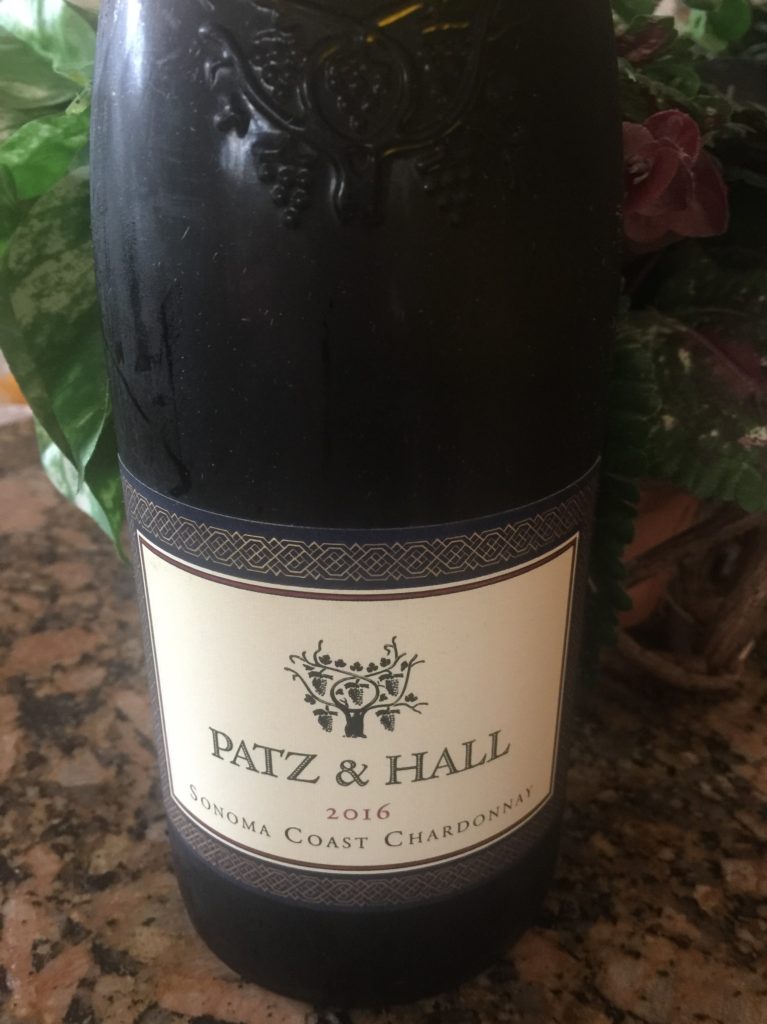
Sonoma Coast AVA
(Photo by Linda Rakos)
Sonoma Mountain AVA
3 wineries in the southern part of Sonoma County with 667 acres established in 1985 as the 8th AVA
Top varietals: Cabernet Sauvignon and Chardonnay
The Sonoma Mountain AVA is centered in the Sonoma Mountains in the northwest area of the greater Sonoma Valley AVA which almost surrounds it. On the west side there are cool winds and fog coming in from the Petaluma Gap. It also overlaps Bennet Valley AVA on the northwestern end. Sonoma Mountain AVA is able to produce a wide range of varieties such as Grenache, Grüner Veltliner, Pinot Noir, Sauvignon Blanc, Semillon, Syrah and Zinfandel in addition to the top varietals of Cab and Chardonnay all mainly due to the diverse micro-climates. You will find a series of hills with groves of live oak trees on the west side of the mountain; however you may think you are looking at a different mountain when you see the rugged forests on the other side looking over the Valley of the Moon. Sonoma Mountain is home to the town of Glen Ellen and was once the home of that famous author Jack London. You can stay at the Jack London Lodge like we did and visit the Jack London State Historic Park.
You should not miss visiting the Benziger Family Winery when in this region. The Benzigers began a transition to biodynamic farming in 1995 and in 2000 the Estate was officially certified as a biodynamic farm by the Demeter Association. You can take the biodynamic farm tram tour and even see a display describing every aspect of the biodynamic farming techniques that were developed in the 1920s by Rudolph Steiner. For example, you can get a crash course in the use of “horn manure” that is made from cow manure, then buried inside a cow horn during the winter months.
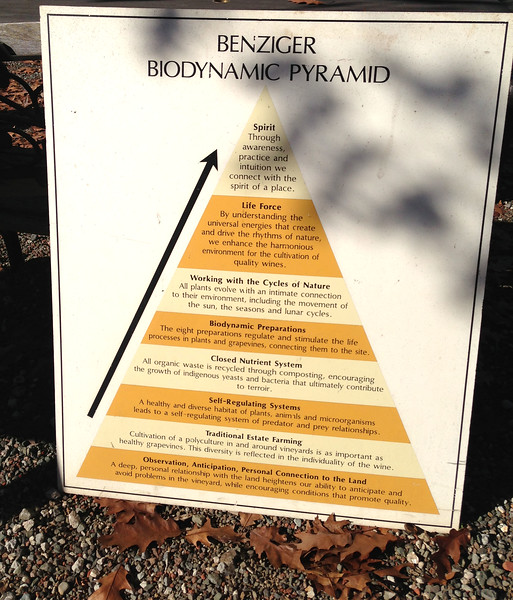
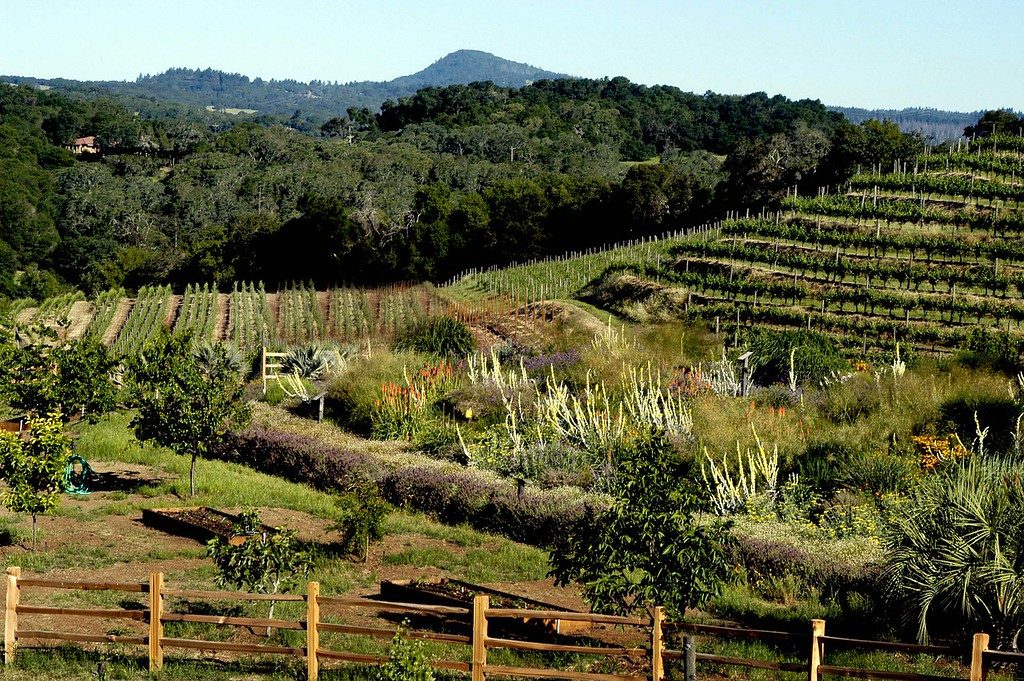
Benziger 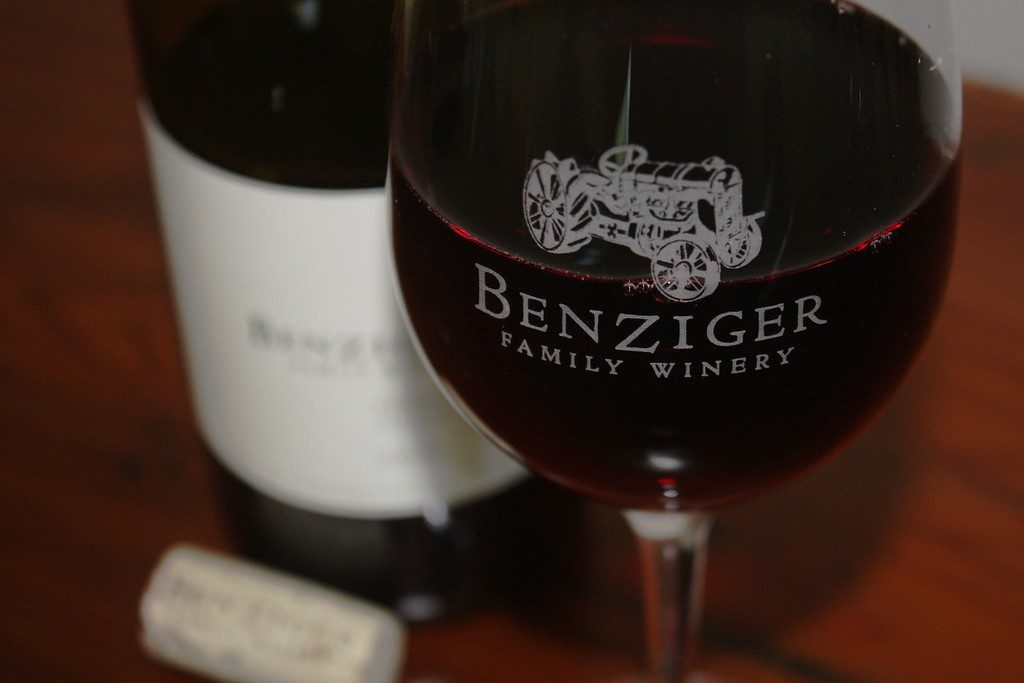
Photos credit www.sonomacounty.com
Laurel Glen Vineyards
Another notable producer of Cabernet Sauvignon on Sonoma Mountain is Laurel Glen Vineyards. Laurel Glen started out in 1977 as three acres of Cabernet Sauvignon vines on top of the mountain ranging from 850 to 1000 feet high. The first wine labeled Laurel Glen was produced in 1981. There were 14 acres under vine when the property was sold in 2011. There are nine separate blocks, all planted in Cabernet Sauvignon, made up of red sandy soil of volcanic origin, and the property looks down on the town of Glen Ellen. All of the viticulture is now strictly organic, and in 2014 the vineyard became CCOF organic certified. Their goal is to enhance the soil quality, minimize use of irrigation water and to preserve the wild spaces surrounding the property. They plant cover crops such as sweet pea, daikon radish and mustard to minimize soil erosion and control weeds. No synthetic pesticides or herbicides are used and their farming methods to minimize runoff into streams help to sustain the salmon and steelhead population. The winemaking philosophy is minimal handling, using gravity flow when possible and keeping all lots separate. The wines are aged in Taransaud French oak and Canton American oak barrels – the percentage of each and length of aging depending upon the wine lot.
2014 Laurel Glen Vineyard Estate Cabernet Sauvignon, Sonoma Mountain AVA
The 2014 Laurel Glen Vineyard Estate wine was made after the ending of a 4 year drought in 2016. 2014 was one of those years that doesn’t happen very often in which quality and quantity of the fruit were both excellent. The fruit was high quality despite the drought and a 6.0 magnitude earthquake in August! There were 1,220 cases bottled in July 2016. Tasting notes from the winemaker Randall Watkins said “Beautiful fragrance of sweet boysenberry and dark raspberry fruit, mineral and smoke. Hints of espresso, charred oak and baking spices. Impressive on the finish, maintaining elegance and finesse amid firm mountain tannins. Fine, long finish”. it received scores between 92-95 points as did the previous vintages. This bottle was recently purchased from wine.com for $75.
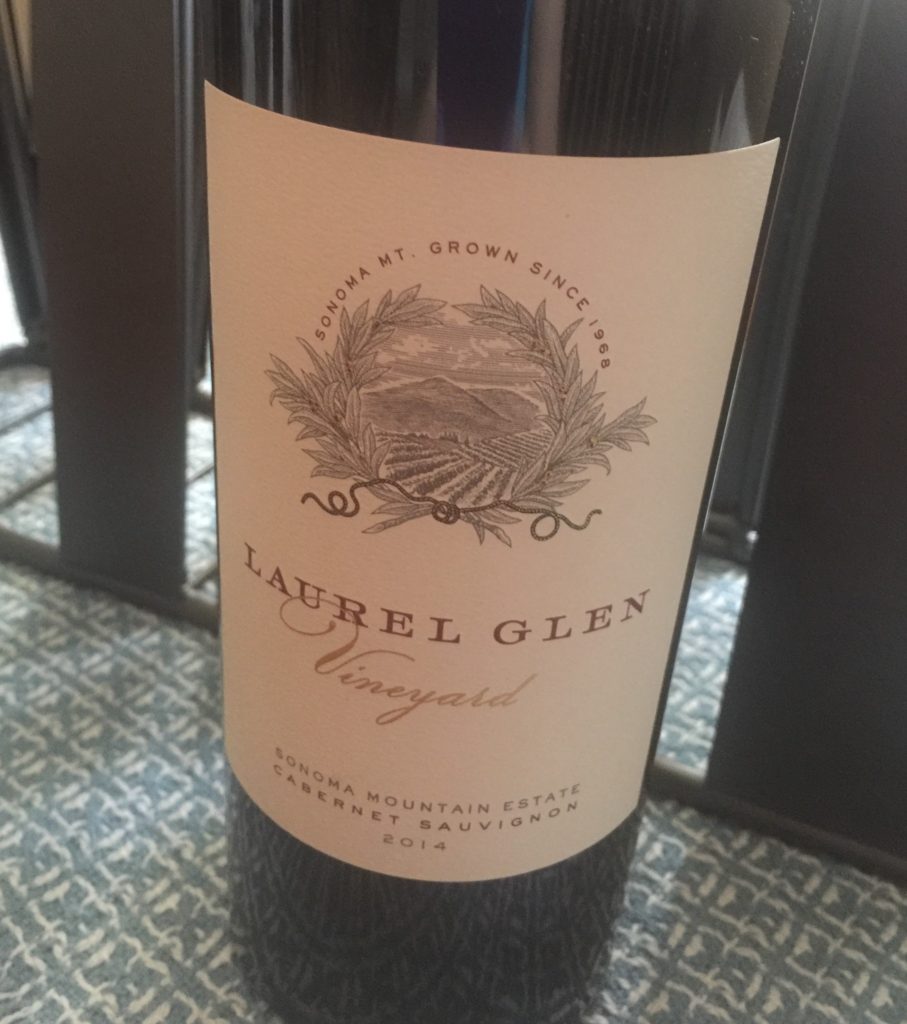
Sonoma Mountain AVA
(Photo by Linda Rakos)
Sonoma Valley AVA
100 plus wineries in the southern part of Sonoma County with 5565 acres established January 4, 1982 as the 1st AVA of Sonoma County. There are now over 10,000 acres of vineyards.
Top varietals: Chardonnay, Cabernet Sauvignon, Pinot Noir and Zinfandel
The Petaluma Gap to the west and the Santa Rosa plain to the northwest help to produce a wide range of wines in Sonoma Valley. The valley is also bordered by two mountain ranges: the Mayacamas to the east and Sonoma Mountains to the west. It is here you find such interesting little places as Glen Ellen, Valley of the Moon and Kenwood. You will probably find the widest range of wine grapes here than any other wine growing region in the County.
Northern California viticulture began here in this valley. The first vineyards were planted in Sonoma Valley by Franciscan friars at Mission San Francisco Solano in 1823. Buena Vista Winery was later established by Agoston Haraszthy in 1857, and became one of the first successful wineries in the State. There were 256 wineries by 1920 then along came Prohibition which took a toll on all of the wine regions. By 1969 there were still just 58 bonded wineries in Sonoma Valley. It became the 8th designated AVA in 1981, and by 2005 the number of wineries was back to pre-Prohibition numbers with 254.
Kunde Family Winery sits on 1,850 acres and has been farmed by the same family for five generations. Also in the valley are Chateau St. Jean, famous for their Cinq Cepages, and Ledson Winery & Vineyards that looks very much like a gothic castle.
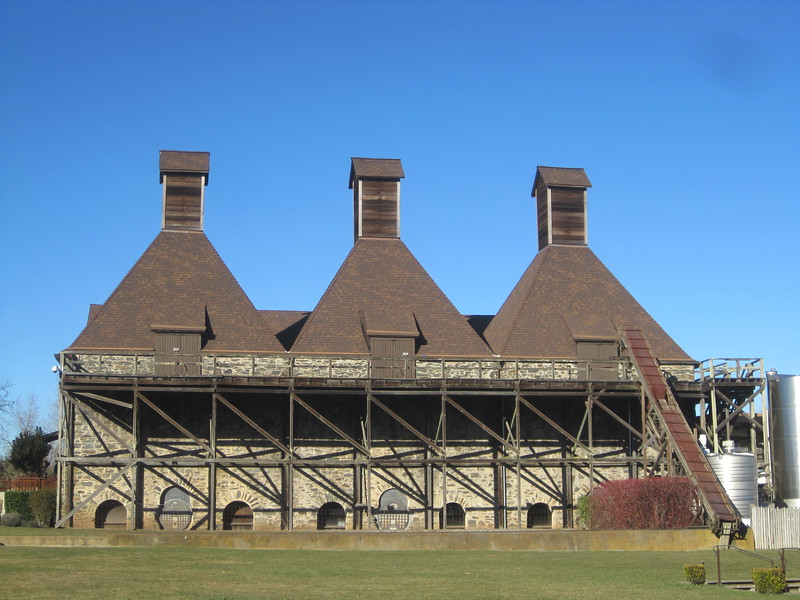
Hop Kiln 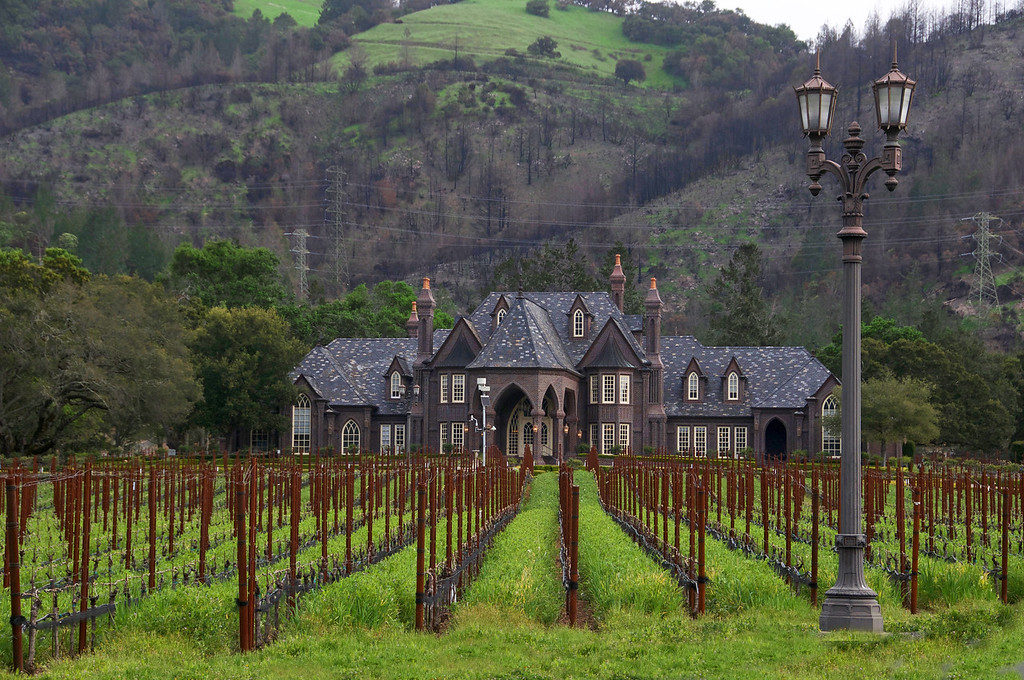
Ledson 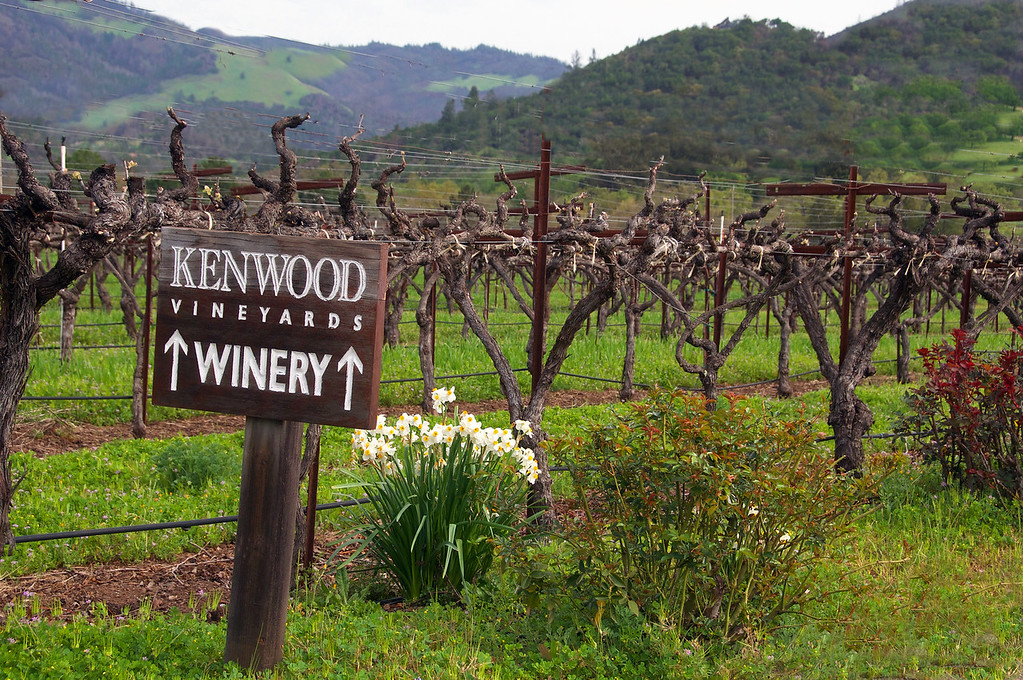
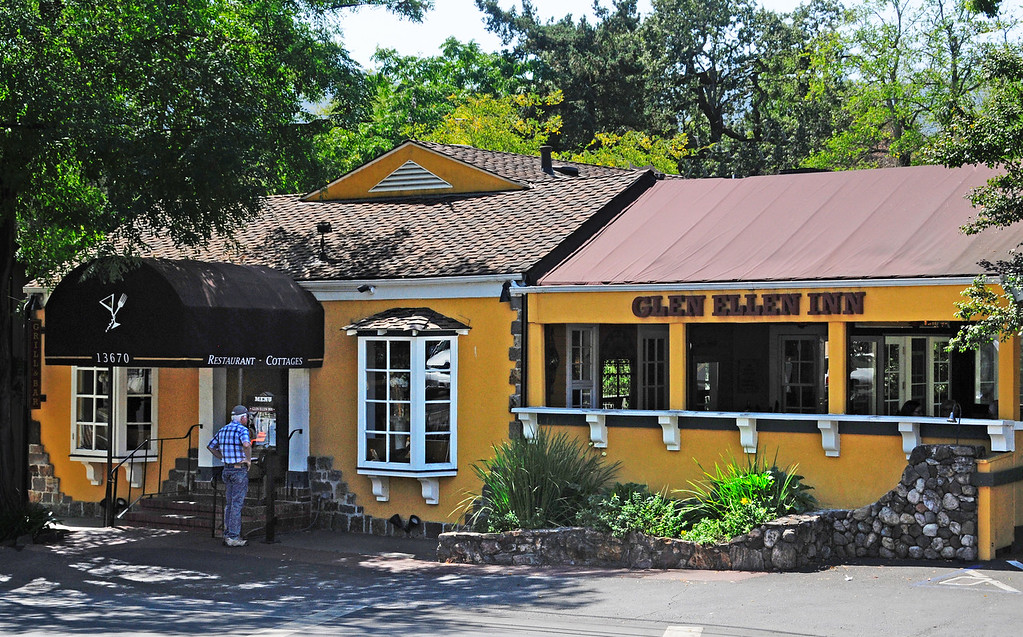
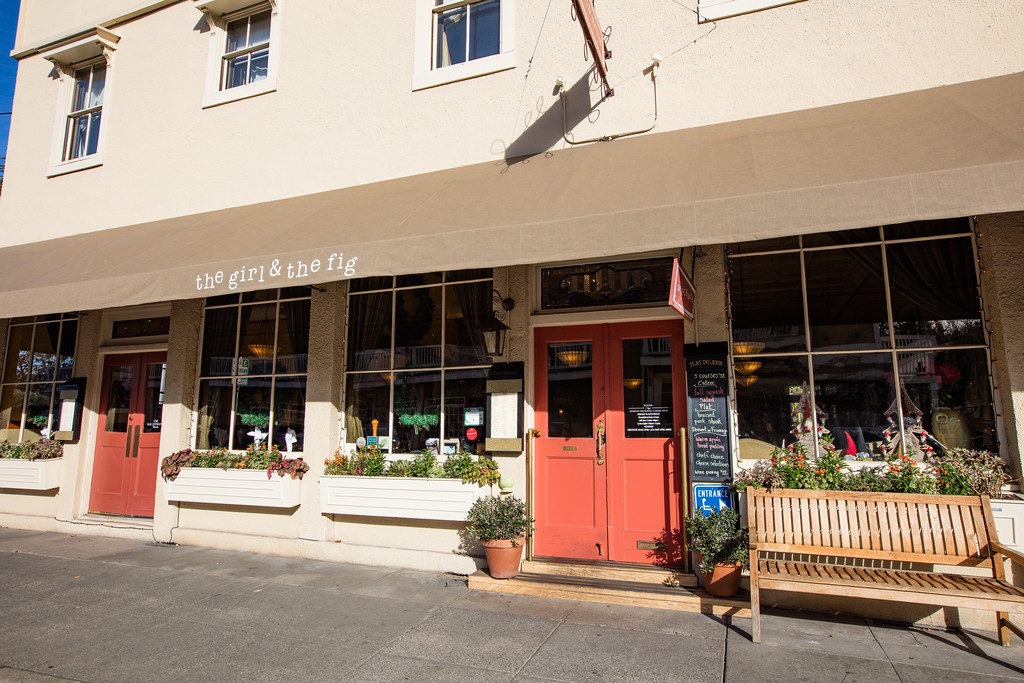
Photos credit www.sonomacounty.com
Sustaining the future for winemaking
“Sustainability” is no longer just a passing fad. It’s become a necessity for winemaking in California. Long term droughts, wildfires and unusually high temperatures have made everyone take notice. Leaders in the industry have taken initiative to do something about it, especially those in Sonoma County. In fact, Sonoma County is a global leader! Sonoma County has committed to become the first 100% sustainable wine region in 2019. The Sonoma County Sustainability Program is well on the way. According to the Sonoma County Winegrowers’ 4th Annual Sustainability Report, 72% of Sonoma County vineyards have already been certified sustainable, and their website claims a 99% completion as of December 2019. The Sonoma County Winegrape Commission, also known as Sonoma County Winegrowers, was established in 2006 as a non-profit marketing and educational organization for the promotion and preservation of Sonoma County as a worldwide premier grape growing region. Their members are family farmers whose goal is to produce high quality grapes that are the base for making world class wine, sustain the land for the future, and preserve the land, air and water where they live. The SCWC is leading this charge for the 1800 wine growers represented in the county. Most of them are multi-generational family businesses, many who have been following sustainable practices for years. More than 40% of Sonoma vineyard parcels are less than 20 acres and 80% are less than 100 acres. The Sonoma County Vintners organization represents more than 200 wineries throughout the county.
Photos credit www.sonomacounty.com
Sonoma: My personal wine star!
I really do enjoy Napa Valley wines. And I also enjoyed all of our visits to Napa Valley wineries and tasting rooms for some exceptionable and unforgettable experiences. However, this is the voice of a “retired winelover” who just can’t buy a bottle of Napa cab for several hundred dollars. Napa Valley is more like a “Disneyland” for winelovers, and there is nothing wrong with that. Then there is Sonoma County which I fell in love with on our first visit. The Sonoma experience is more about driving down a dirt road, drinking a bottle of wine with the winemaker and/or their family in a rustic setting and picking out a deli sandwich at the Dry Creek General Store type of experience. You can buy excellent wine from Sonoma County and in many instances, it will be a highly rated bottle quite possibly a Pinot Noir, Cabernet Sauvignon, Zinfandel or Chardonnay at prices far less than the wines of Napa Valley. Many wineries these days have sold to much larger wine conglomerates, and we certainly don’t dislike them for making money! However so many of the Sonoma wineries are still multi-generational family owned, and they are very concerned about keeping the land and business alive for their future generations plus the rest of the world. Still not sold on my wine star? It’s pretty simple, but there are choices – if you buy more expensive wine and want the best of the best, visit Napa and by all means buy the wine! If you are into a more laid-back lifestyle and buy more reasonably priced wines, then please support my wine star, the one selected as the “Wine Star Award Wine Region of the Year” – Sonoma County.
If anyone reading this article has found even a few small tidbits of interesting information or has enjoyed reading the whole “never ending” thing, then my mission has been accomplished. Selfishly my objective is to personally gain new knowledge. Preparing and writing about a topic is like following a recipe to me: so many parts research, so many parts personal experience, and many parts of love about wine, where it comes from, and who makes it! My research starts out with numerous internet articles, several books such as “The Wine Bible” by Karen MacNeil, 2nd Edition; “Wine Folly: the Master guide” by Madeline Puckette and Justin Hammack, Magnum Edition; and a very special addition for this article: “Volcanic Wines: Salt, Grit and Power” by John Szabo, MS. I have previously acknowledged the Sonoma County Tourism office for all of their information available on the internet plus permission to use photos from their media library, but really wish to thank them again! I try my best to present accurate information, but by the time I hit the “publish” button, it may already be out of date. If you discover anything incorrect, please let me know and I will make revisions.
As always, I would like to encourage you to drink adventurously and never stop learning about new wines or wine regions. Who knows where our next adventure will take us?
Linda
LFRakos@gmail.com
forkandcorkdivine.com
12.17.19 Revised 1.6.2020

